2nd Session of the Intergovernmental Conference (IGC) on the conservation and sustainable use of marine biodiversity of areas beyond national jurisdiction (BBNJ)
Summary Highlights
25 March - 5 April 2019 | UN Headquarters, New York
Highlights for Friday, 5 April 2019
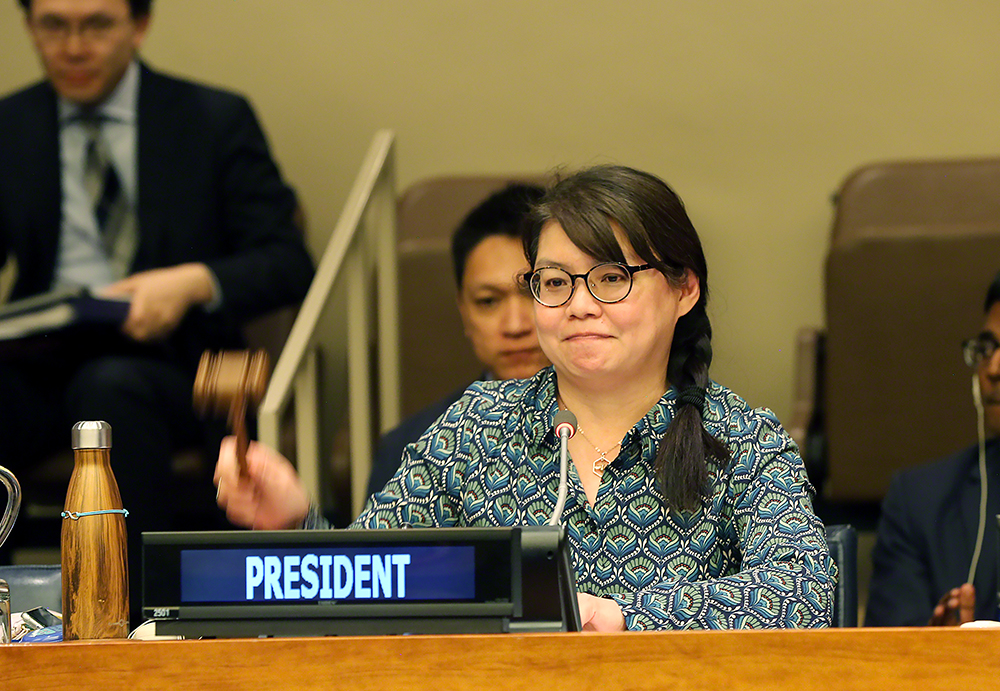
Delegates at the second session of the Intergovernmental Conference (IGC) on the conservation and sustainable use of marine biodiversity of areas beyond national jurisdiction (BBNJ) met on Friday, 5 April 2019 for the last day of IGC-2. They finalized their discussions on cross-cutting issues, heard reports from the informal working group facilitators, and discussed the way forward.
They shared views on:
• The nature of the text to be discussed at IGC-3, with some favoring treaty text, and others preferring a streamlined document that eliminates options that garnered no agreement at IGC-2; and
• The format of the next meeting, with many underlining the need for parallel meetings, and small group meetings (informal-informals) to further progress.
As the meeting drew to a close, the sense of urgency to begin treaty-based negotiations was palpable. During the final plenary, IGC President Rena Lee outlined her plan to develop a concise document containing treaty text to facilitate focused negotiations at IGC-3. She closed the meeting at 5:50 pm.
The Earth Negotiations Bulletin summary and analysis of IGC-2 will be available on Monday, 8 April 2019.
+ Visit the web coverage for Friday, 5 April 2019
IISD Reporting Services, through its Earth Negotiations Bulletin (ENB) Meeting Coverage, has provided daily web coverage, daily reports, and a summary and analysis report from BBNJ IGC 2. The summary and analysis report is now available in HTML and PDF.
Photos by IISD/ENB | Francis Dejon
For photo reprint permissions, please follow instructions at our Attribution Regulations for Meeting Photo Usage Page.
Informal Working Group on Cross-Cutting Issues
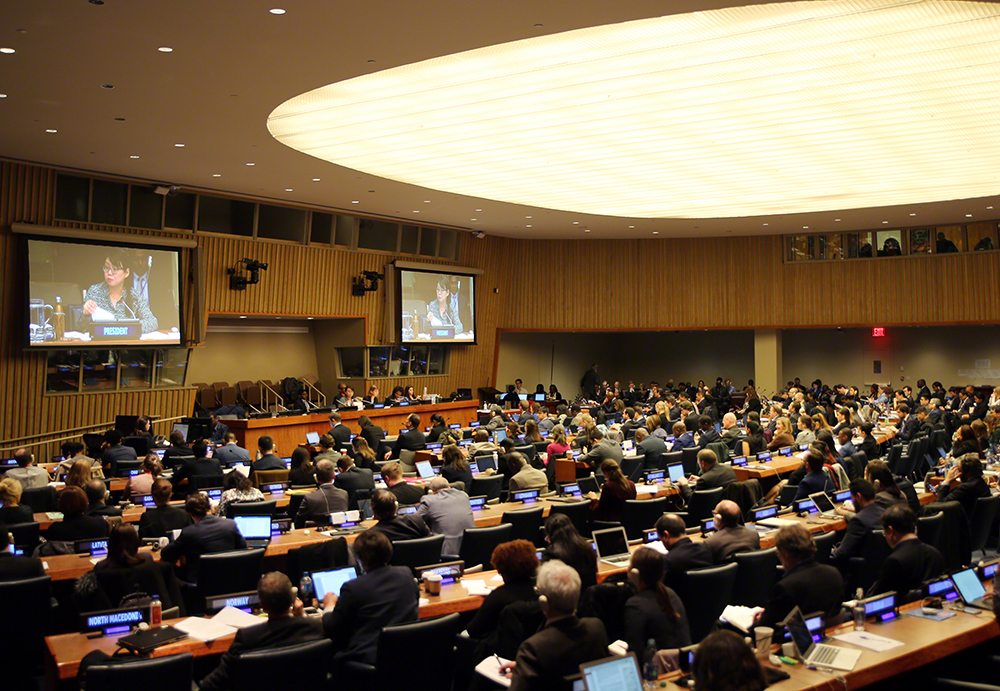
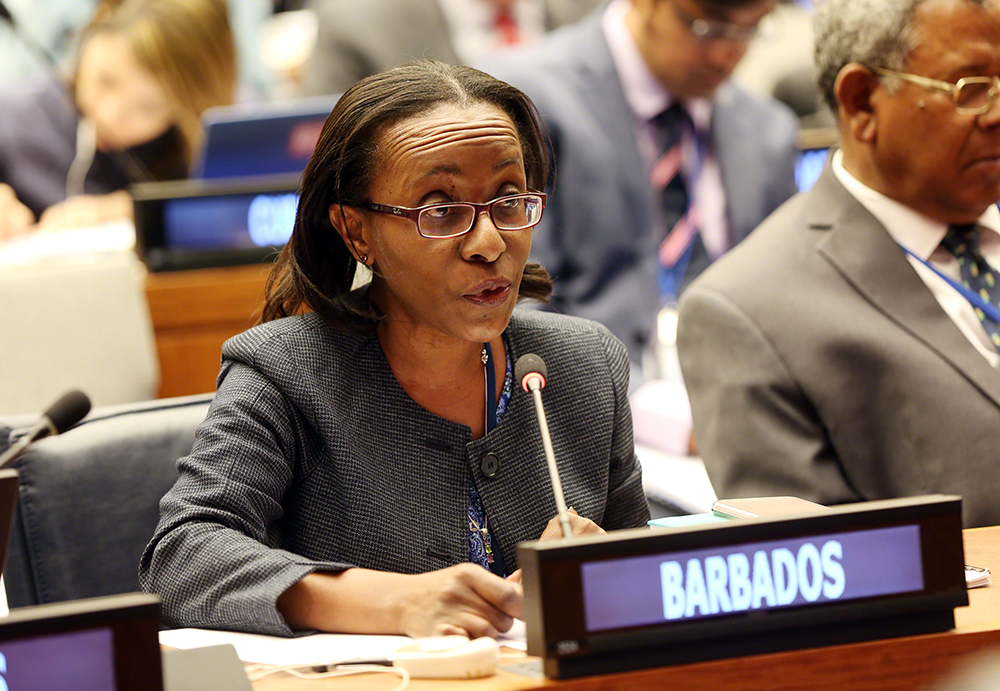
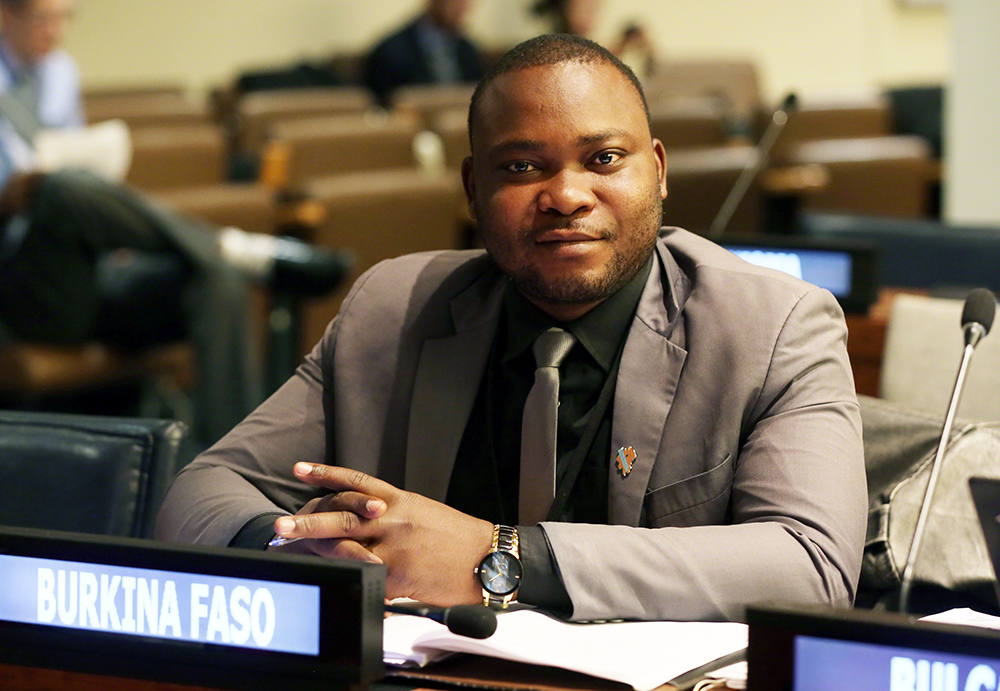
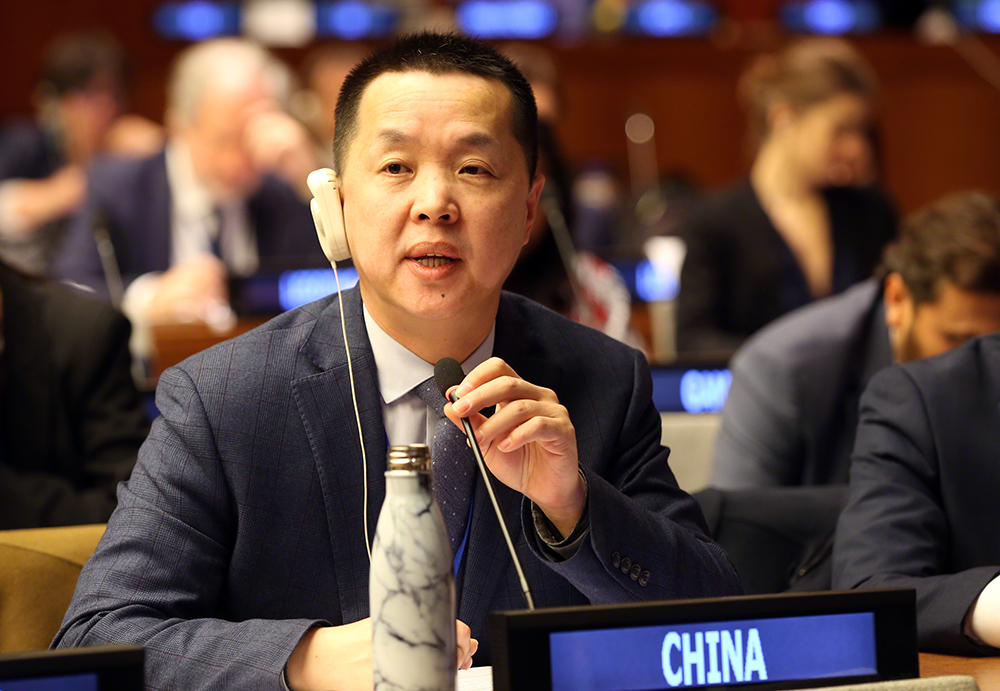
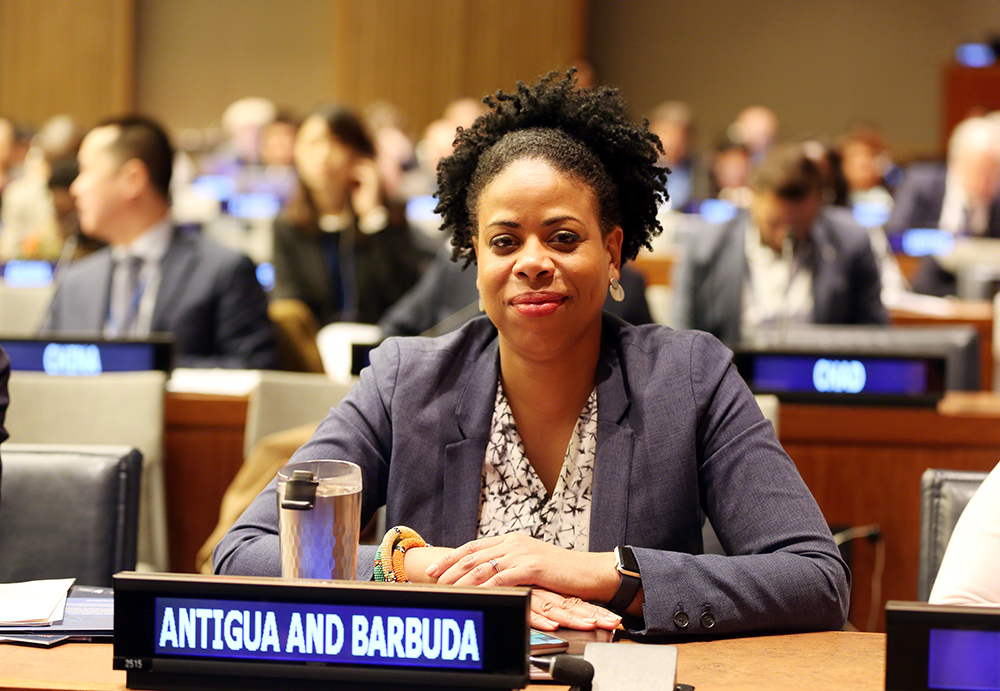
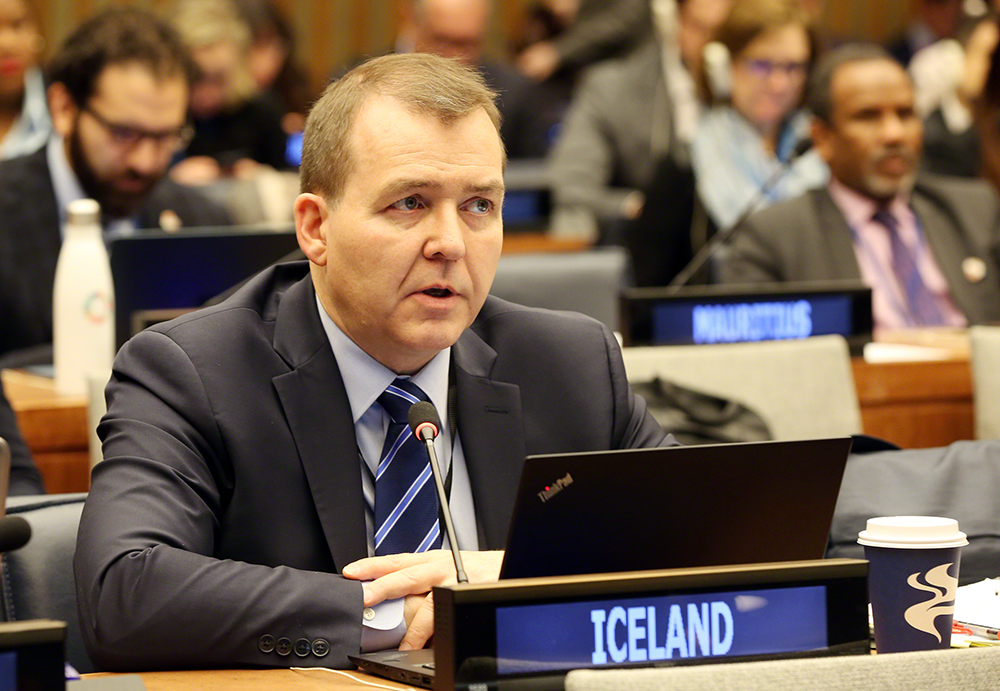
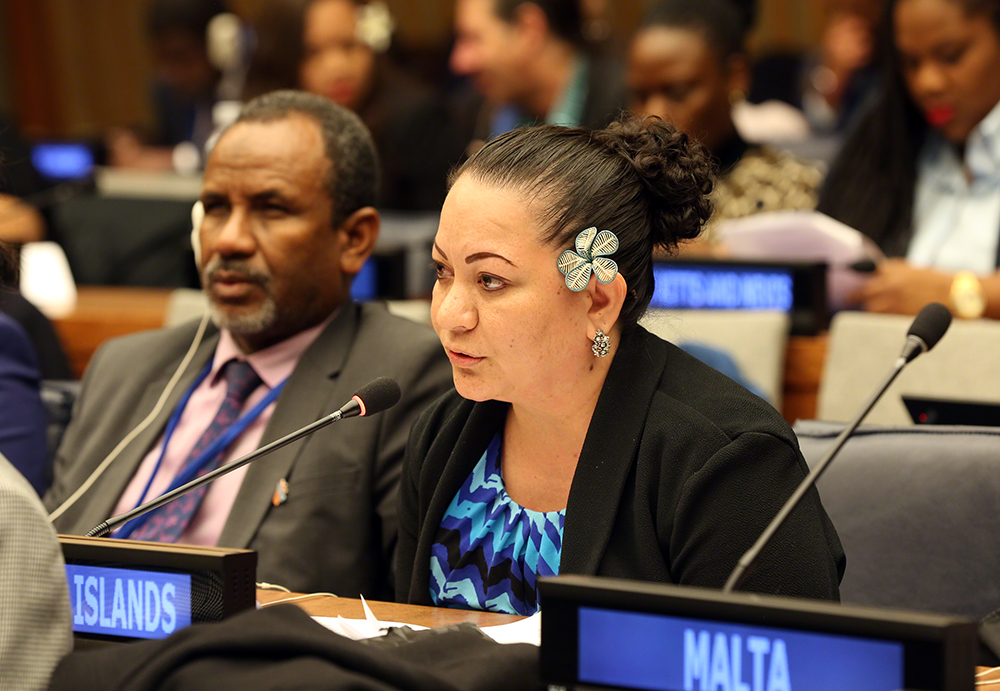
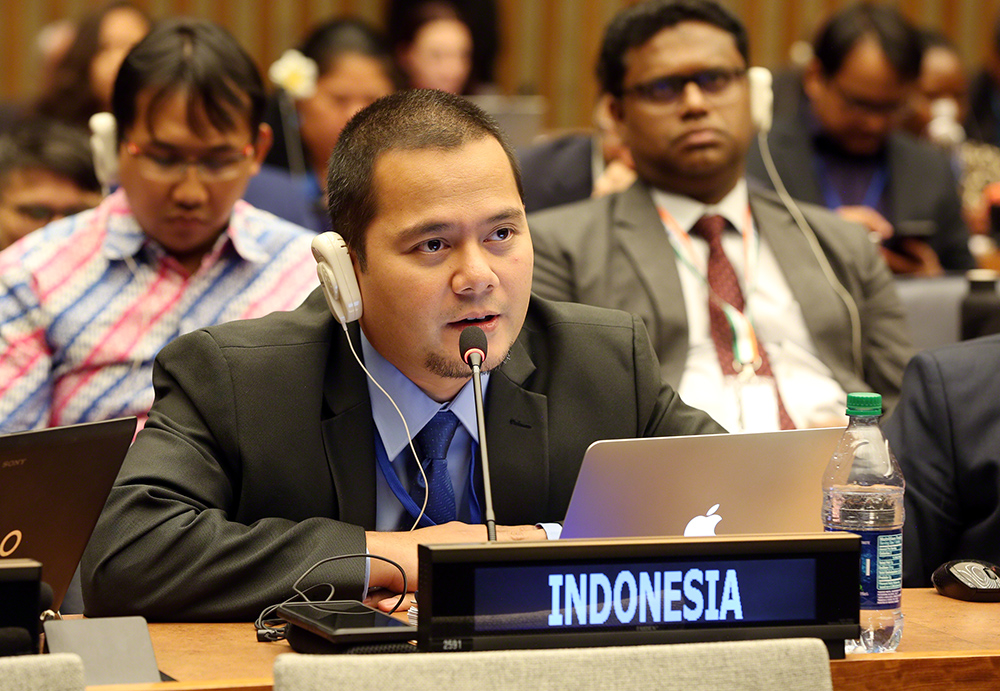
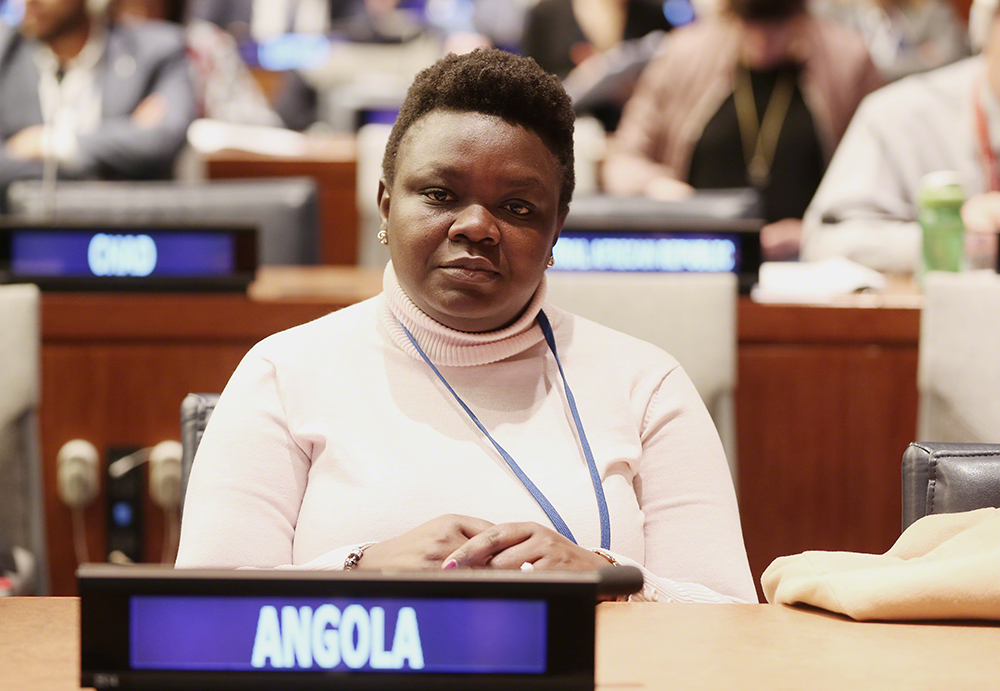
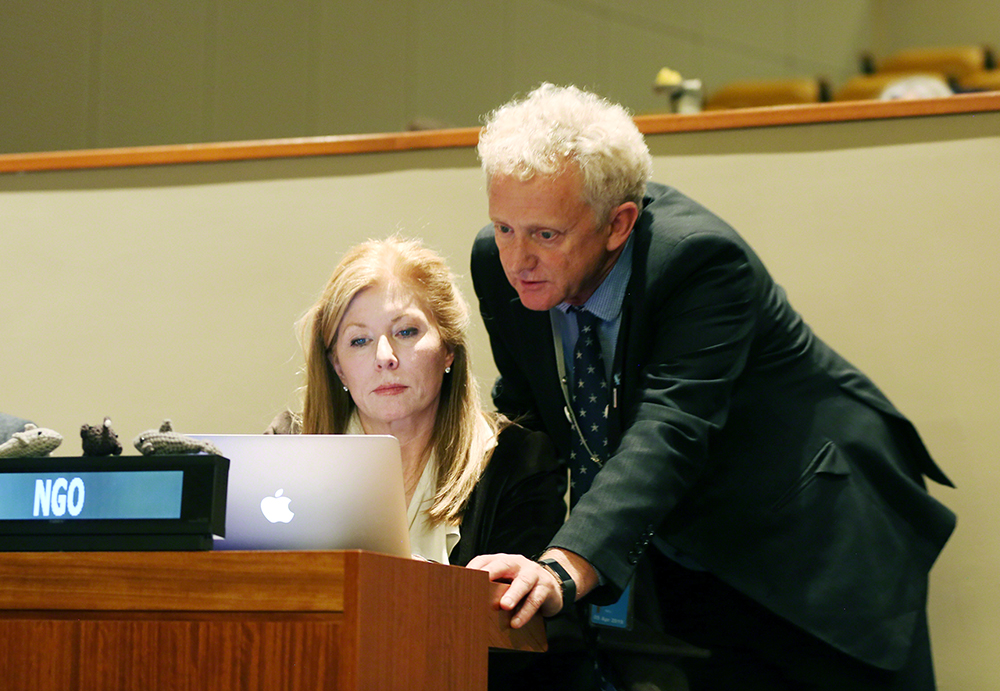
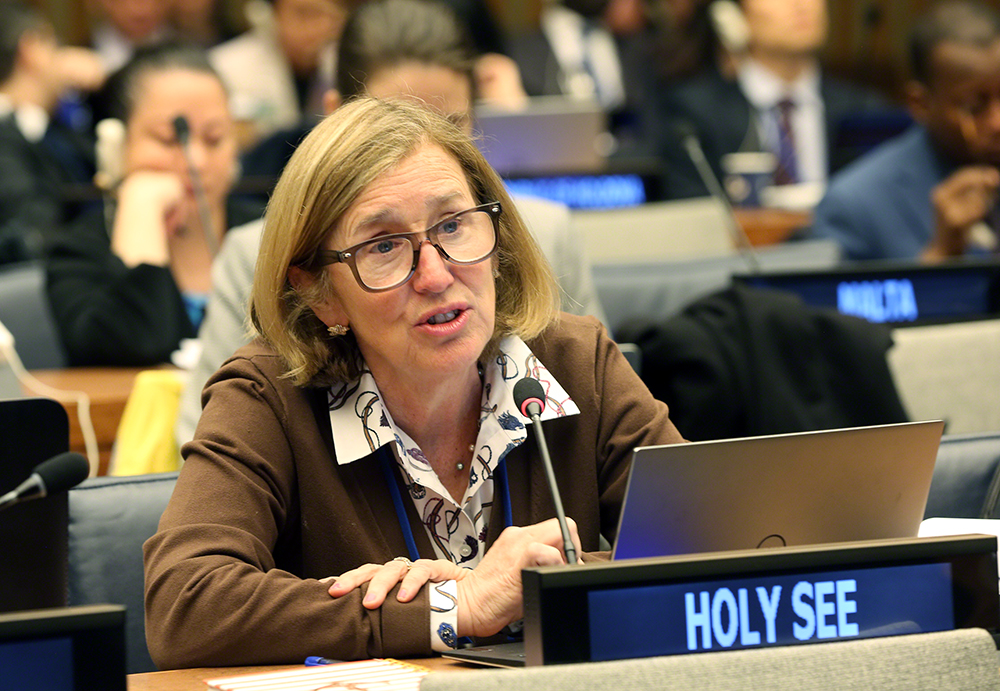


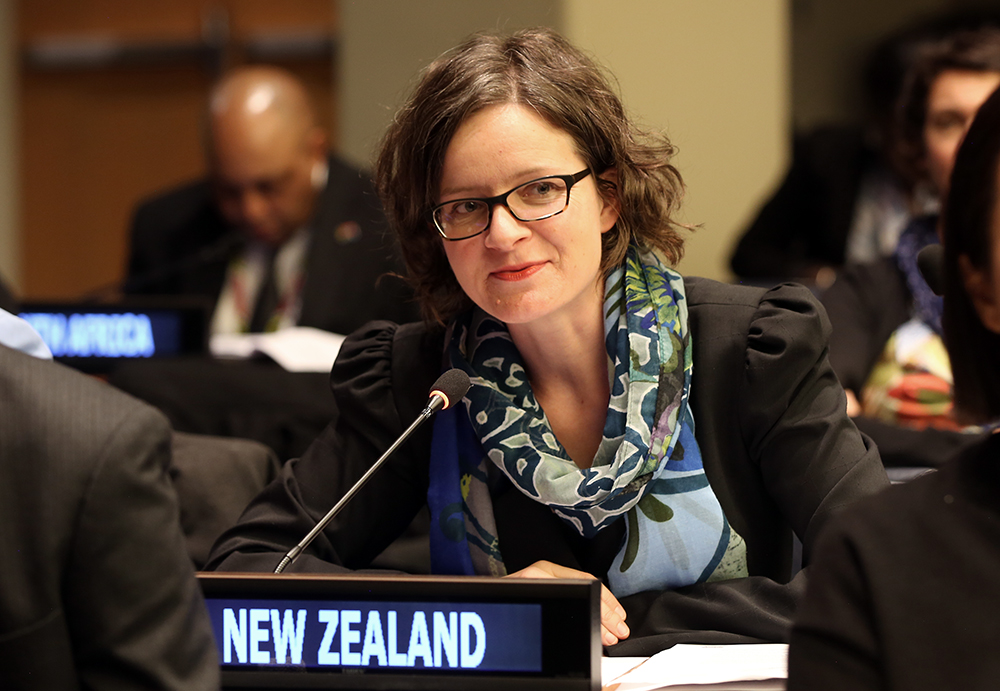
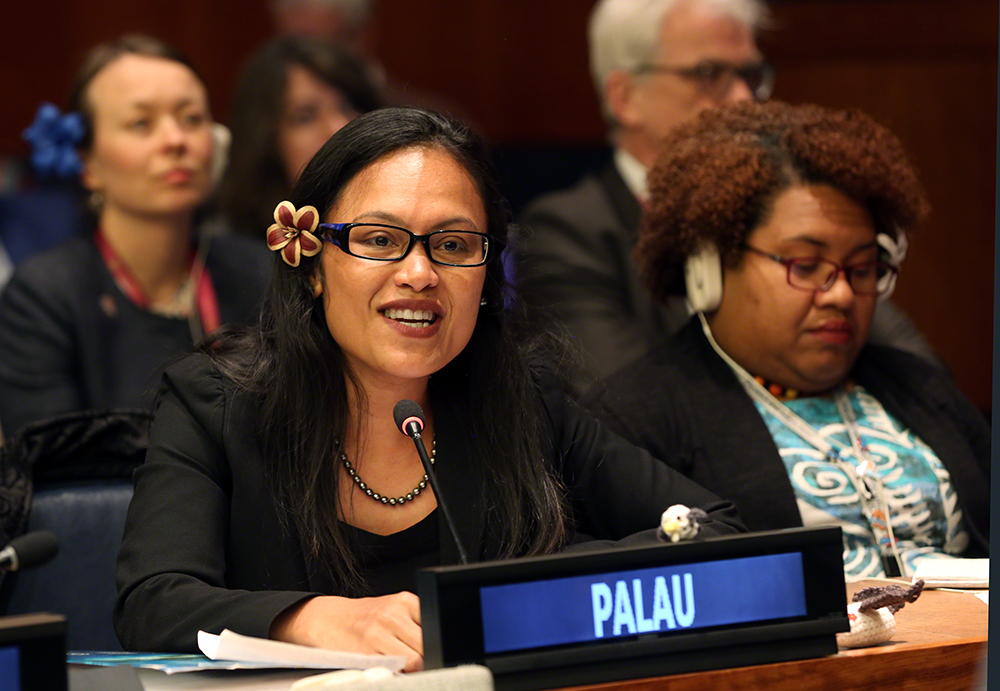
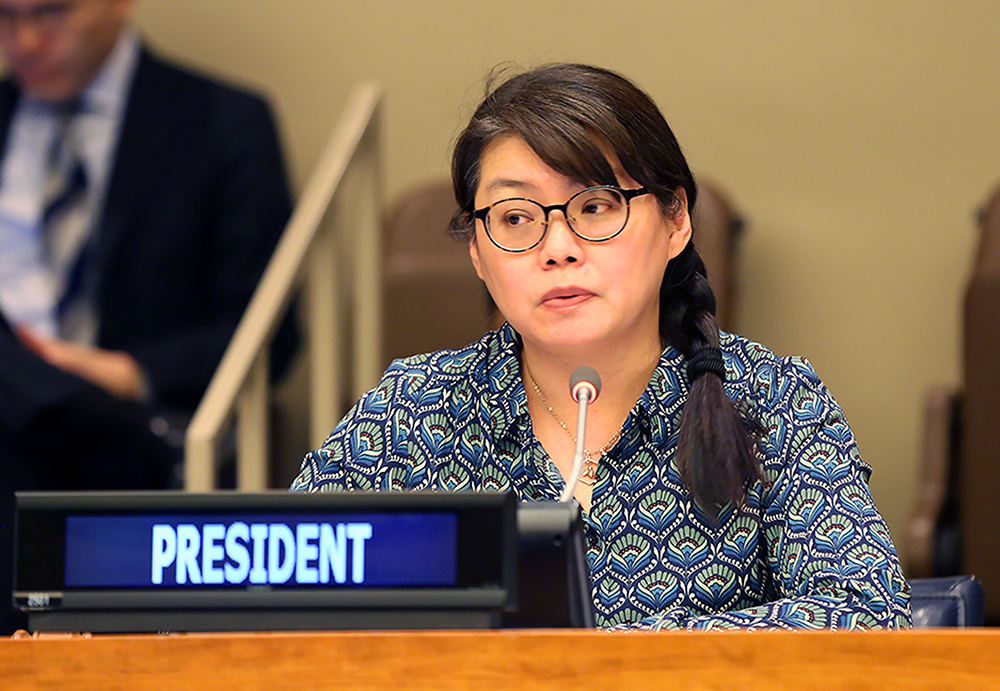
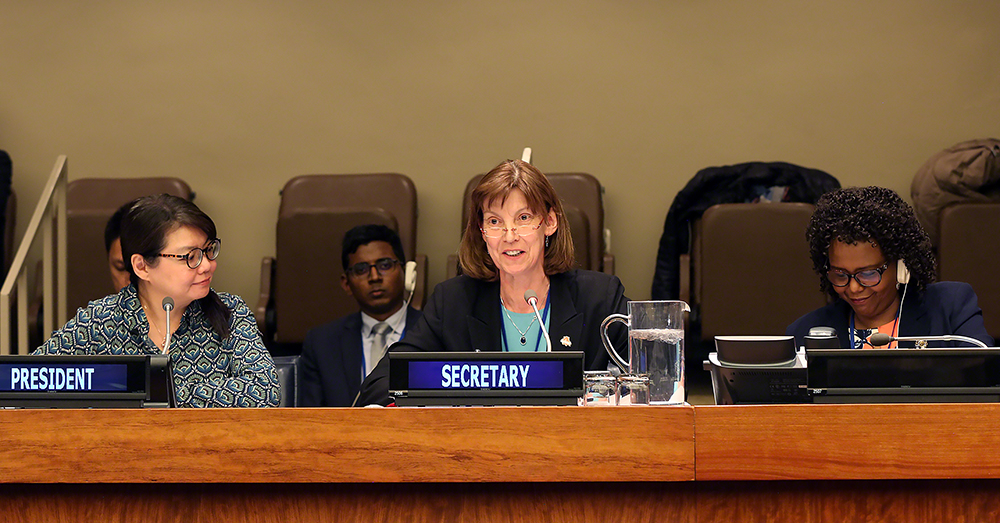
Highlights for Thursday, 4 April 2019
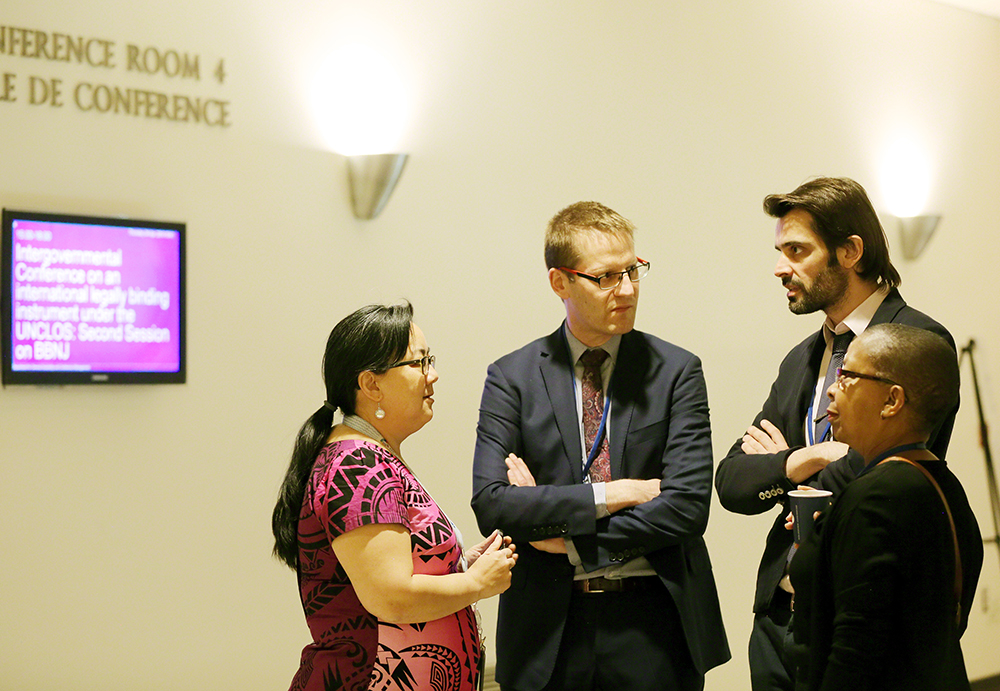
Delegates at the second session of the Intergovernmental Conference (IGC) on the conservation and sustainable use of marine biodiversity of areas beyond national jurisdiction (BBNJ) convened in an informal working group on cross-cutting issues on Thursday.
They considered:
- the clearinghouse mechanism;
- review, including financial resources, compliance and liability;
- final clauses;
- definition of key terms;
- general principles and approaches;
- scope.
During the lunch break, delegates attended the last side-events of the meeting: “30x30: A Blueprint for Ocean Protection - and how the global ocean treaty can deliver that,” presented by Greenpeace; “Measuring progress in the implementation of Sustainable Development Goal 14 on the basis of the indicator for target 14.c: UN-Oceans’ proposed methodology,” presented by UN-Oceans.
In the corridors, some delegates considered the trek through the labyrinth of options in parts of the document as “a painful, but essential exercise” to further develop mutual understanding. Others were less enthusiastic: at the end of the session, two veterans said that progress felt like “one step forward, two steps back,” or “tap dancing on the spot.”
For extensive details on the day’s negotiations and to hear what delegates said in the corridors, see our daily Earth Negotiations Bulletin.
+ Visit the web coverage for Thursday, 4 April 2019
IISD Reporting Services, through its Earth Negotiations Bulletin (ENB) Meeting Coverage, has provided daily web coverage, daily reports, and a summary and analysis report from BBNJ IGC 2. The summary and analysis report is now available in HTML and PDF.
Photos by IISD/ENB | Francis Dejon
For photo reprint permissions, please follow instructions at our Attribution Regulations for Meeting Photo Usage Page.
Informal Working Group on Cross-Cutting Issues
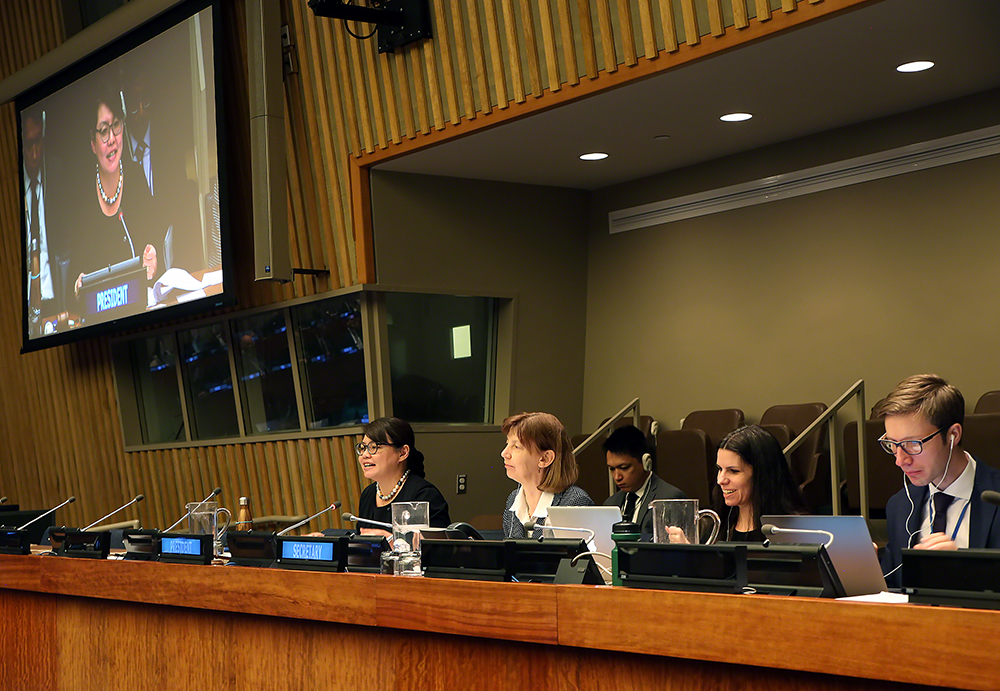
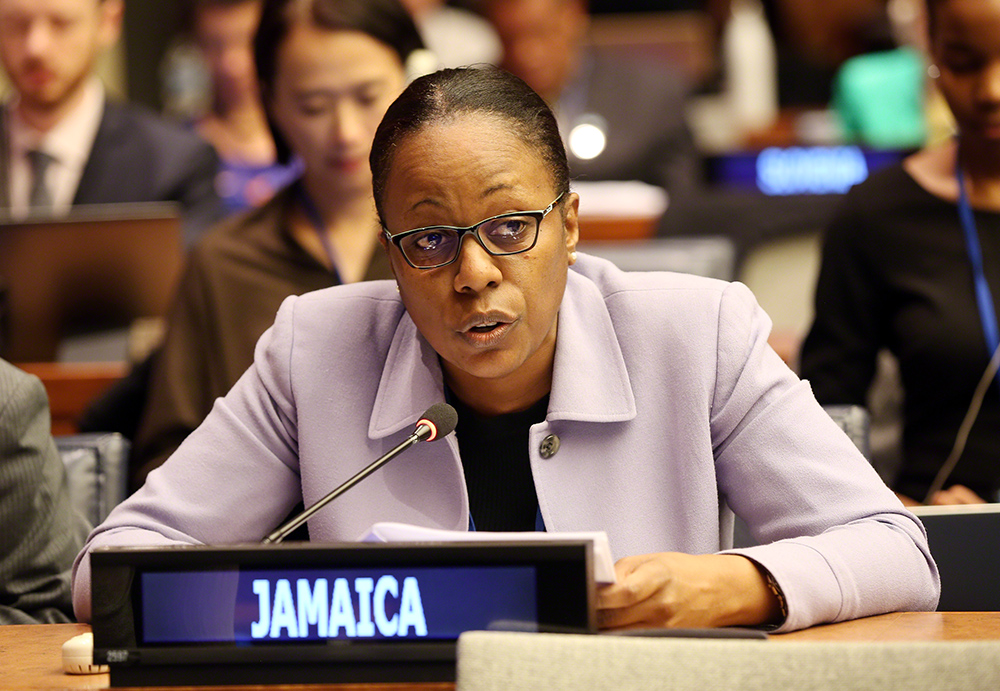
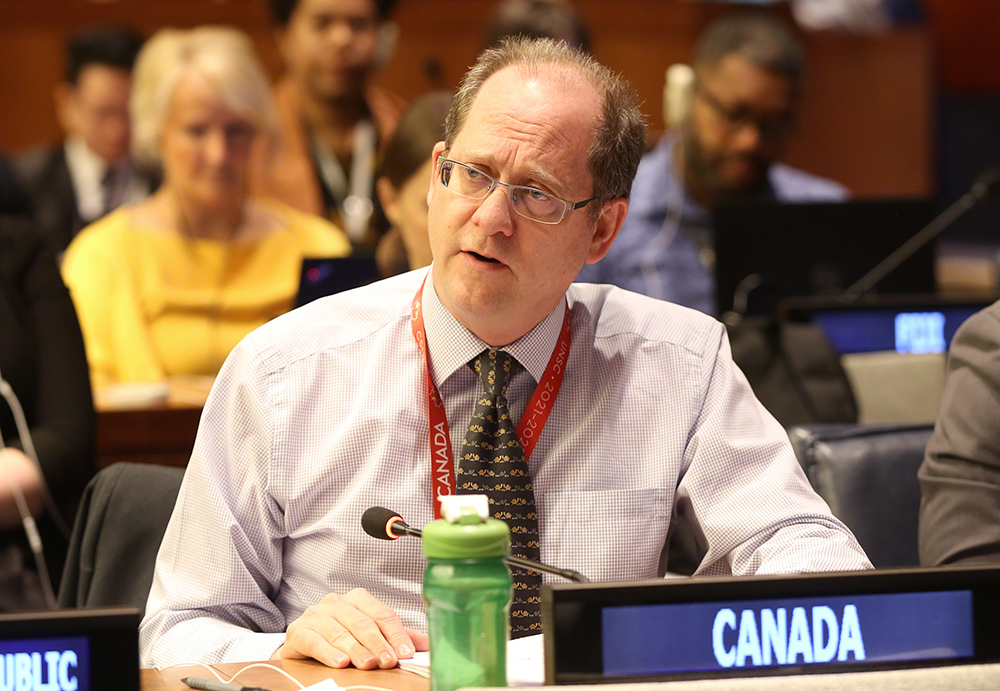
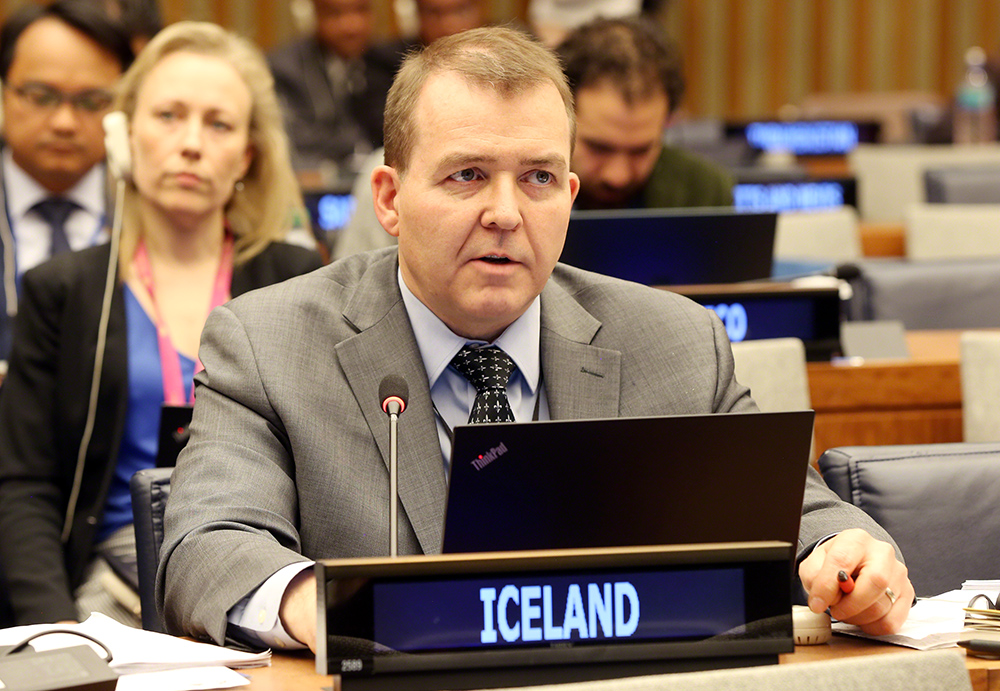
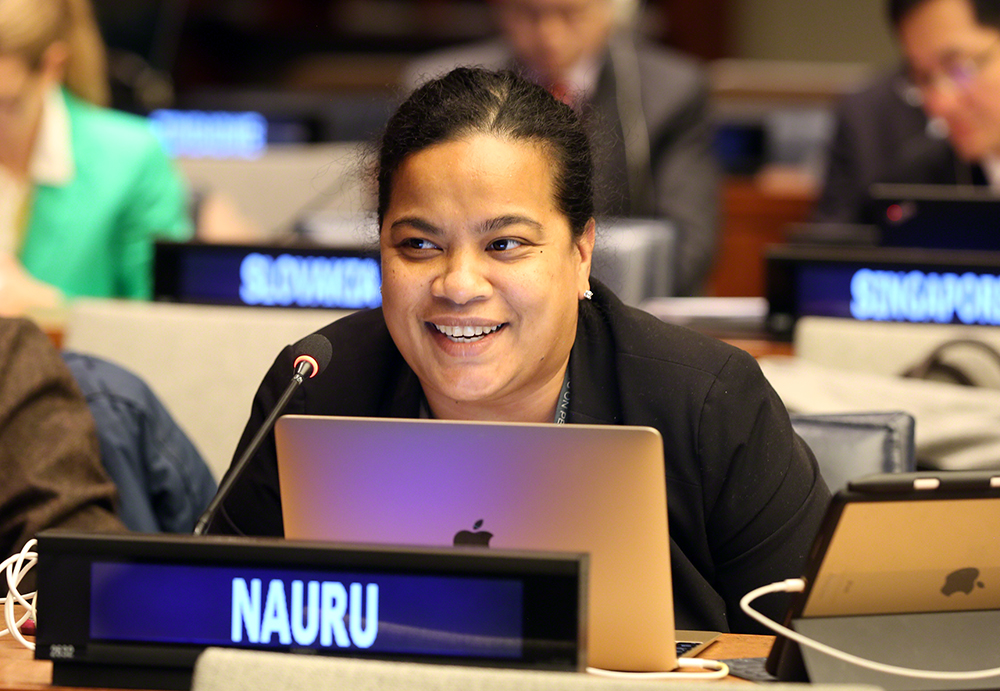
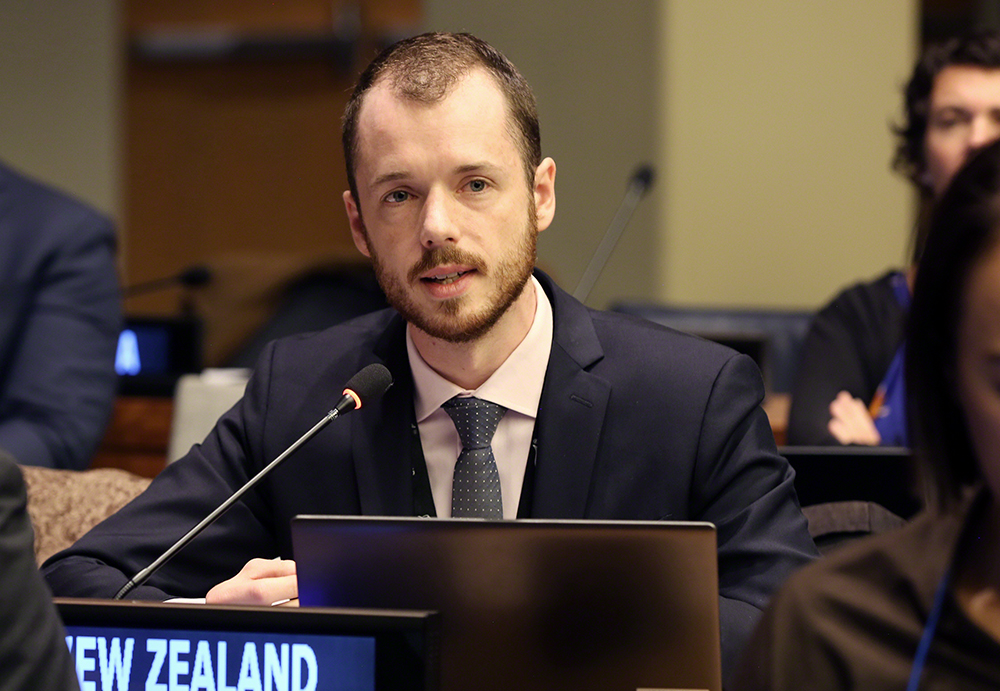
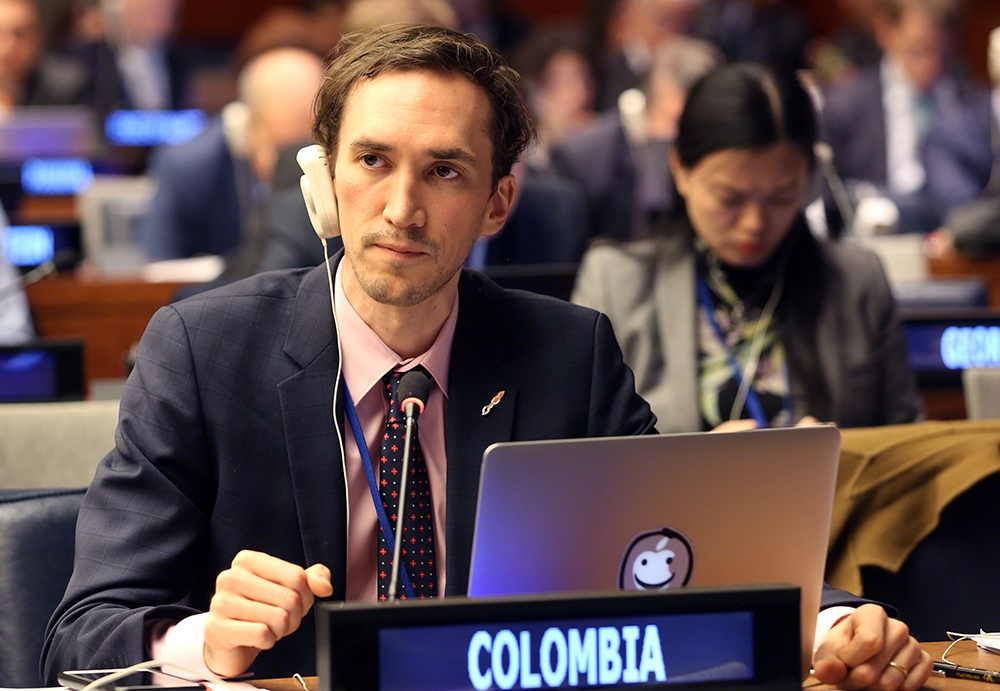
Highlights for Wednesday, 3 April 2019
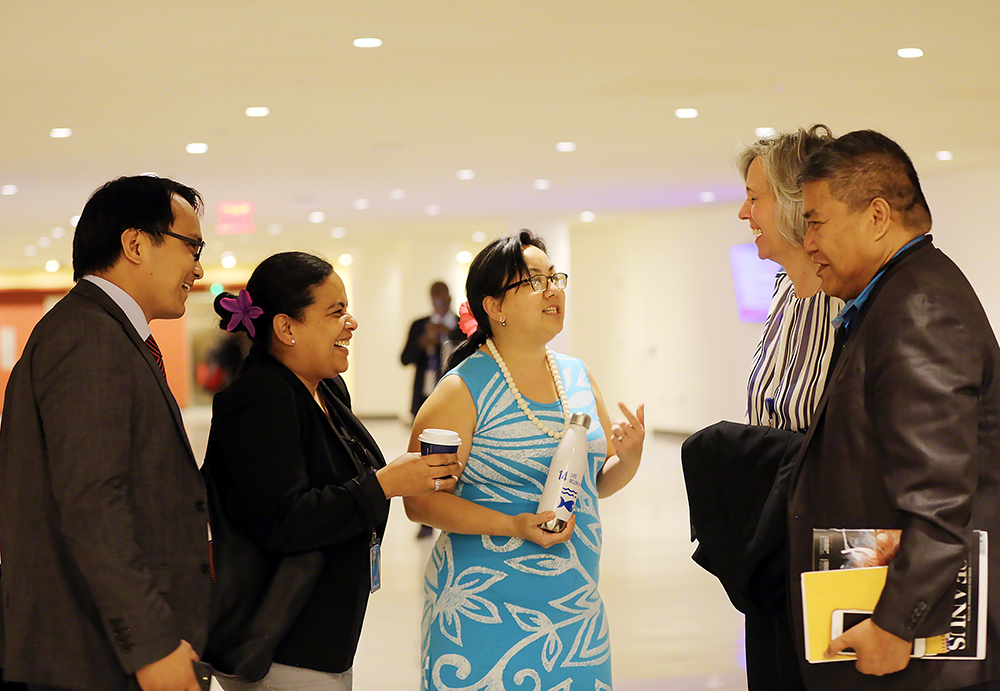
Delegates at the second session of the Intergovernmental Conference (IGC) on the conservation and sustainable use of marine biodiversity of areas beyond national jurisdiction (BBNJ) finalized discussions on capacity building and the transfer of marine technology (CB&TT) and began discussions on cross-cutting issues.
Under the latter, they considered institutional arrangements, outlining positions on:
• the decision-making body/forum;
• scientific and/or technical bodies;
• other subsidiary bodies; and
• a secretariat.
During the lunch break, delegates attended side-events on: strengthening stewardship of the Sargasso Sea, presented by Canada and the Sargasso Sea Commission; BBNJ negotiations, intellectual property issues, and ongoing work at the World Intellectual Property Organization (WIPO), presented by WIPO; and the application of area-based management tools under the Regional Seas Programmes, presented by the UN Environment Programme.
What comes first, form or function? This is the persistent question that plagues the BBNJ process, and it reared its head again on Wednesday during discussions on funding for CB&TT and institutional arrangements. One delegate strenuously asserted that function (deciding on institutional arrangements, including whether they operate on a global or regional level) follows form (deciding on what the institutions will do).
For extensive details on the day’s negotiations and to hear what delegates said in the corridors, see our daily Earth Negotiations Bulletin.
+ Visit the web coverage for Wednesday, 3 April 2019
IISD Reporting Services, through its Earth Negotiations Bulletin (ENB) Meeting Coverage, has provided daily web coverage, daily reports, and a summary and analysis report from BBNJ IGC 2. The summary and analysis report is now available in HTML and PDF.
Photos by IISD/ENB | Francis Dejon
For photo reprint permissions, please follow instructions at our Attribution Regulations for Meeting Photo Usage Page.
Informal Working Group on Capacity Building and Transfer of Marine Technology
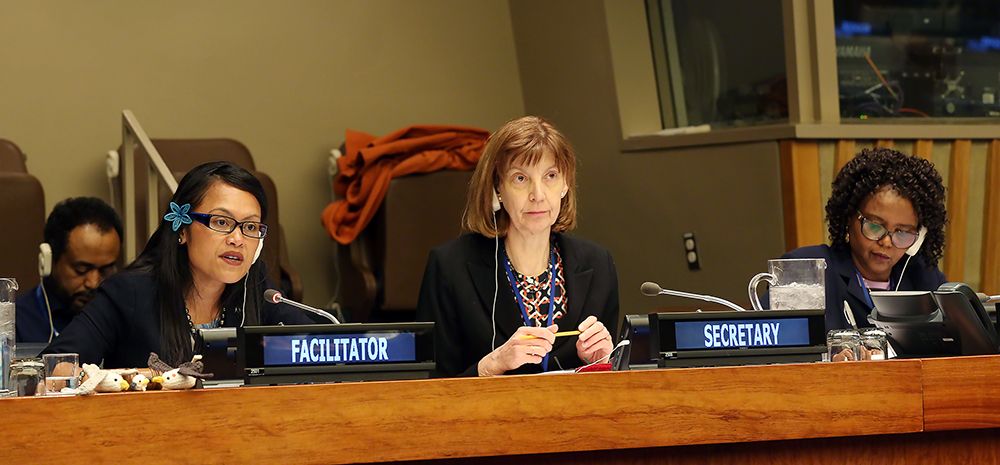
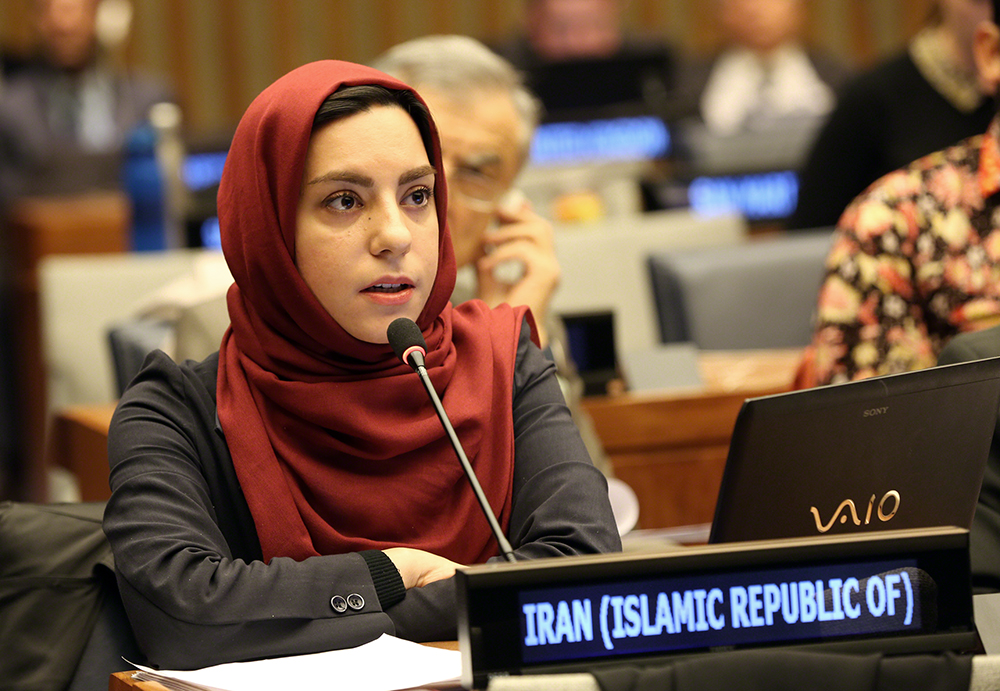
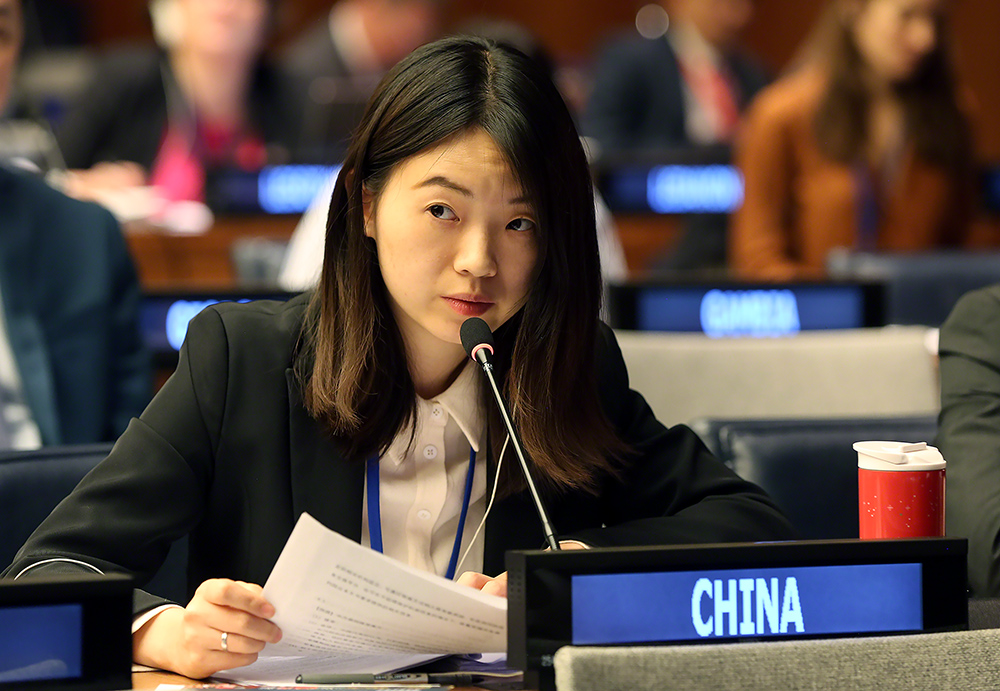
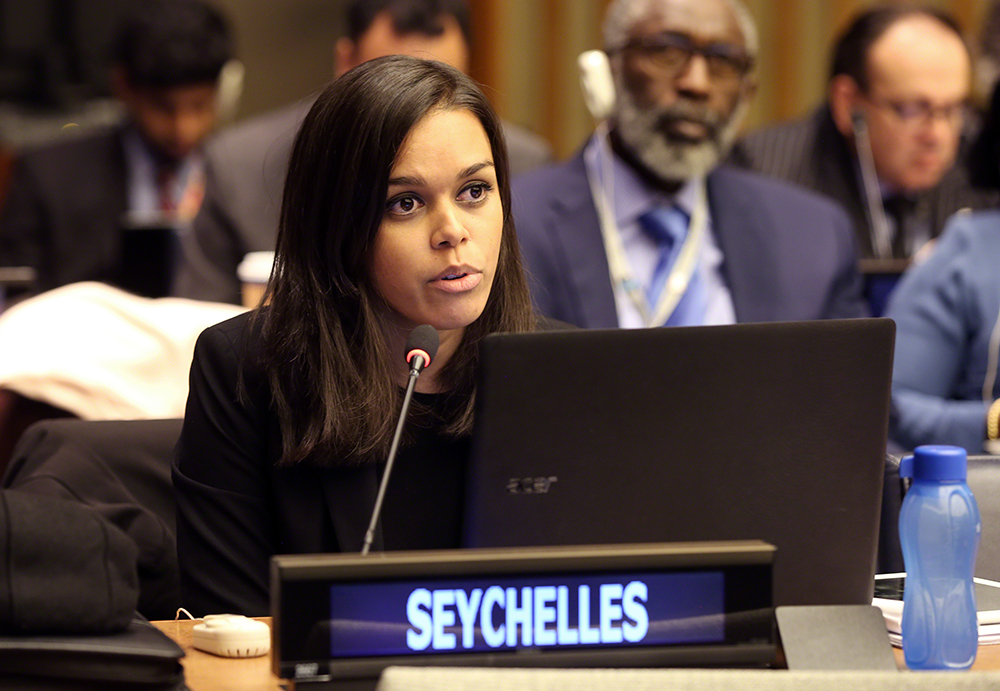
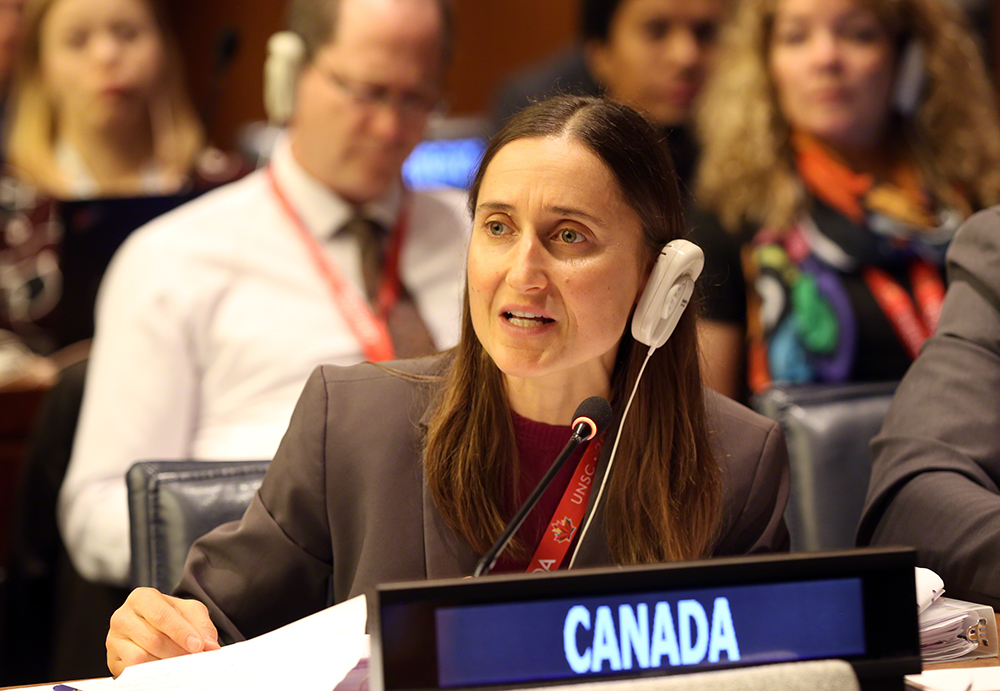
Highlights for Tuesday, 2 April 2019
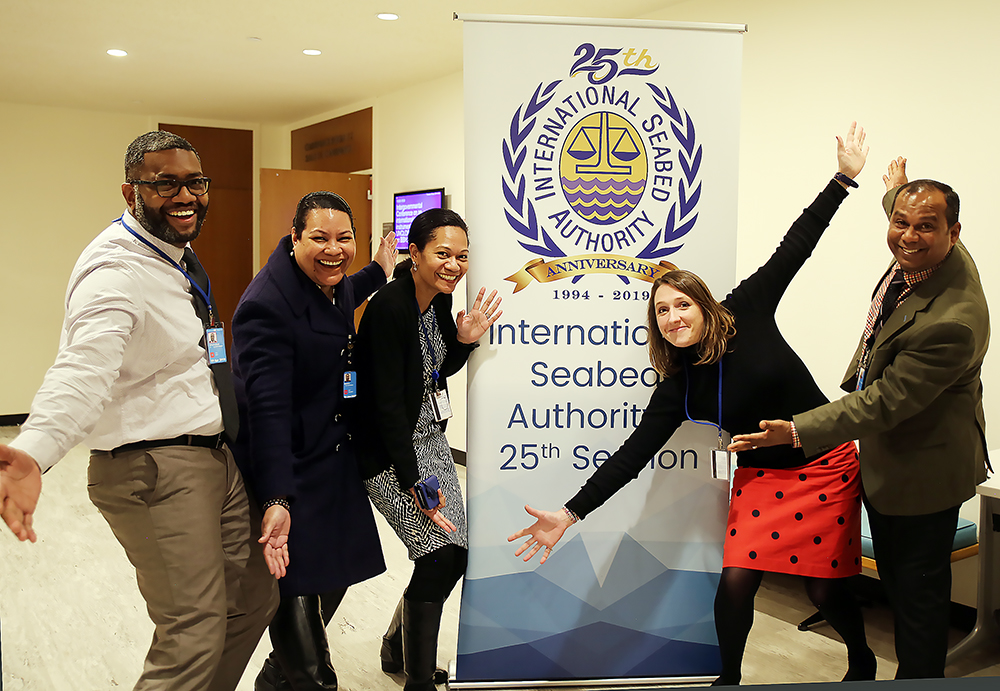
Delegates at the second session of the Intergovernmental Conference (IGC) on the conservation and sustainable use of marine biodiversity of areas beyond national jurisdiction (BBNJ) finalized discussions on environmental impact assessments (EIAs) in an informal working group, and opened discussions on capacity building and the transfer of marine technology (CB&TT), facilitated by Olai Uludong, Palau. Under CB&TT, they considered the types and modalities, including a clearinghouse mechanism; and issues related to funding, including the funding mechanism and whether funding would be mandatory of voluntary.
During the lunch break, delegates attended side-events on:
• implementation of indigenous and traditional knowledge in the high seas treaty, presented by South Africa;
• twenty-five years of ISA’s contribution to deep-sea marine scientific research and the UN Decade of Ocean Science for Sustainable Development (2021-2030), presented by the International Seabed Authority and Intergovernmental Oceanographic Commission of UNESCO; and
• cooperation between regional seas programmes and regional fisheries bodies, presented by the UN Environment Programme and Food and Agricultural Organization of the United Nations (FAO).
In the corridors, it was difficult to ignore the fact that positions were still poles apart, with the usual lines drawn between a cohort preferring only voluntary funding options, and those on the receiving end, holding out for a mix of voluntary and mandatory financing. When some called for aspects of the funding discussion to be brought up under cross-cutting issues, others resolved that, clearly, “the real negotiations are going to come down to the wire,” with three days left and counting.
For extensive details on the day’s negotiations and to hear what delegates said in the corridors, see our daily Earth Negotiations Bulletin.
+ Visit the web coverage for Tuesday, 2 April 2019
IISD Reporting Services, through its Earth Negotiations Bulletin (ENB) Meeting Coverage, has provided daily web coverage, daily reports, and a summary and analysis report from BBNJ IGC 2. The summary and analysis report is now available in HTML and PDF.
Photos by IISD/ENB | Francis Dejon
For photo reprint permissions, please follow instructions at our Attribution Regulations for Meeting Photo Usage Page.
Informal Working Group on Environmental Impact Assessments
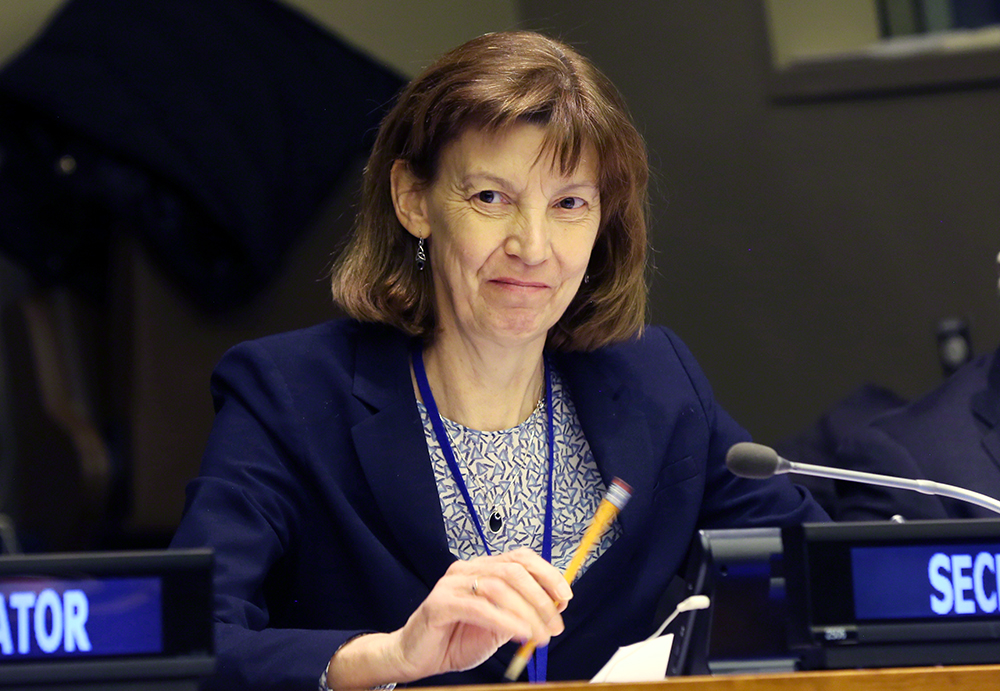

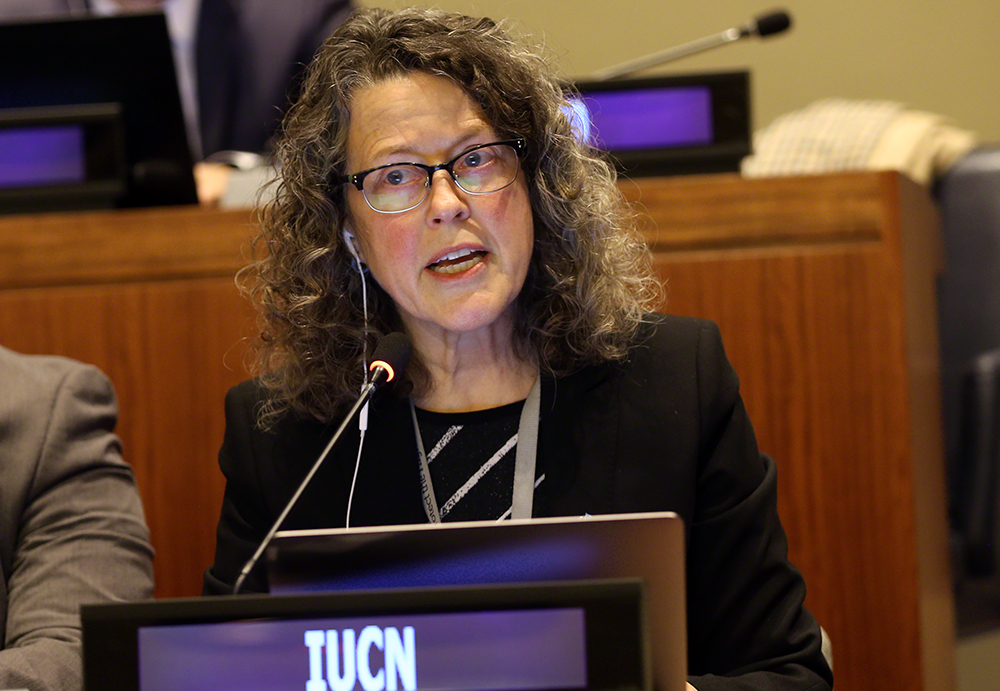
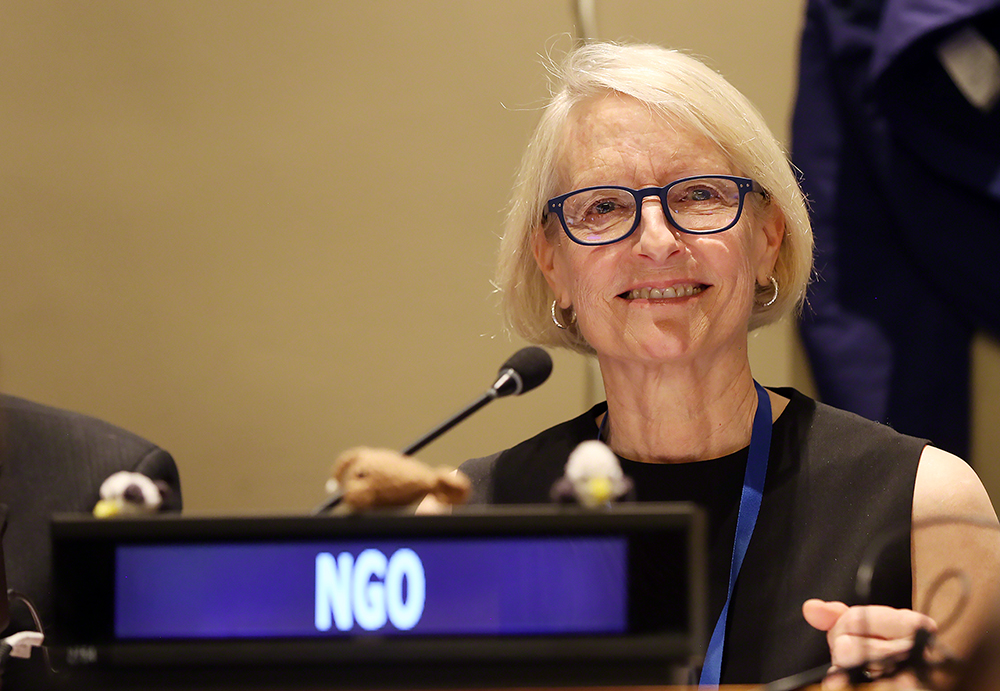
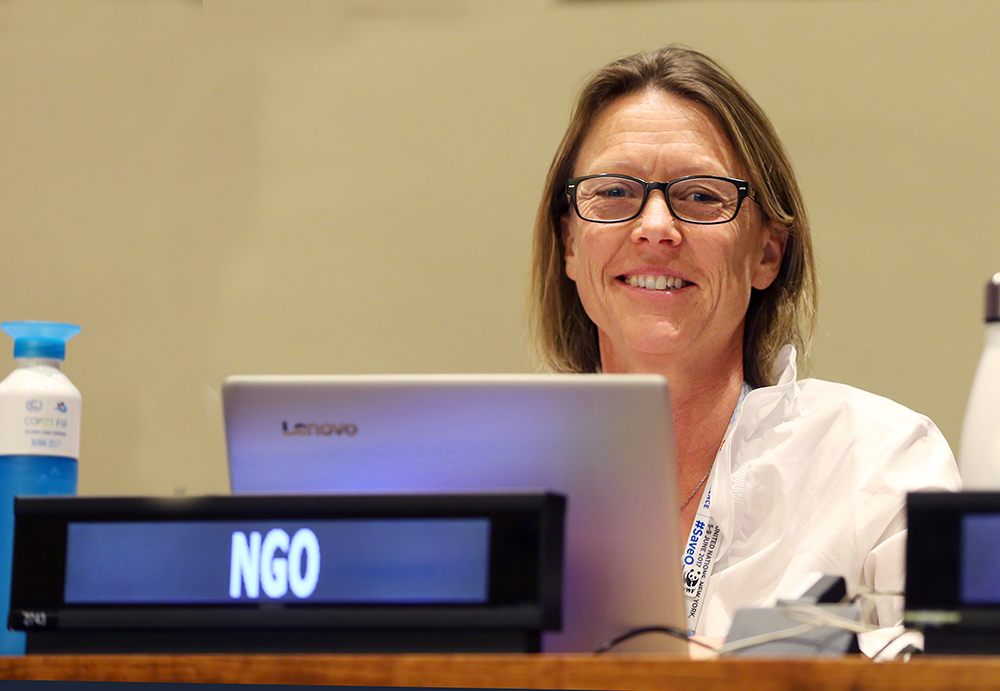
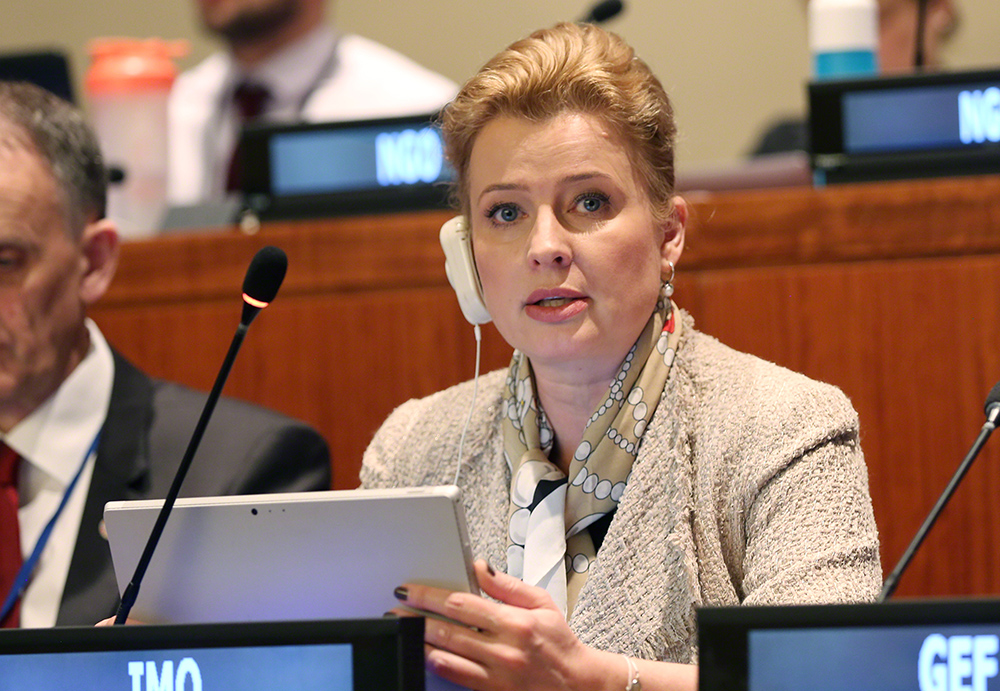
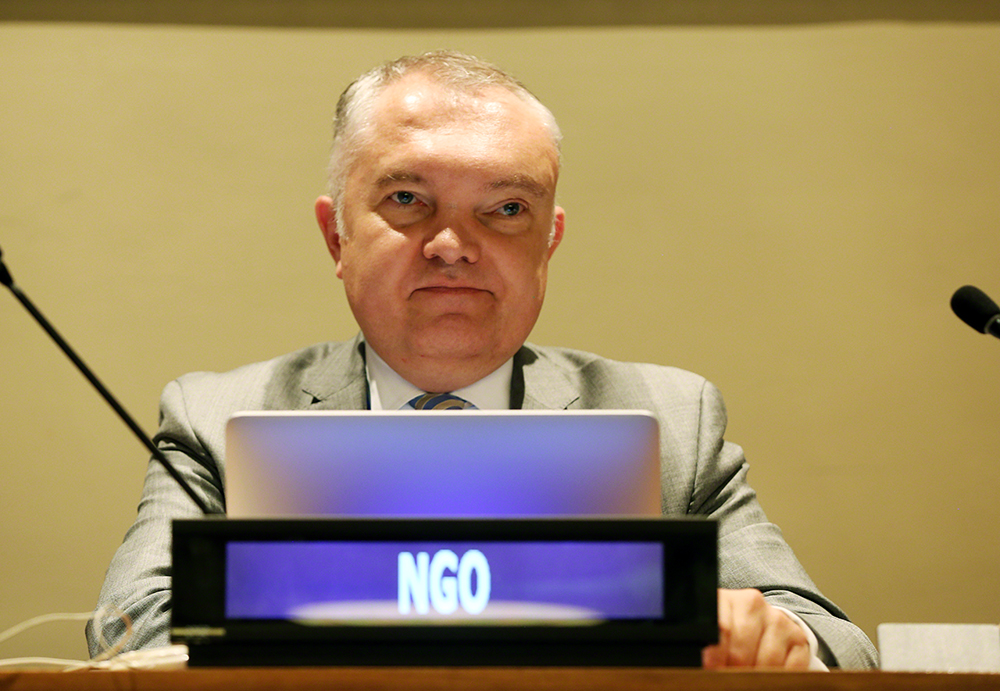
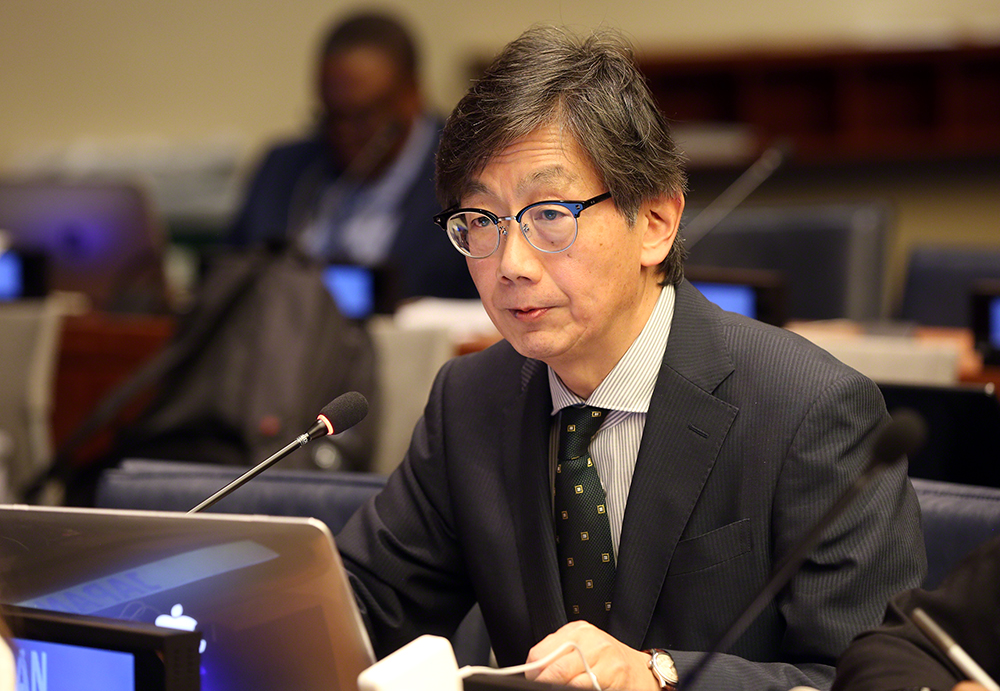
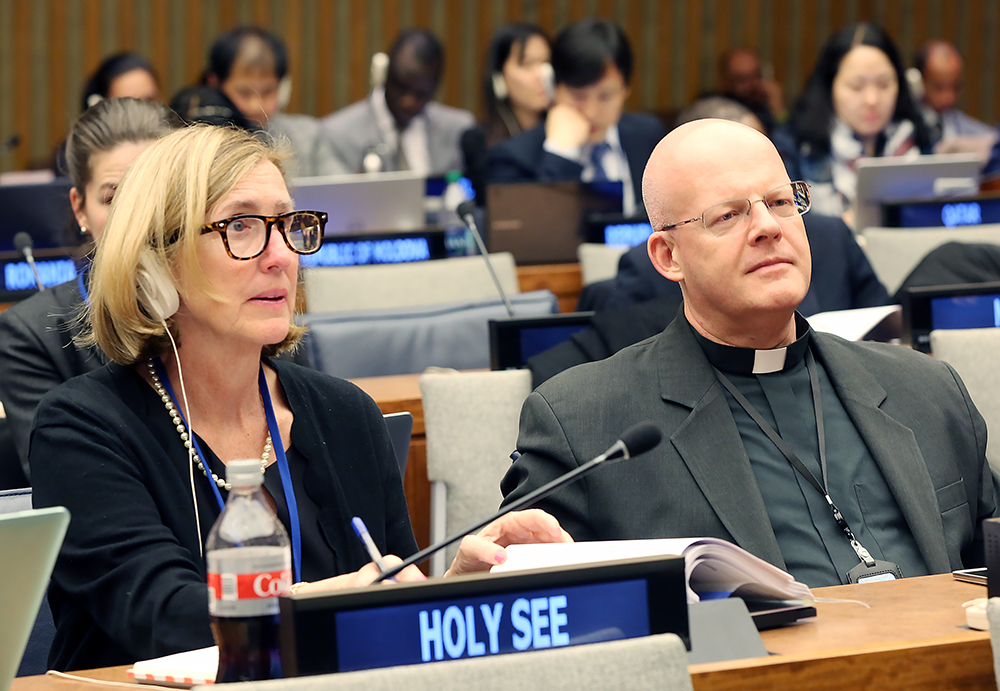
Highlights for Monday, 1 April 2019
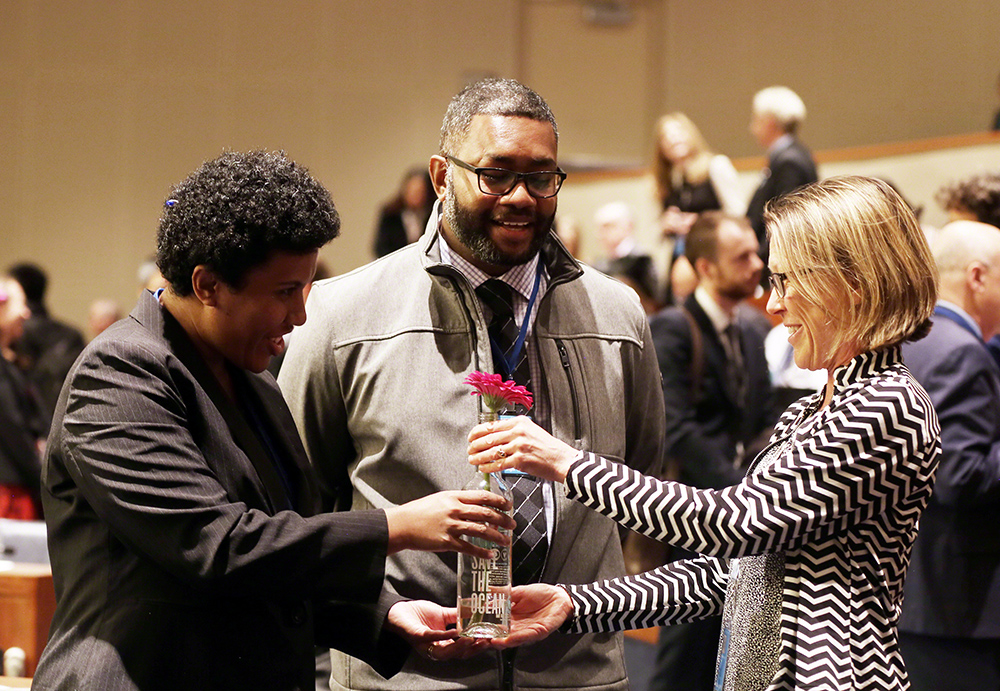
Delegates at the second session of the Intergovernmental Conference (IGC) on the conservation and sustainable use of marine biodiversity of areas beyond national jurisdiction (BBNJ) continued discussions on environmental impact assessments (EIAs) in an informal working group facilitated by René Lefeber (the Netherlands).
Under EIAs, they considered the process for these assessments, as well as details related to the:
- content of an EIA;
- monitoring, reporting, and review;
- strategic environmental assessments (SEAs); and
- activities for which EIAs are required.
During the lunch break, delegates attended side-events on: the role of science and a scientific body under the new instrument, presented by the Government of Canada, the High Seas Alliance, and Pew Charitable Trusts; and “Connectivity: a critical consideration in global ocean governance,” presented by UN Environment Programme World Conservation Monitoring Centre.
In the corridors, while EIA discussions made clear progress on activities, process, and content, conceptual murkiness and conflict remained regarding monitoring, reporting, and review, and strategic environmental assessments. There was a general acceptance of the utility of SEAs, but views diverged on how they would apply to areas beyond the control of states and who would conduct them.
For extensive details on the day’s negotiations and to hear what delegates said in the corridors, see our daily Earth Negotiations Bulletin.
+ Visit the web coverage for Monday, 1 April 2019
IISD Reporting Services, through its Earth Negotiations Bulletin (ENB) Meeting Coverage, has provided daily web coverage, daily reports, and a summary and analysis report from BBNJ IGC 2. The summary and analysis report is now available in HTML and PDF.
Photos by IISD/ENB | Francis Dejon
For photo reprint permissions, please follow instructions at our Attribution Regulations for Meeting Photo Usage Page.
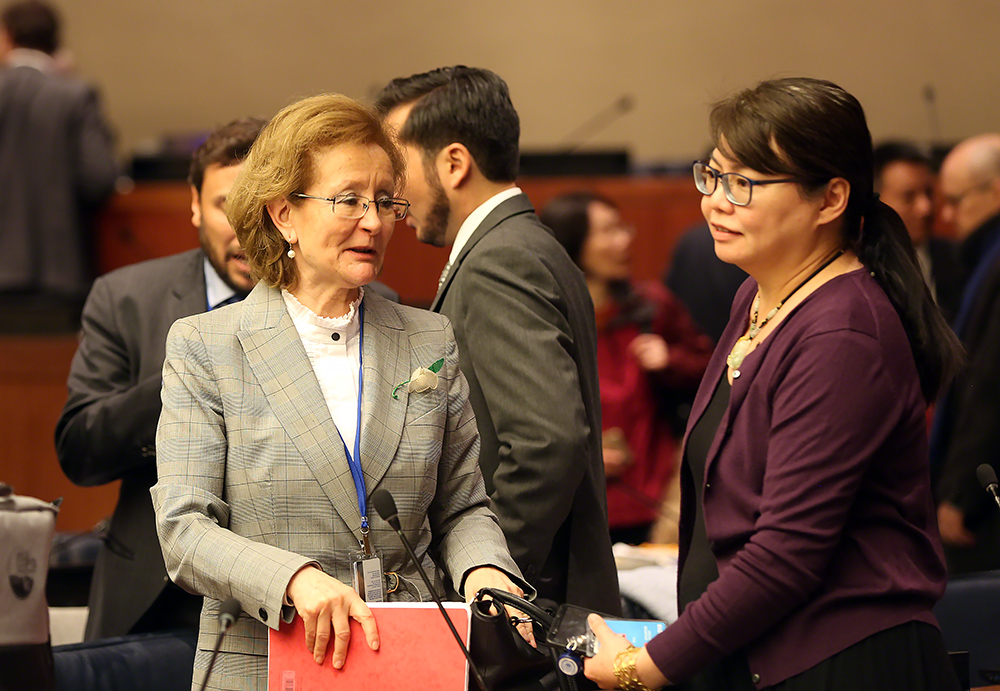
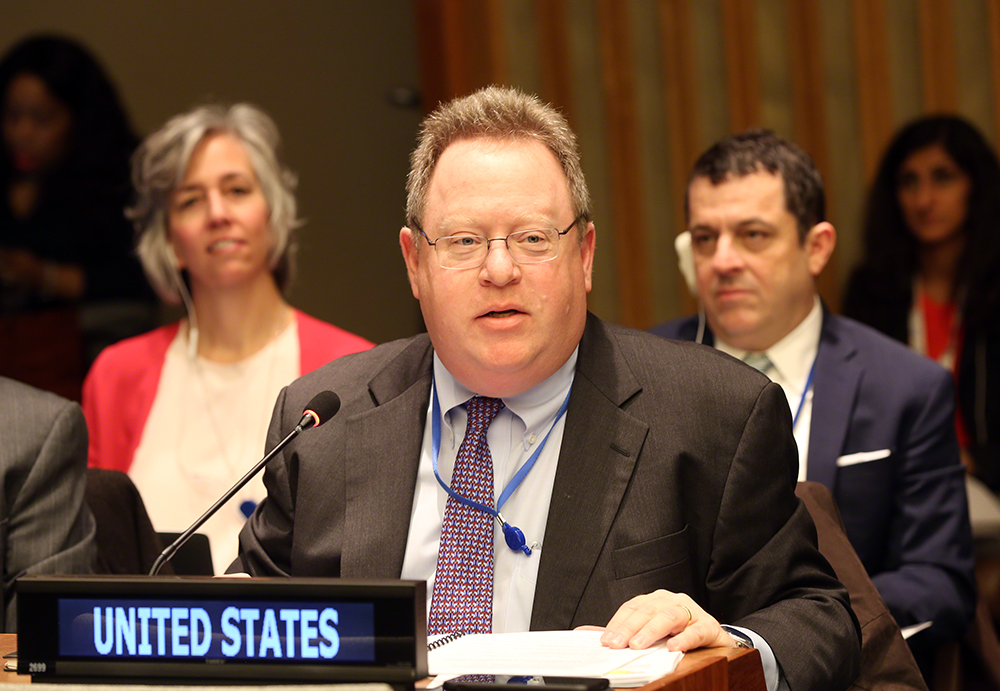
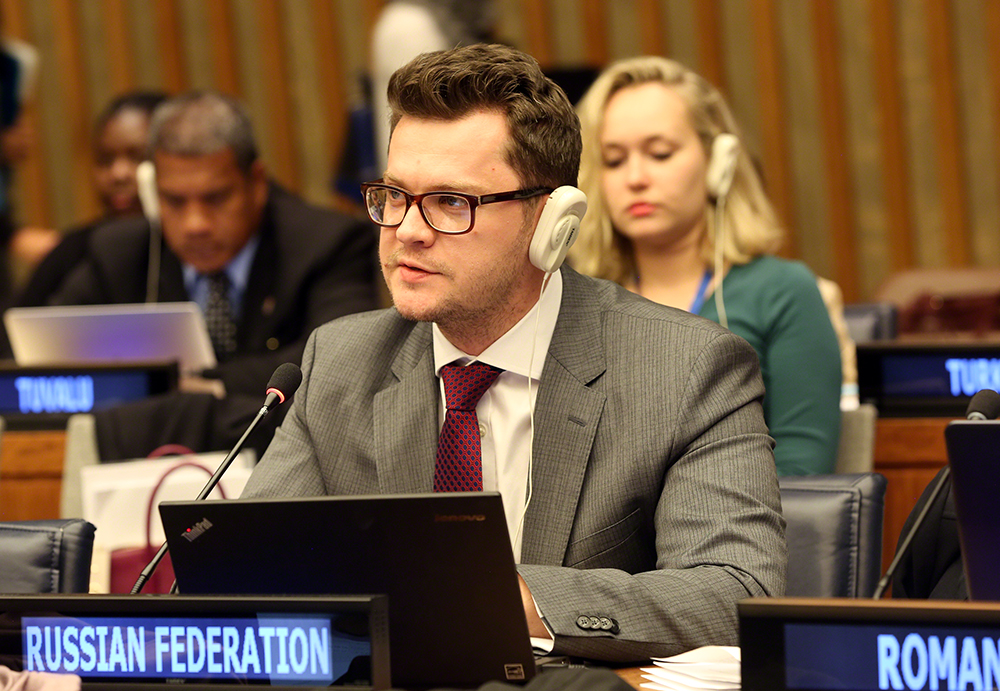
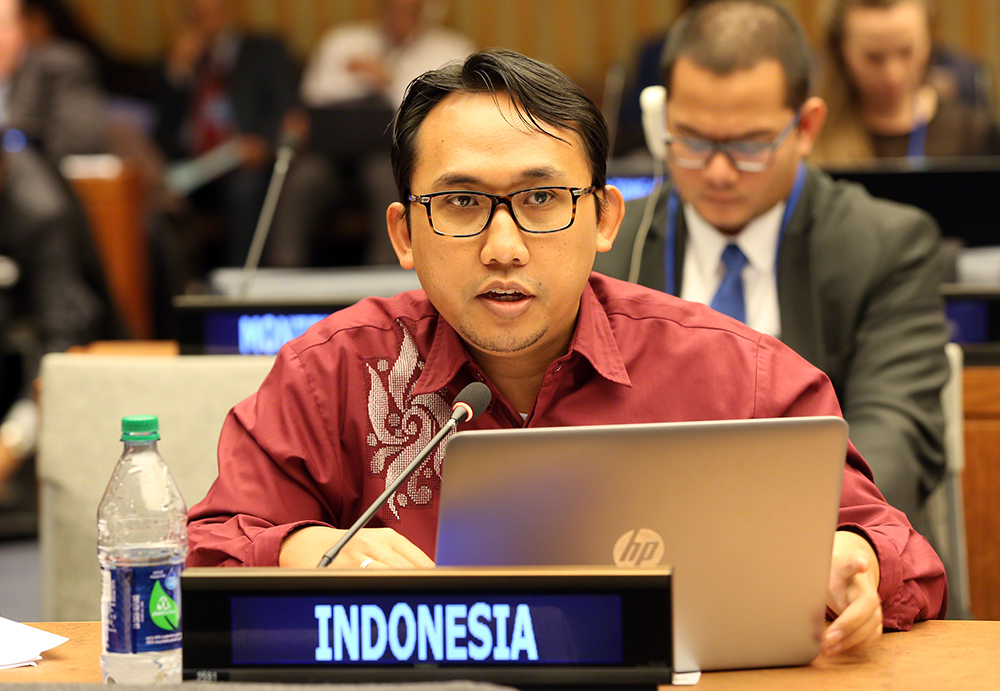
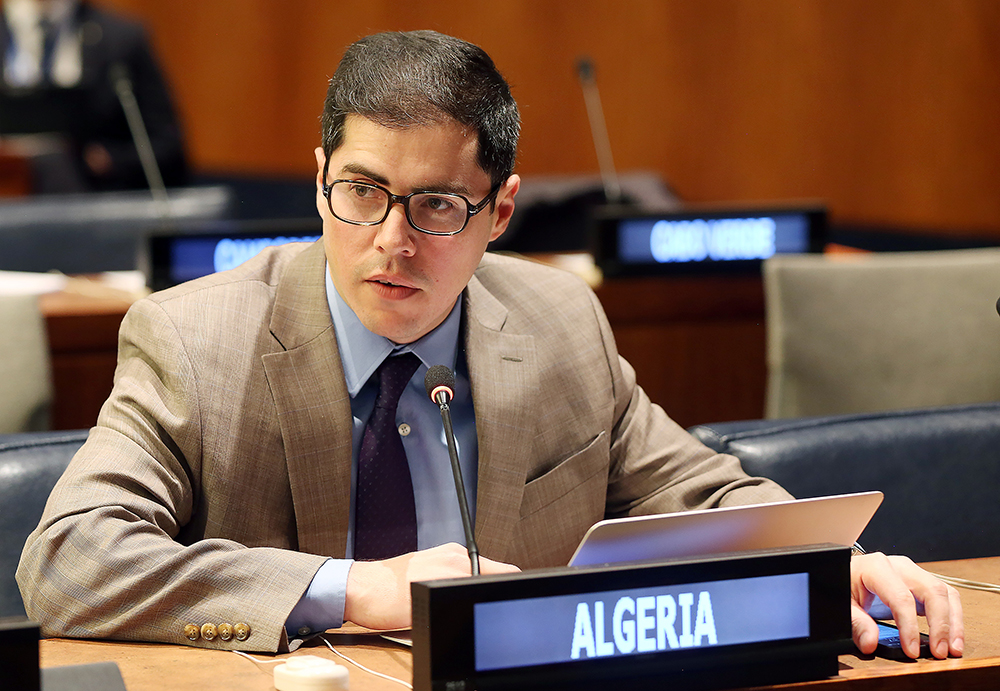
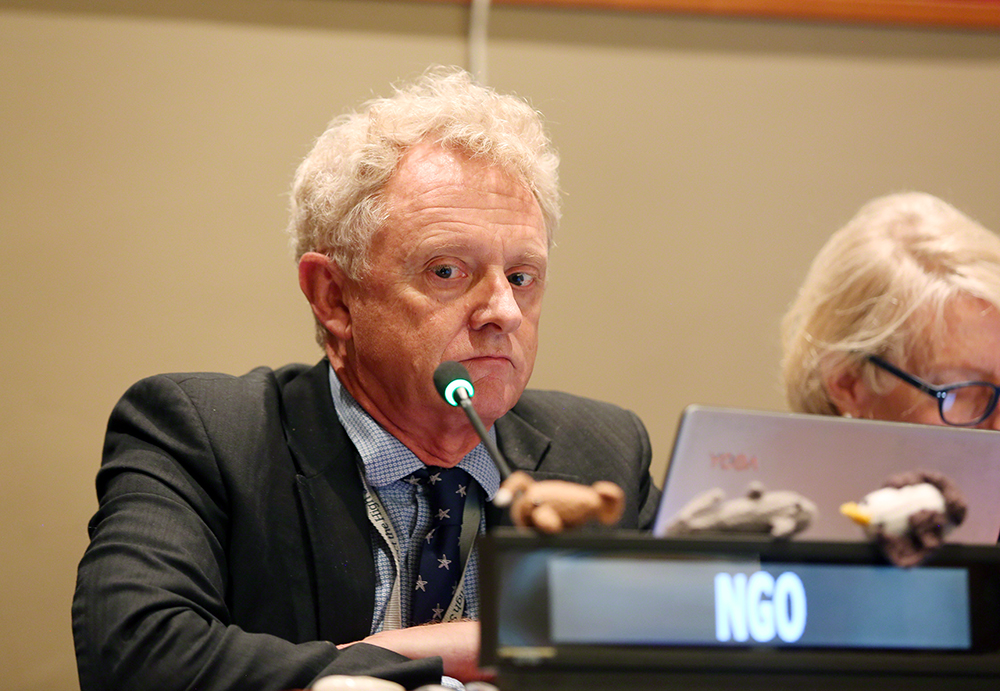
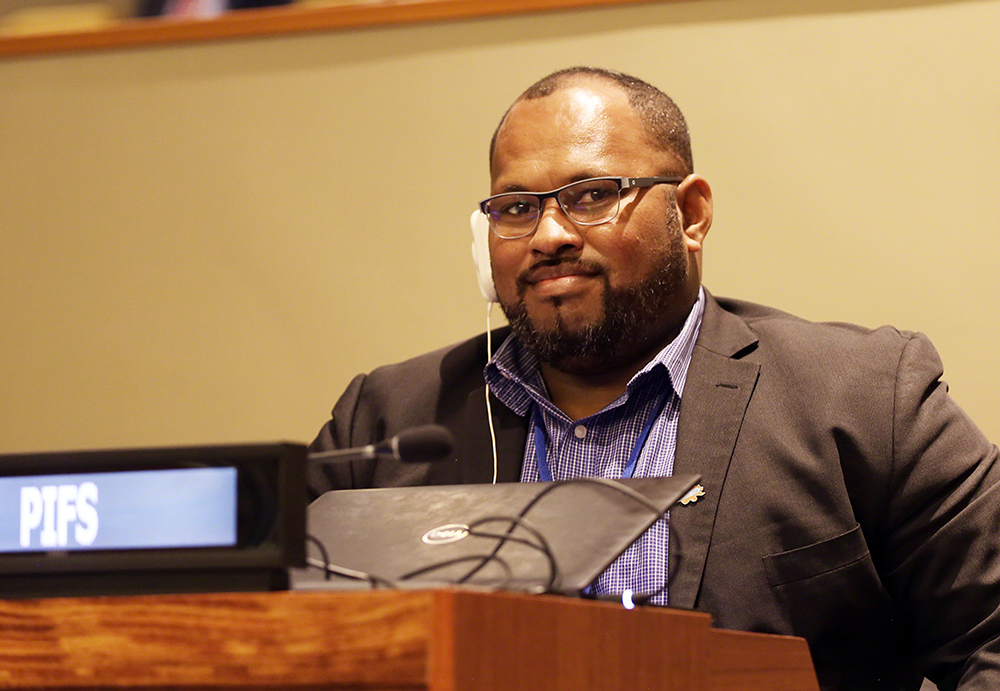
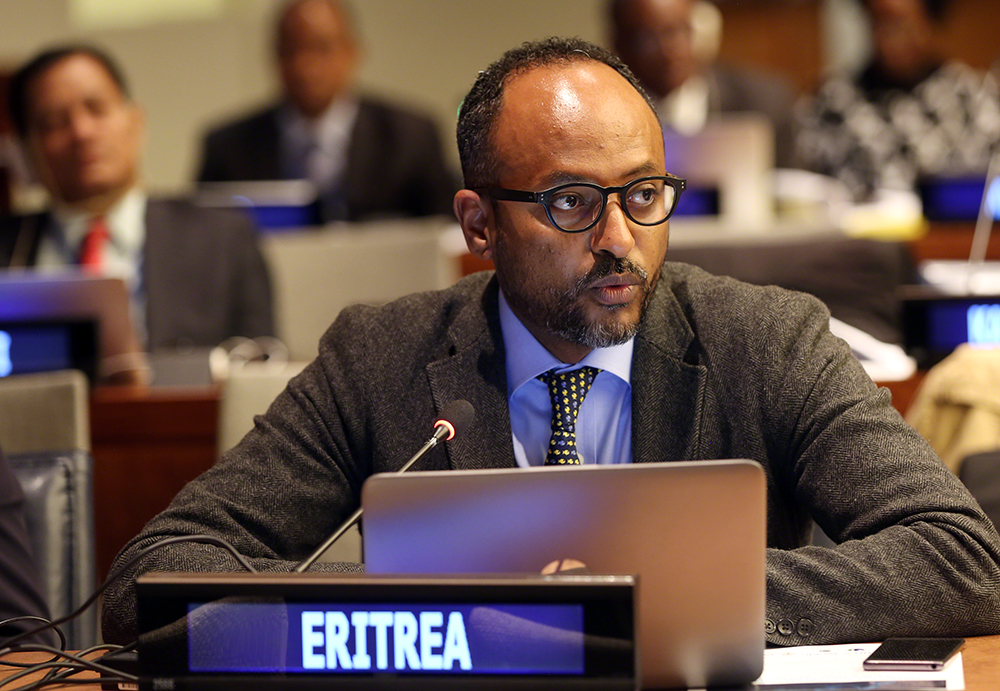
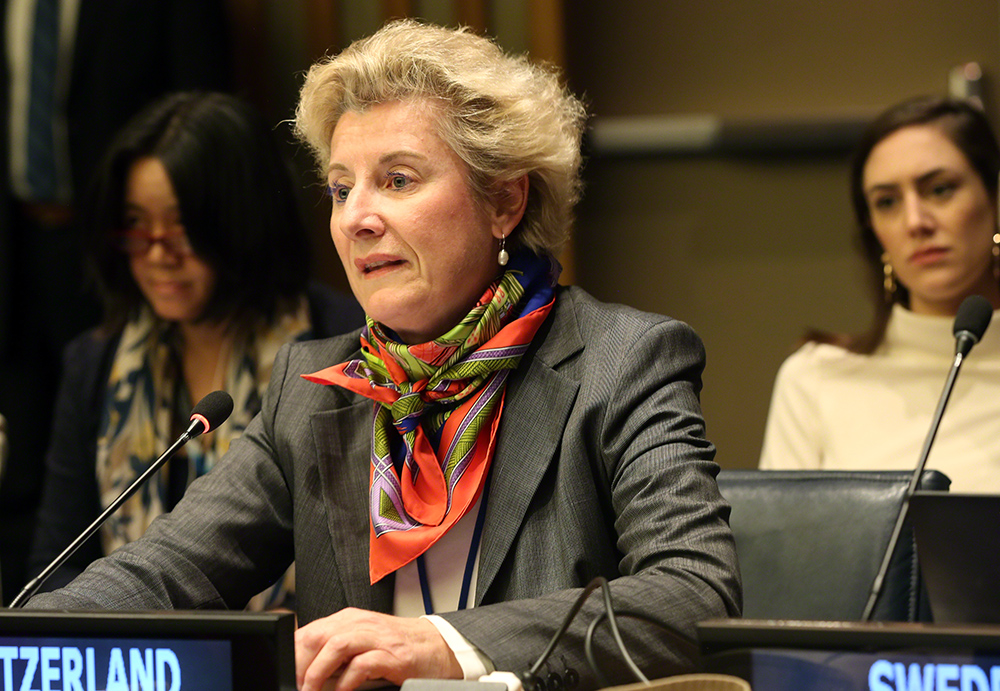
Highlights for Friday, 29 March 2019
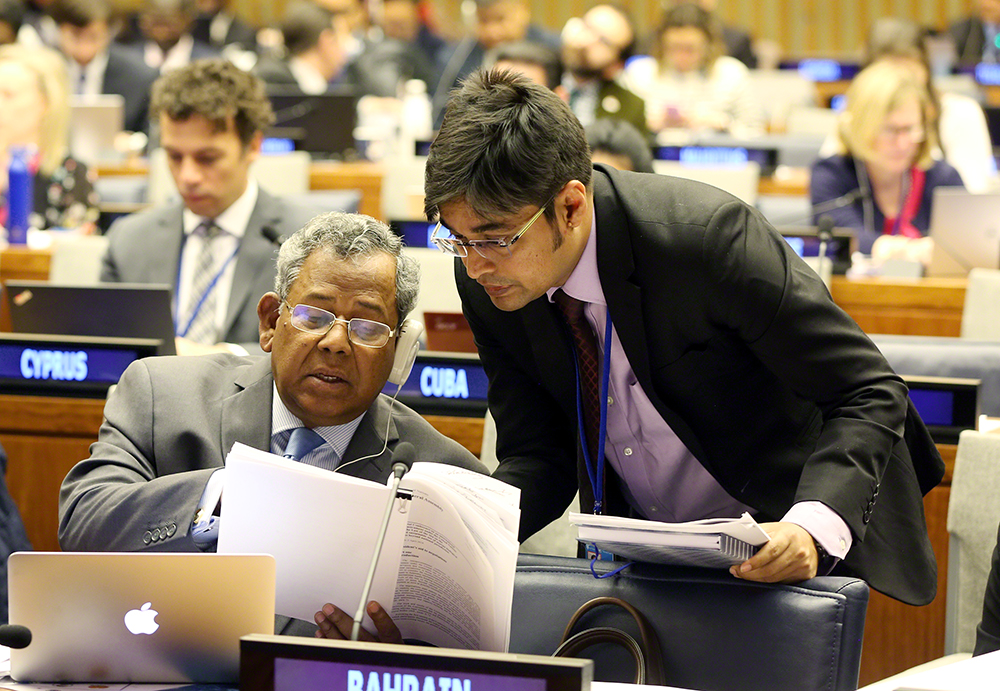
Discussions at the second session of the Intergovernmental Conference (IGC) on the conservation and sustainable use of marine biodiversity of areas beyond national jurisdiction (BBNJ) continued in an informal working group setting. Delegates finalized their consideration of area-based management tools (ABMTs), and commenced their discussions on environmental impact assessments (EIAs).
Under EIAs, they considered the process for these assessments, commenting on procedures related to:
- screening and scoping;
- impact prediction and evaluation;
- public notification and consultation; and
- decision-making.
During the lunch break, side-events were held on: conservation, climate change, and ocean biodiversity beyond national jurisdiction, presented by Papua New Guinea; and planning and enforcement of the high seas area-based management tools, presented by The Nature Conservancy and the Oxford Martin School Sustainable Oceans Programme.
In the corridors, one seasoned delegate, heading out for the weekend after a dense afternoon plenary, seemed cautiously optimistic: “The level of detail in the different options can be seen as tedious, but once we ride the option-storm, we will hopefully be able to see the big picture, and start negotiating on our different positions.”
For extensive details on the day’s negotiations and to hear what delegates said in the corridors, see our daily Earth Negotiations Bulletin.
+ Visit the web coverage for Friday, 29 March 2019
IISD Reporting Services, through its Earth Negotiations Bulletin (ENB) Meeting Coverage, has provided daily web coverage, daily reports, and a summary and analysis report from BBNJ IGC 2. The summary and analysis report is now available in HTML and PDF.
Photos by IISD/ENB | Francis Dejon
For photo reprint permissions, please follow instructions at our Attribution Regulations for Meeting Photo Usage Page.
Informal Working Group on Area-Based Management Tools
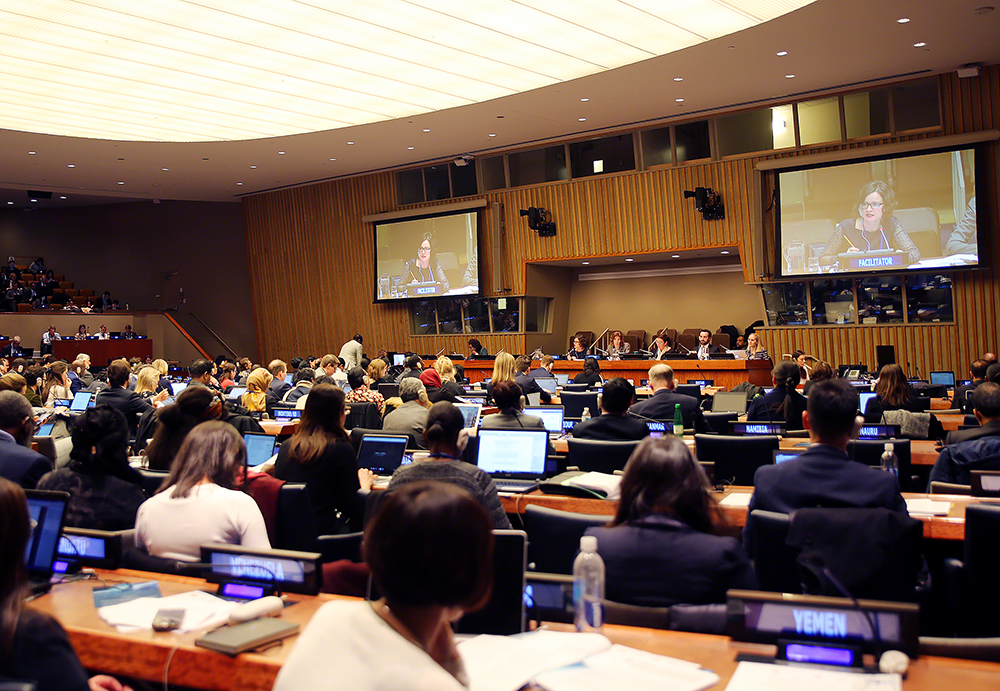
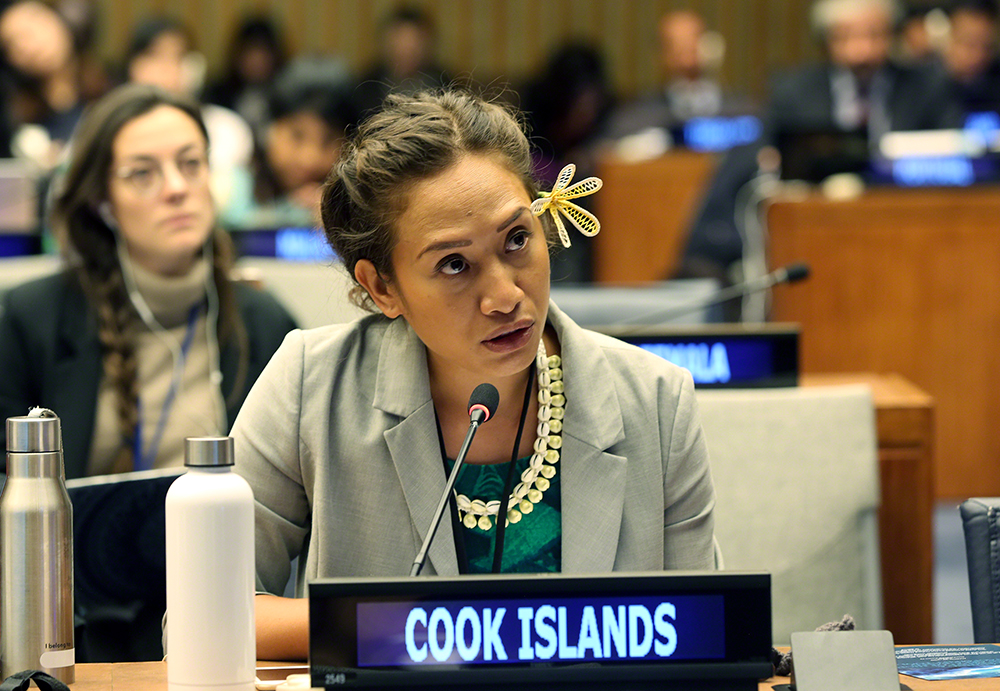
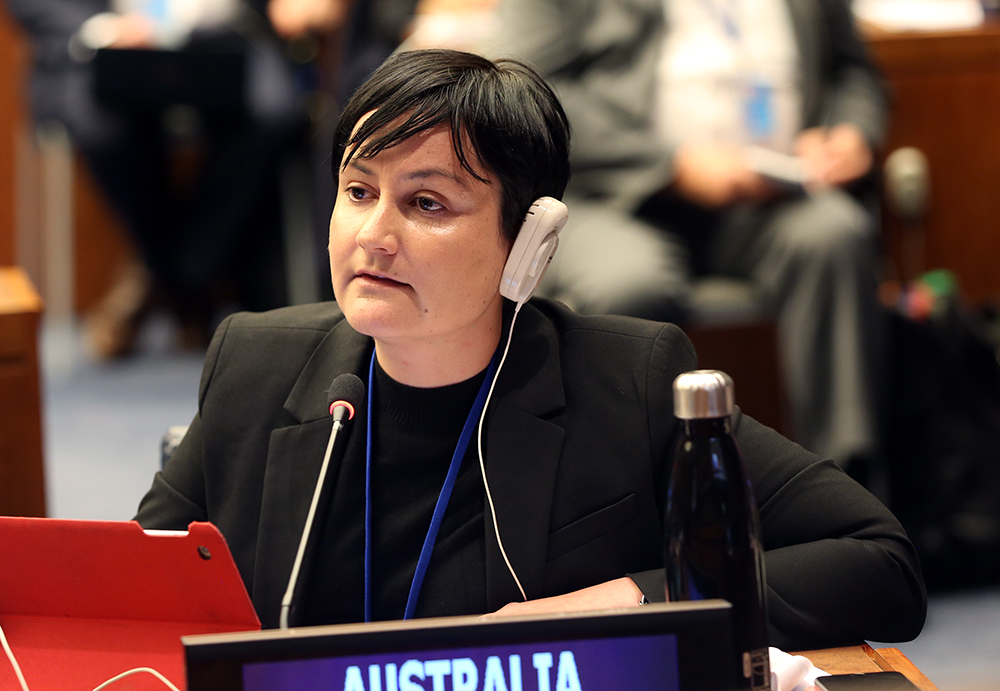
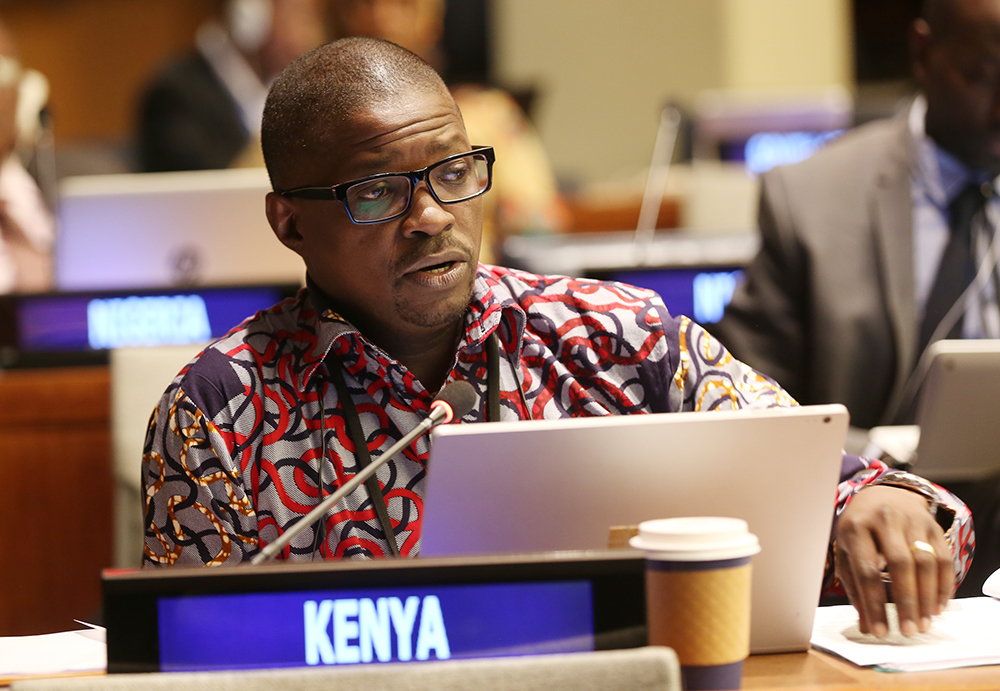
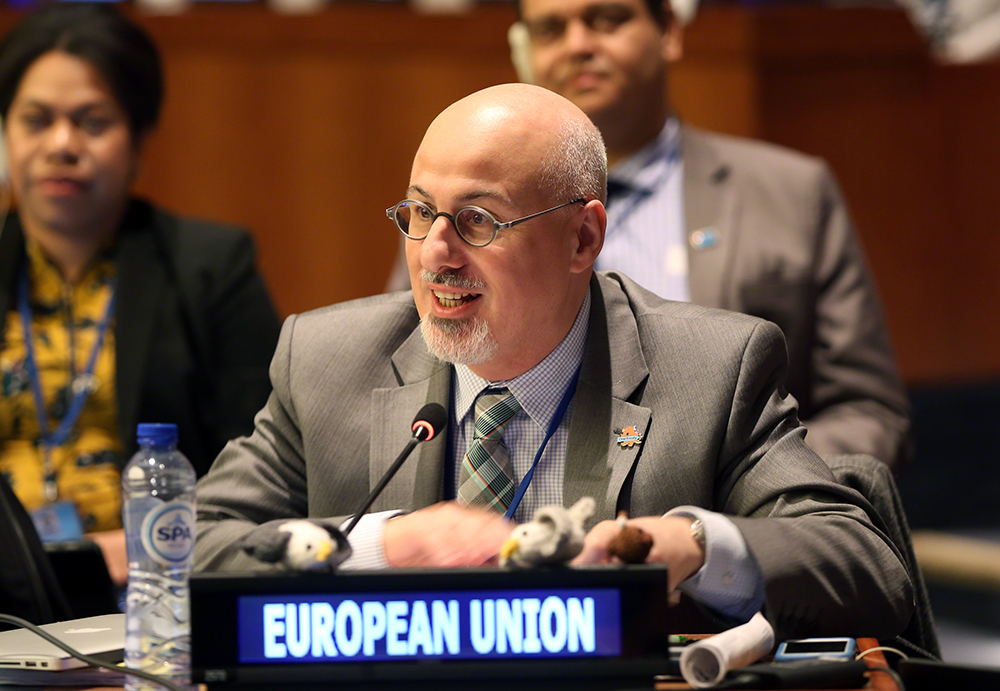
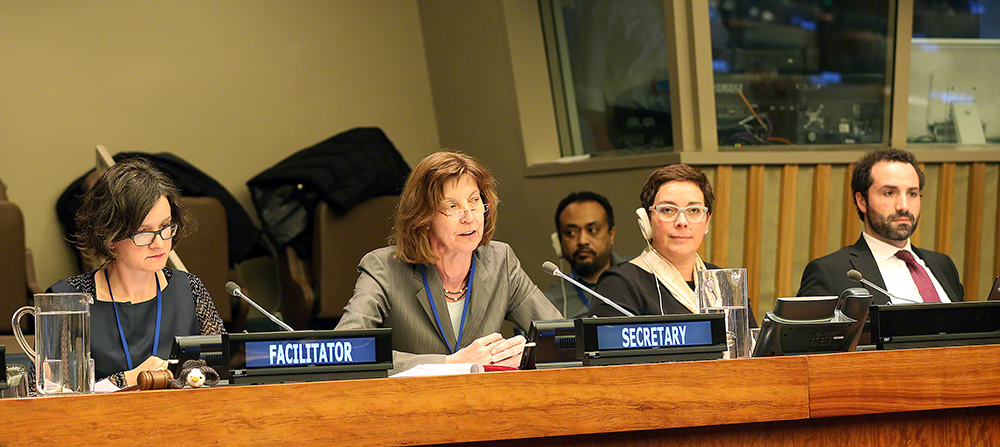
L-R: Alice Revell, New Zealand, Facilitator of the informal working group on area-based management tools; Gabriele Goettsche-Wanli, Director, UN Division for Ocean Affairs and the Law of the Sea (UNDOALOS); Velentina Germani, UNDOALOS; and Marco Boccia, UNDOALOS

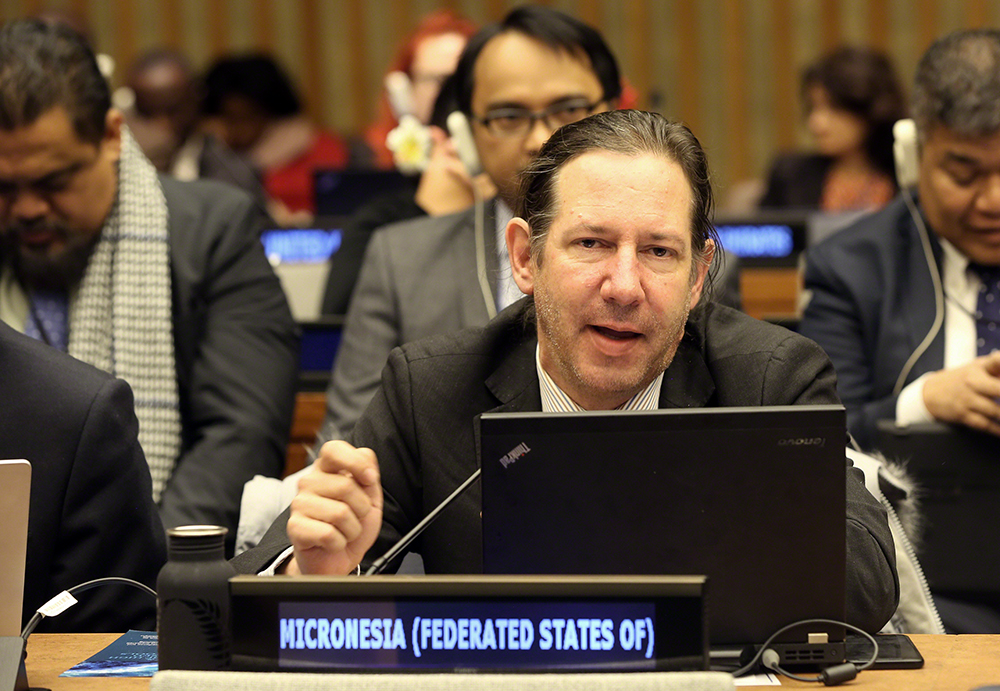
Highlights for Thursday, 28 March 2019
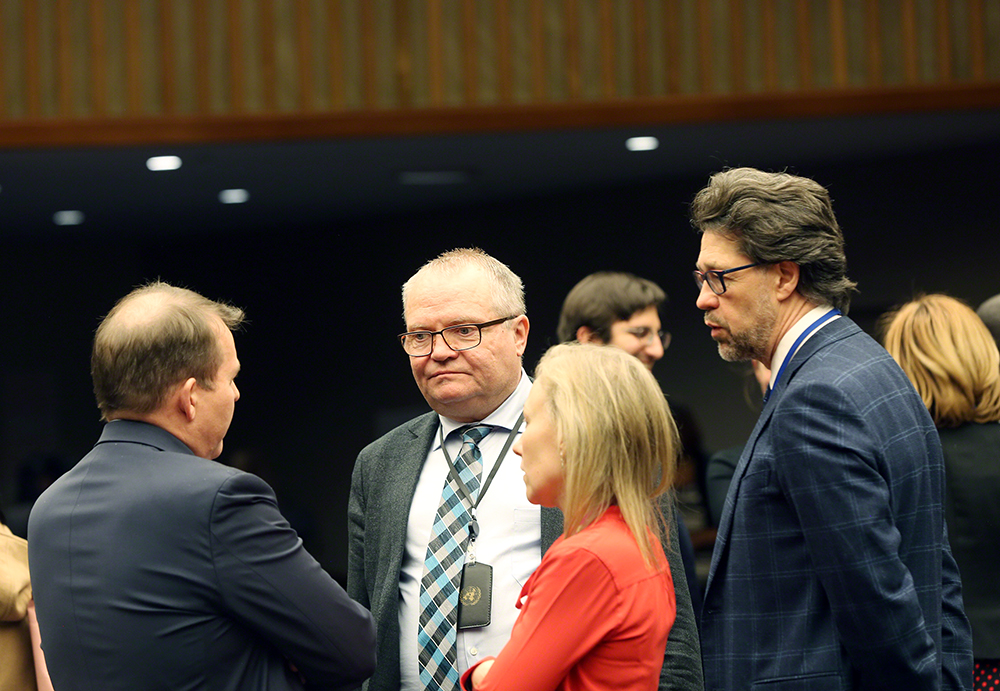
Delegates attending the second session of the Intergovernmental Conference (IGC) on the conservation and sustainable use of marine biodiversity of areas beyond national jurisdiction (BBNJ) met in an informal working group on area-based management tools (ABMTs) throughout the day.
They considered the following elements related to the process of identifying areas requiring ABMTs:
• the proposals related to the designation of marine protected areas and other tools;
• the content of ABMTs;
• decision-making; and
• the new instrument’s relationship to measures under other relevant instruments, frameworks and bodies.
During the lunch break, three side-events were held on: effective institutional arrangements via the new treaty, presented by Norway; “Mare Geneticum and an Ecosystem Approach: Power, Openness and Sharing,” presented by the International Union for Conservation of Nature (IUCN); and developments and experiences under various processes and lessons for the new instrument, presented by the Secretariat of the Convention on Biological Diversity.
In the corridors, some delegates felt strongly that marine protected areas had been prioritized over other area-based management measures. “As far as I can remember, in all the years of discussions that have built up to this document, we have not really considered other ABMTs in detail,” sighed one observer, noting that the NGO community had circulated suggestions in this regard in the past.
For extensive details on the day’s negotiations and to hear what delegates said in the corridors, see our daily Earth Negotiations Bulletin.
+ Visit the web coverage for Thursday, 28 March 2019
IISD Reporting Services, through its Earth Negotiations Bulletin (ENB) Meeting Coverage, has provided daily web coverage, daily reports, and a summary and analysis report from BBNJ IGC 2. The summary and analysis report is now available in HTML and PDF.
Photos by IISD/ENB | Francis Dejon
For photo reprint permissions, please follow instructions at our Attribution Regulations for Meeting Photo Usage Page.
Informal Working Group on Area-Based Management Tools
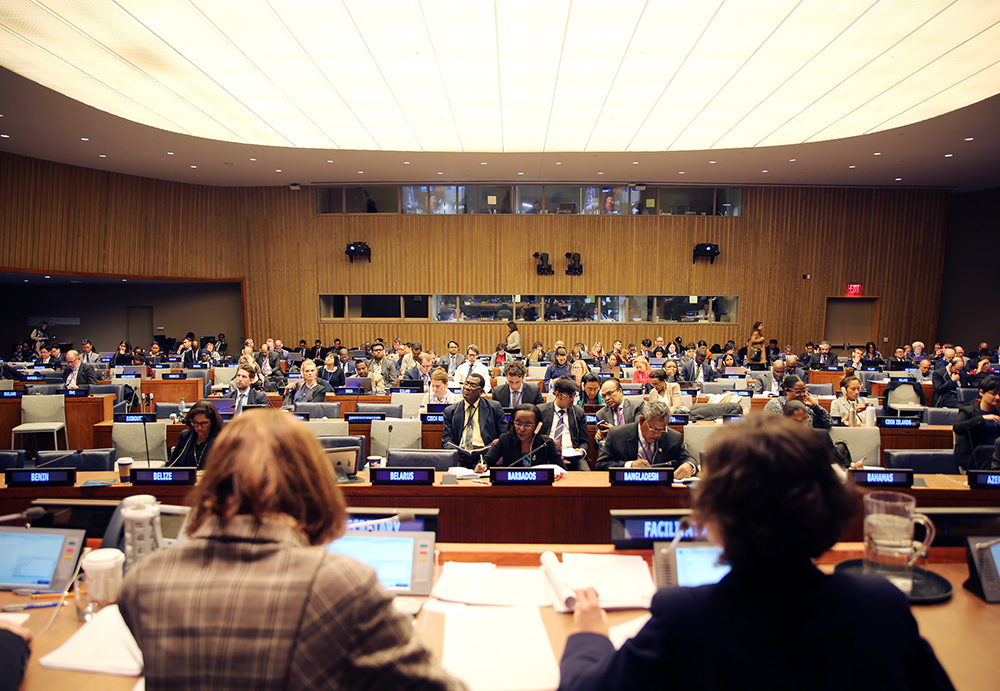
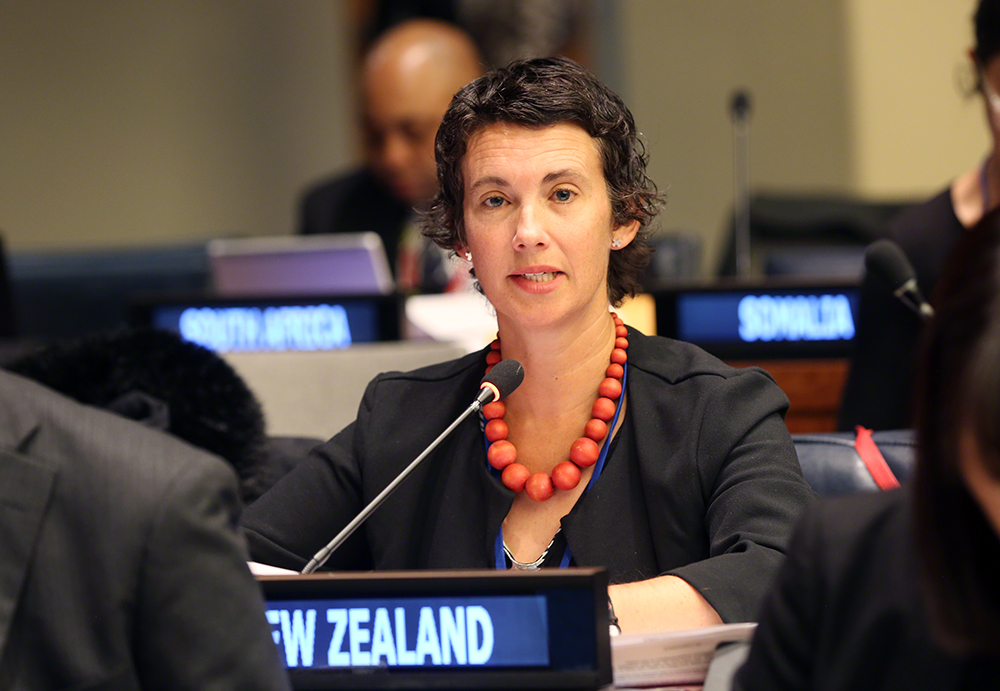
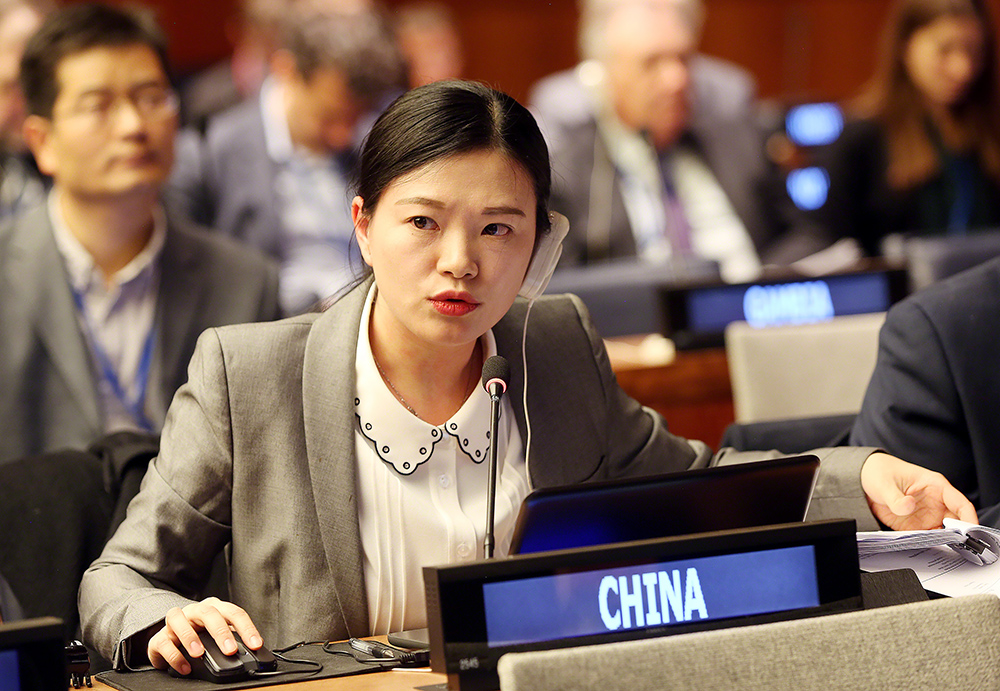
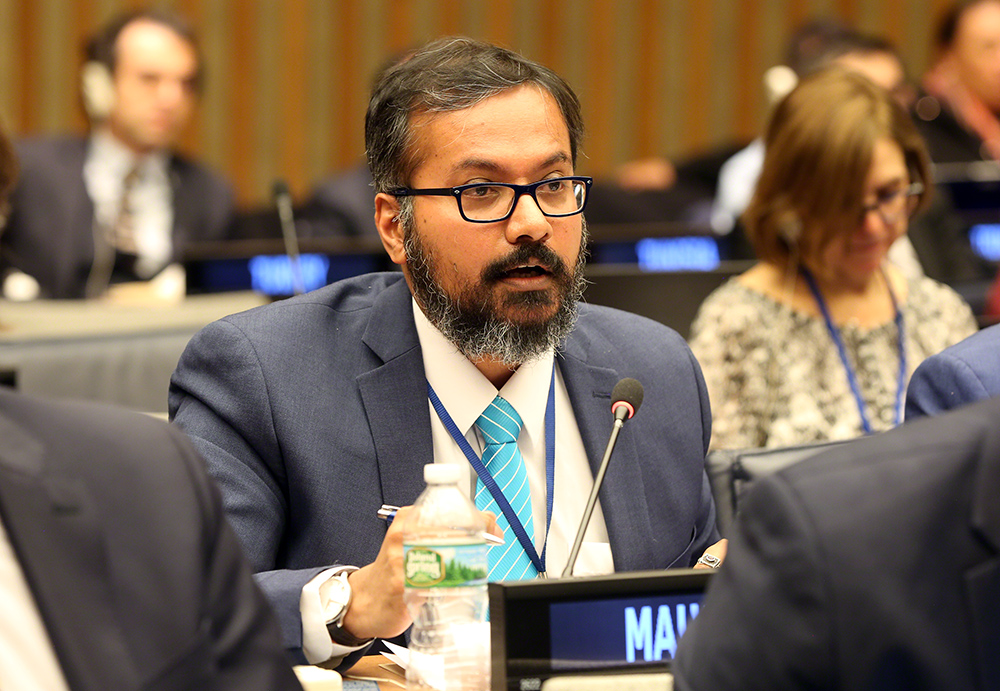
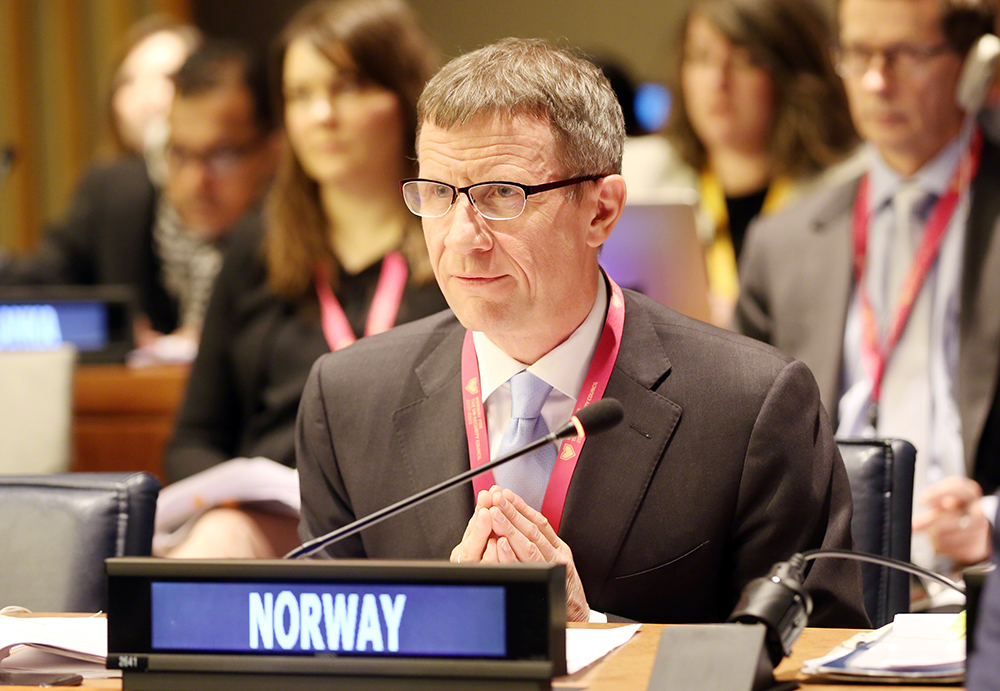

L-R: Velentina Germani, Stephanie Ierino, and Marco Boccia, UN Division for Ocean Affairs and the Law of the Sea (UNDOALOS)
Highlights for Wednesday, 27 March 2019
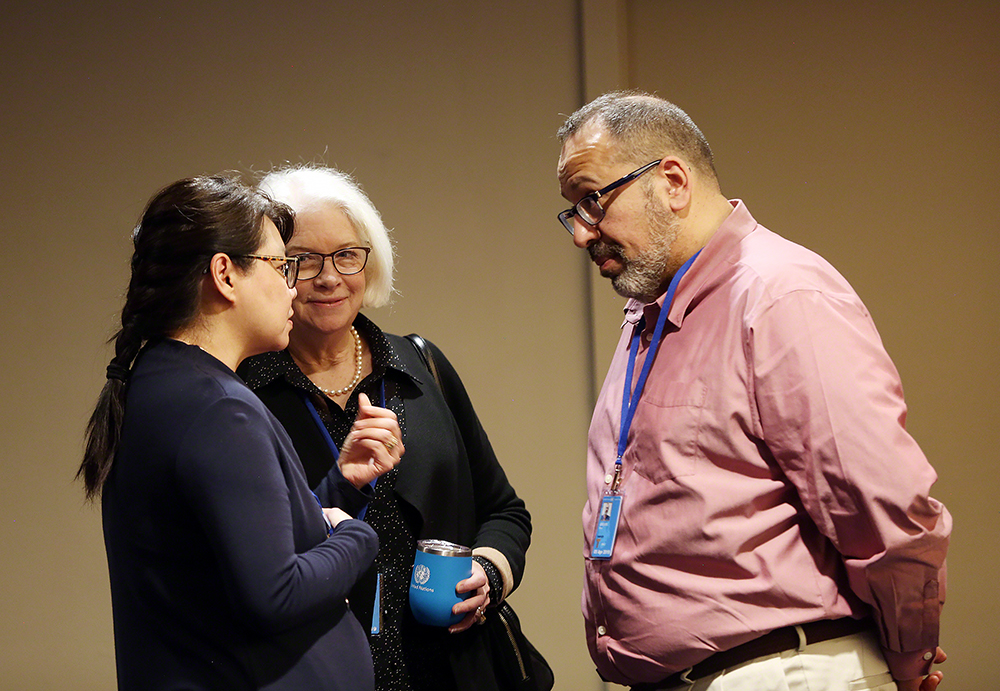
Delegates attending the second session of the Intergovernmental Conference (IGC) on the conservation and sustainable use of marine biodiversity of areas beyond national jurisdiction (BBNJ) met on Wednesday, March 27, 2019 in an informal working group to finalize their initial consideration of marine genetic resources (MGRs) and initiate discussions on area-based management tools (ABMTs).
Under ABMTs, they discussed elements related to the process of identifying areas requiring management.
During the lunch break, three side-events were held on:
• “Exploring options for fostering conservation and sustainable use of the ocean through access and benefit sharing of marine genetic resources of areas beyond national jurisdiction: engagement of multi-stakeholders, including the private sector, for informed decision making,” presented by France;
• “Facilitating Capacity Development, Transfer of Marine Technology and Ocean Science in BBNJ,” presented by the Intergovernmental Oceanographic Commission of the UN Educational, Scientific and Cultural Organization (UNESCO); and
• “So far, yet so close: Ecological connectivity between ABNJ and territorial waters,” presented by the International Institute for Environment and Development (IIED).
In the corridors, some developing countries felt slighted by calls to ignore the intent of marine scientific research. “A small bucket of seawater can yield millions of benefits, monetary and otherwise,” claimed one, noting that technological developments need broad coverage if the ILBI is to succeed in promoting the fair and equitable sharing of benefits arising from MGRs in ABNJ.
For extensive details on the day’s negotiations and to hear what delegates said in the corridors, see our daily Earth Negotiations Bulletin.
+ Visit the web coverage for Wednesday, 27 March 2019
IISD Reporting Services, through its Earth Negotiations Bulletin (ENB) Meeting Coverage, has provided daily web coverage, daily reports, and a summary and analysis report from BBNJ IGC 2. The summary and analysis report is now available in HTML and PDF.
Photos by IISD/ENB | Francis Dejon
For photo reprint permissions, please follow instructions at our Attribution Regulations for Meeting Photo Usage Page.
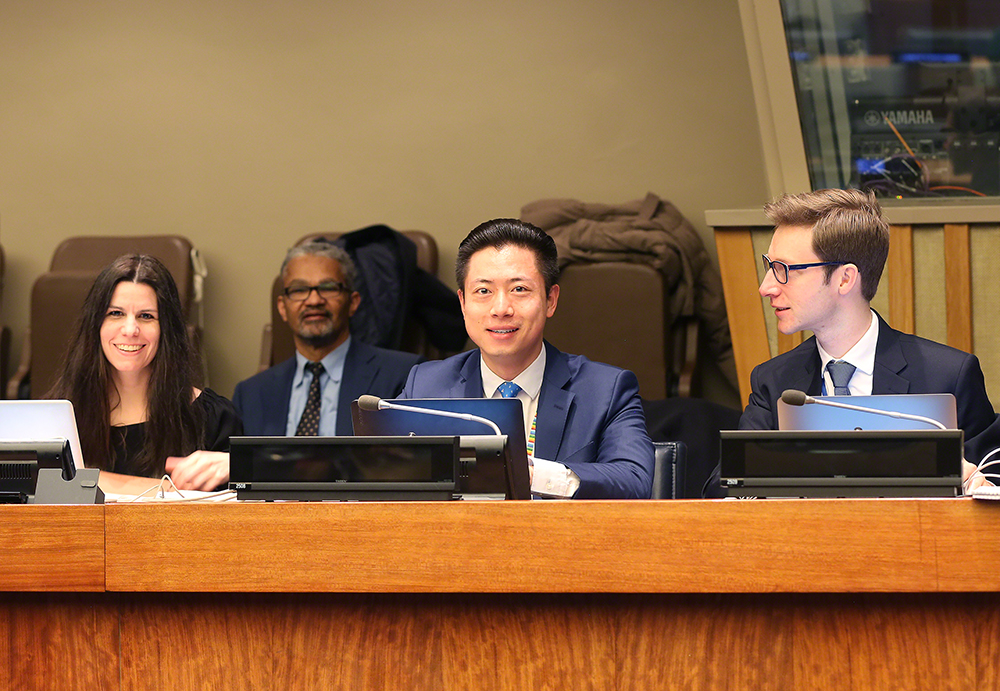
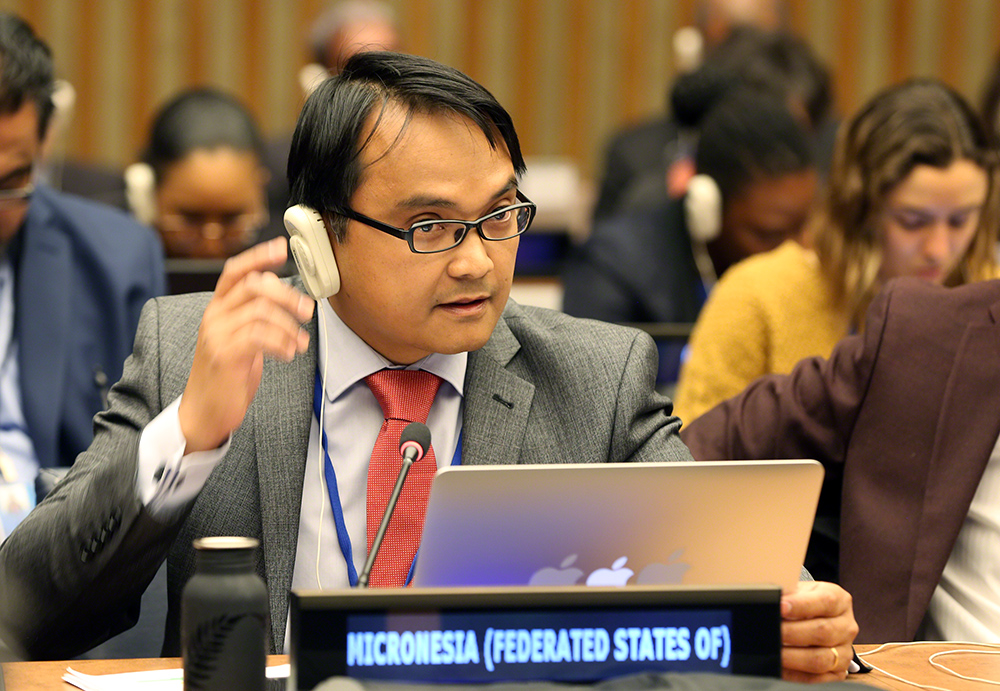
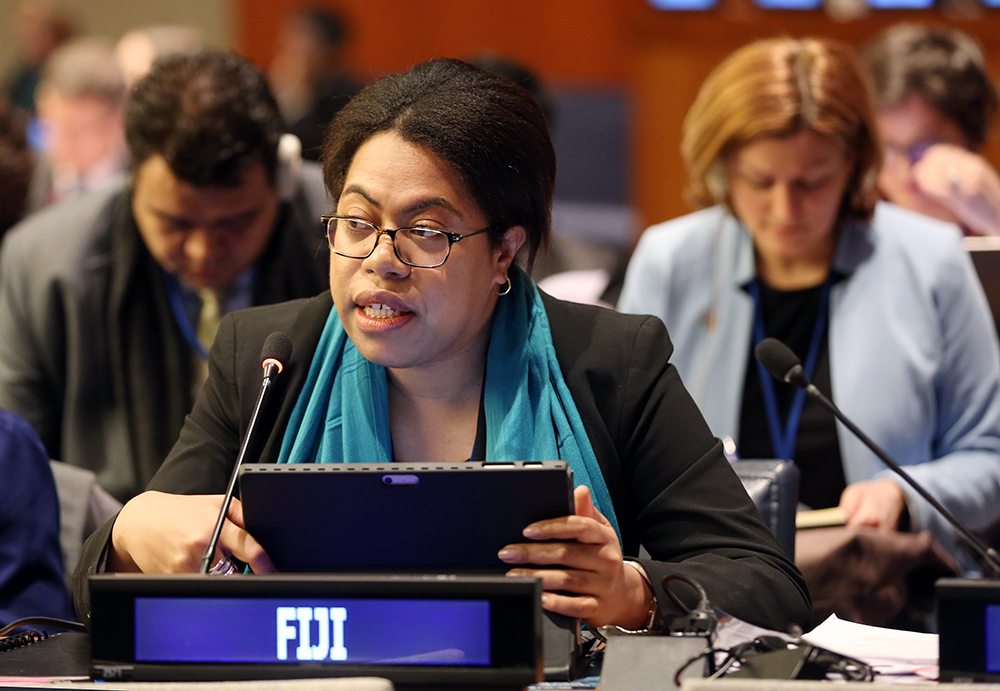
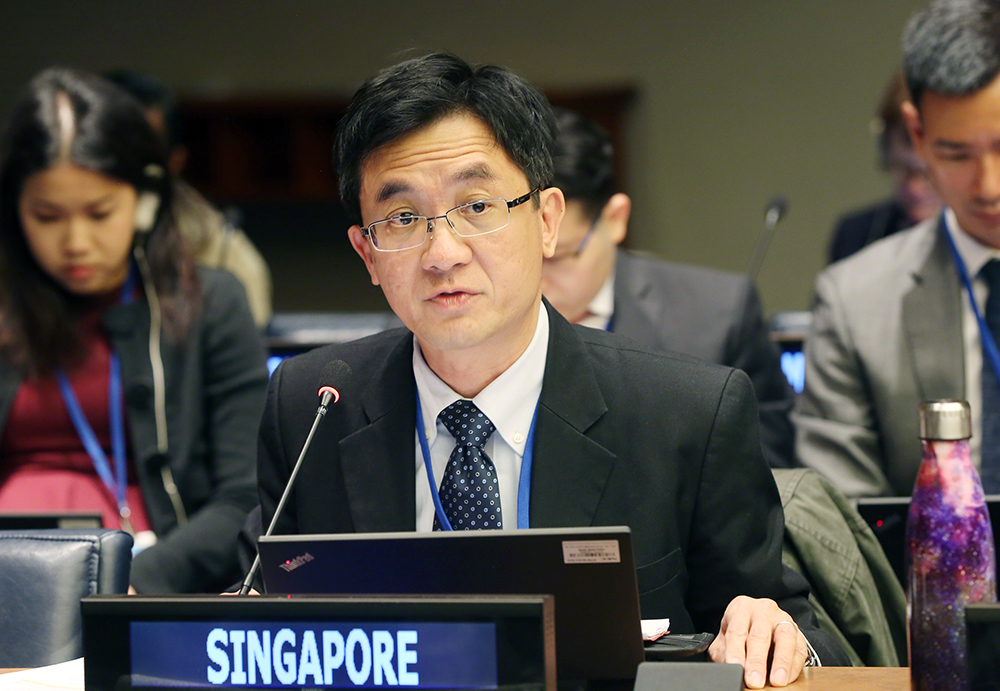
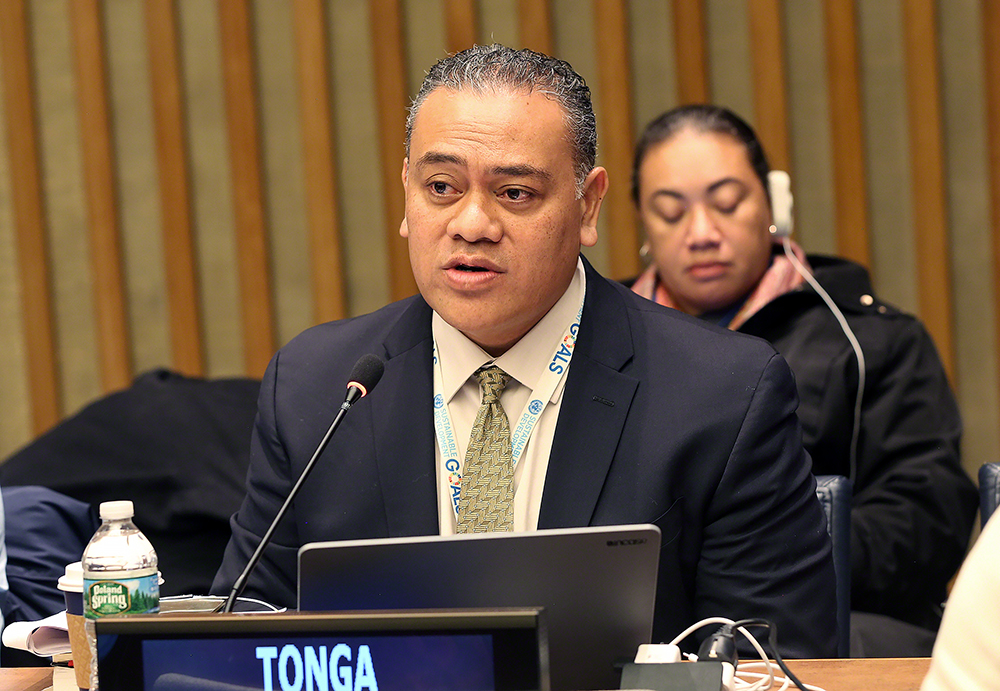
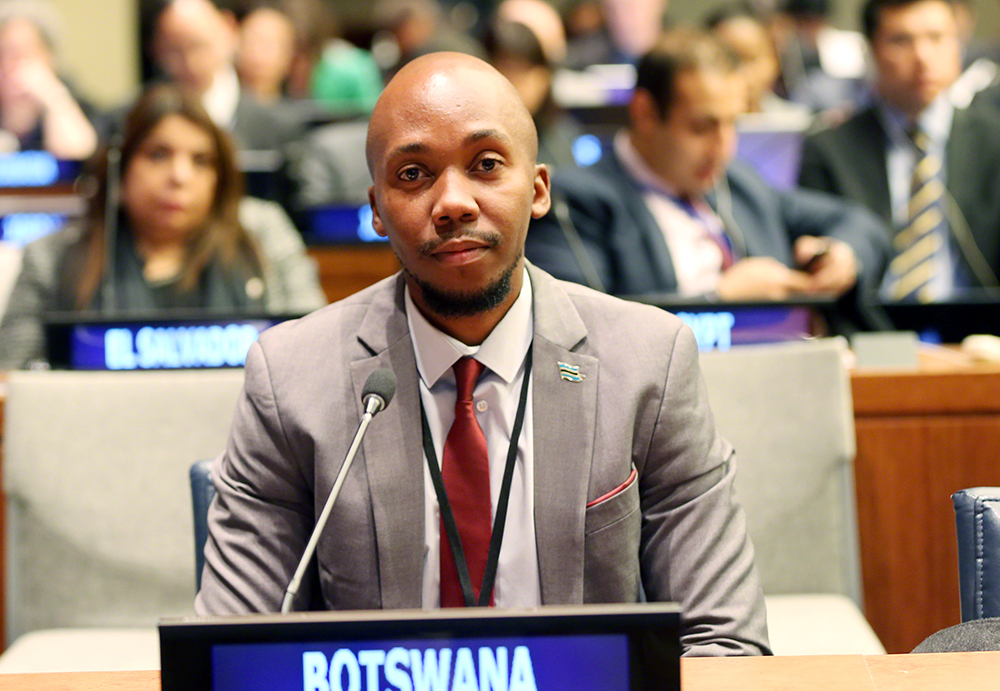
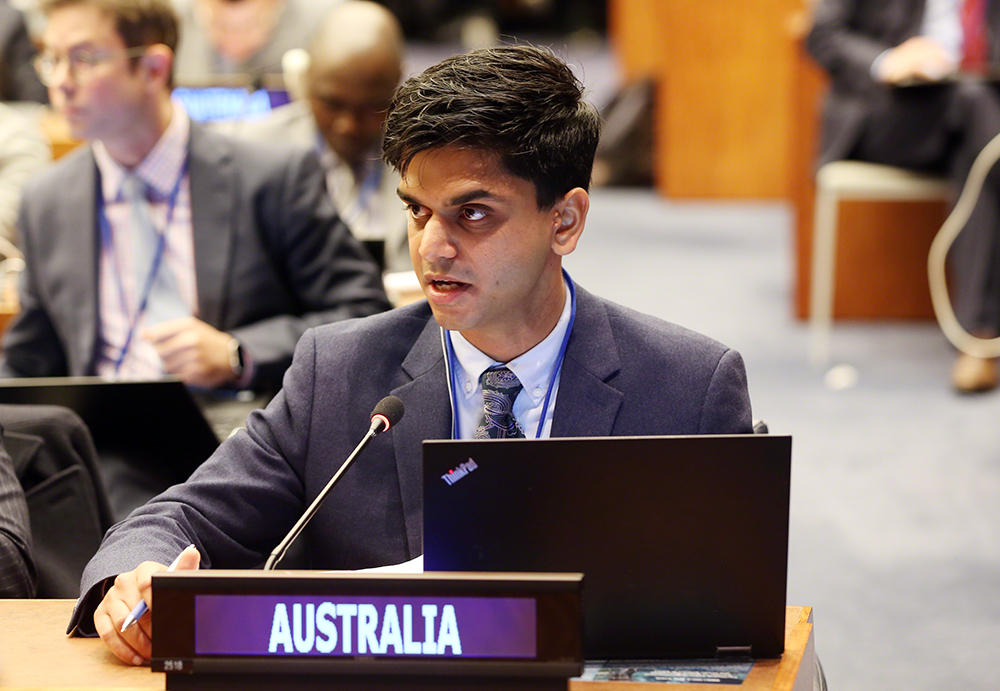
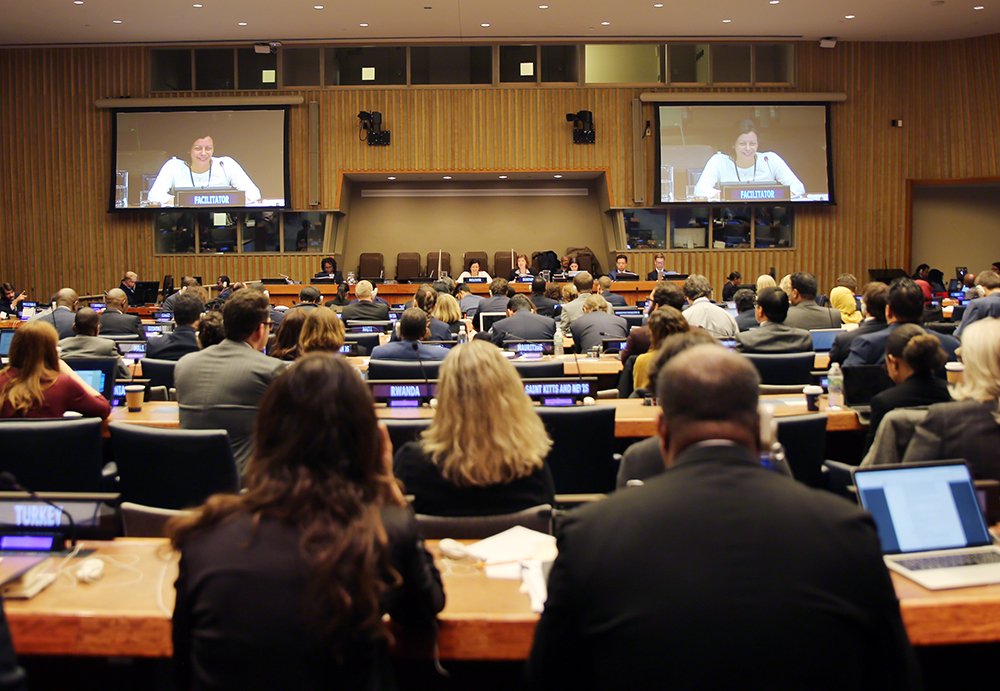
Highlights for Tuesday, 26 March 2019
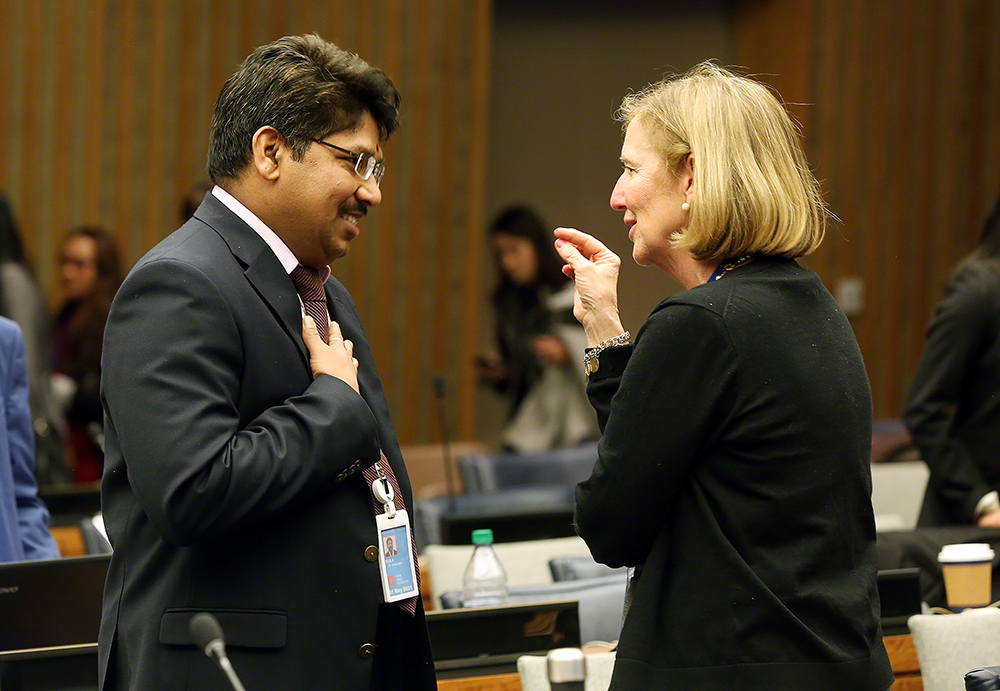
Delegates attending the second session of the Intergovernmental Conference (IGC) on the conservation and sustainable use of marine biodiversity of areas beyond national jurisdiction (BBNJ) convened for a second day on Tuesday, March 26, 2019. They met in an informal working group to consider issues related to marine genetic resources (MGRs), discussing:
• objectives, principles and approaches;
• types of benefits to be shared, specifically whether these would be monetary and/or non-monetary;
• benefit-sharing modalities, including if benefits would be shared on a voluntary or other basis, and by whom;
• the need for, and role of, a clearinghouse mechanism;
• intellectual property rights (IPRs);
• monitoring the utilization of MGRs;
• access to MGRs; and scope
• and scope.
During the lunch break, two side-events were held: “Twenty-five years of International Seabed Authority (ISA’s) contribution to applying holistic approach to the protection of the marine environment in the Area,” presented by ISA, and “BBNJ Capacity Development in the Context of Climate Change,” presented by International Coastal and Ocean Organization.
In the corridors, some delegations voiced their frustrations on the correct forum to discuss IPRs related to benefit-sharing, pointing to the number of fora charged with addressing these rights, but the lack of tangible progress on the issue over the years.
For extensive details on the day’s negotiations and to hear what delegates said in the corridors, see our daily Earth Negotiations Bulletin.
+ Visit the web coverage for Tuesday, 26 March 2019
IISD Reporting Services, through its Earth Negotiations Bulletin (ENB) Meeting Coverage, has provided daily web coverage, daily reports, and a summary and analysis report from BBNJ IGC 2. The summary and analysis report is now available in HTML and PDF.
Photos by IISD/ENB | Francis Dejon
For photo reprint permissions, please follow instructions at our Attribution Regulations for Meeting Photo Usage Page.
Informal Working Group on Marine Genetic Resources
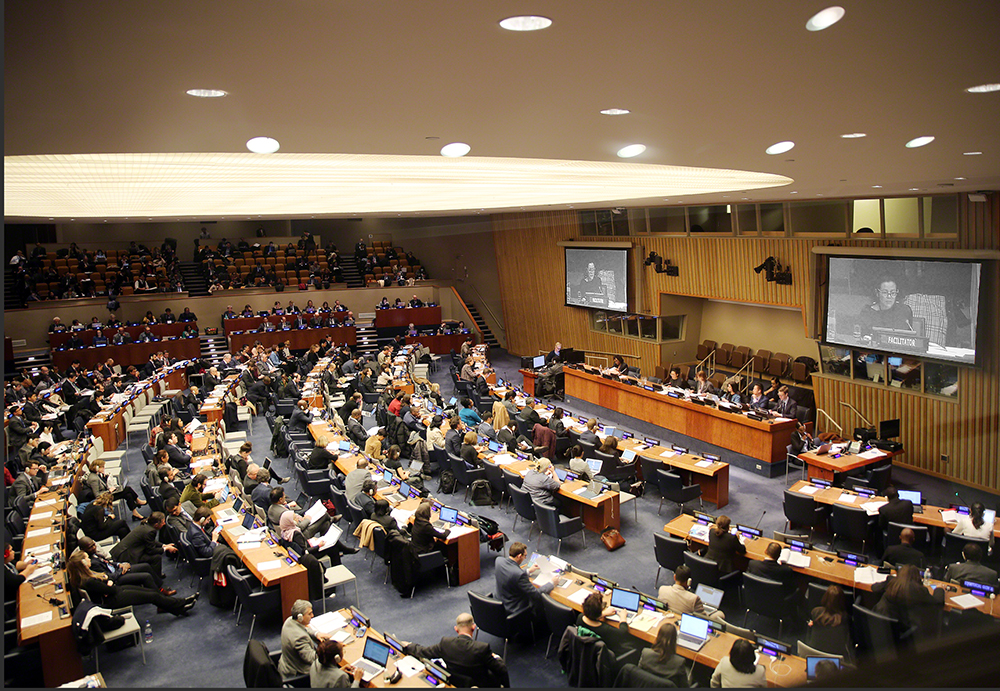
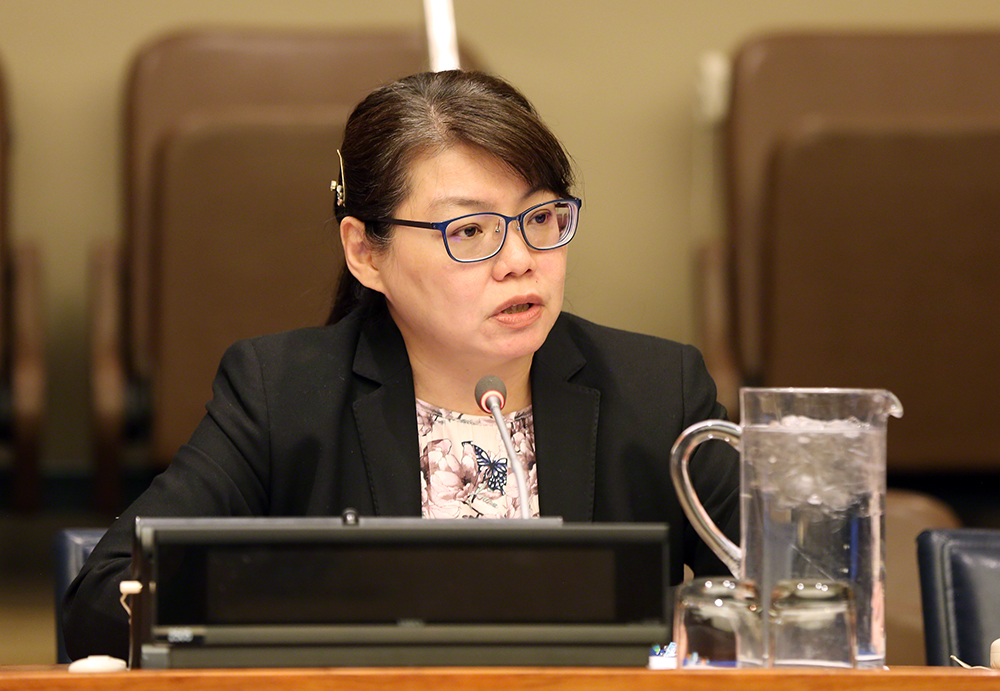
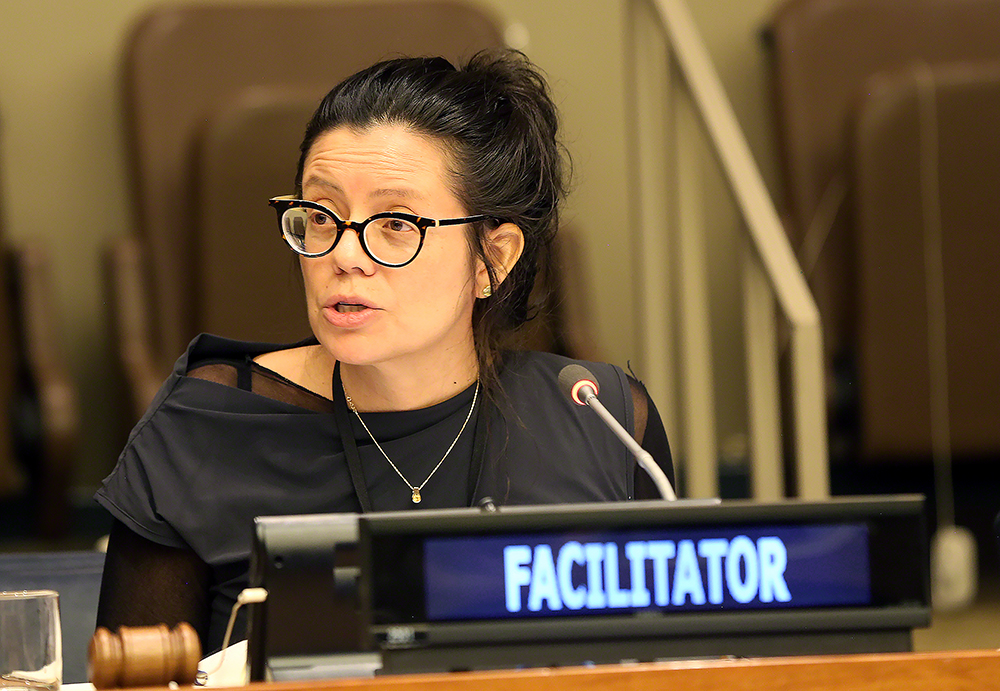
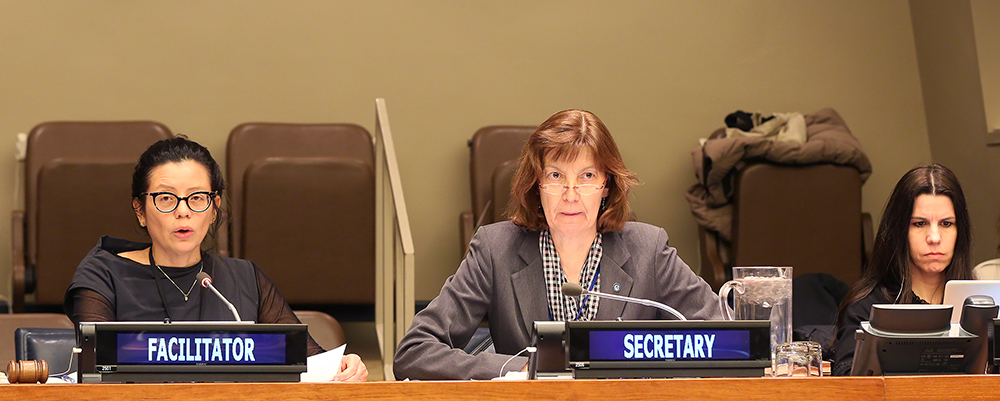
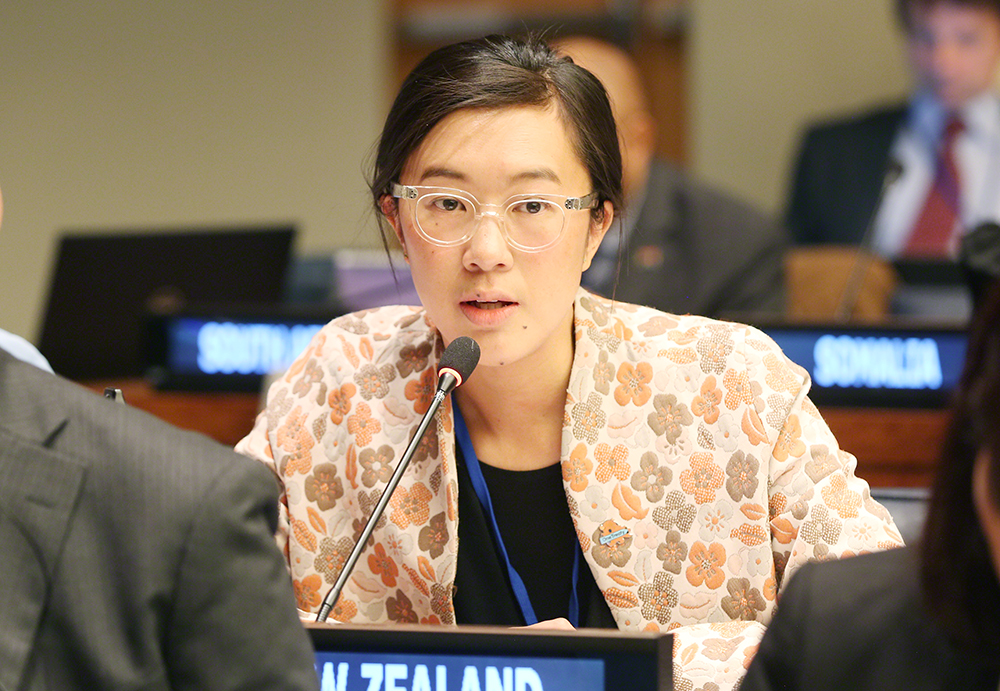
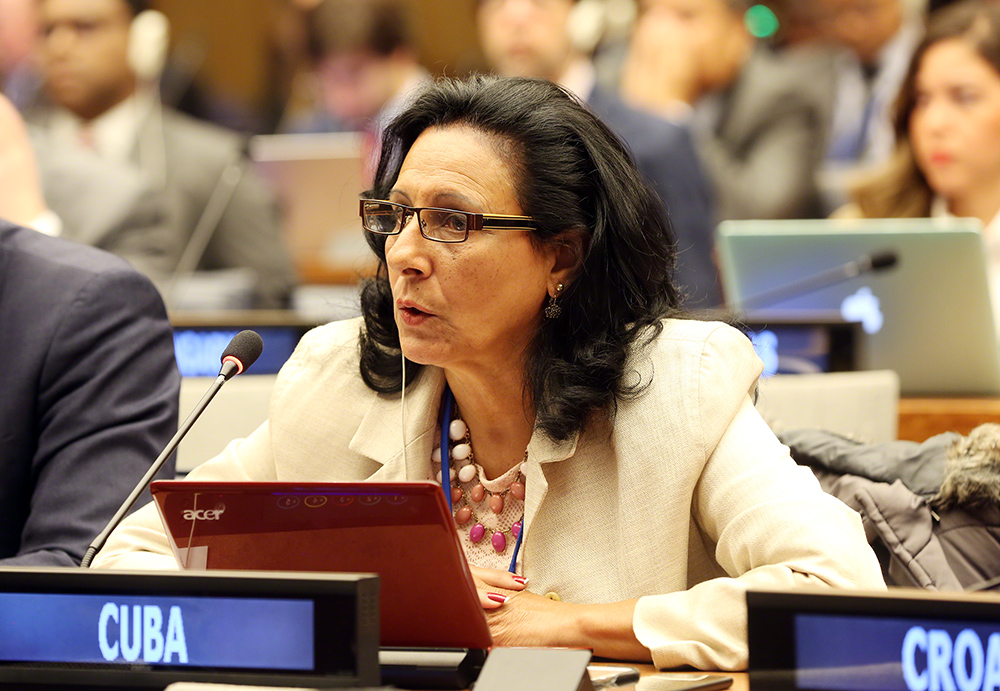
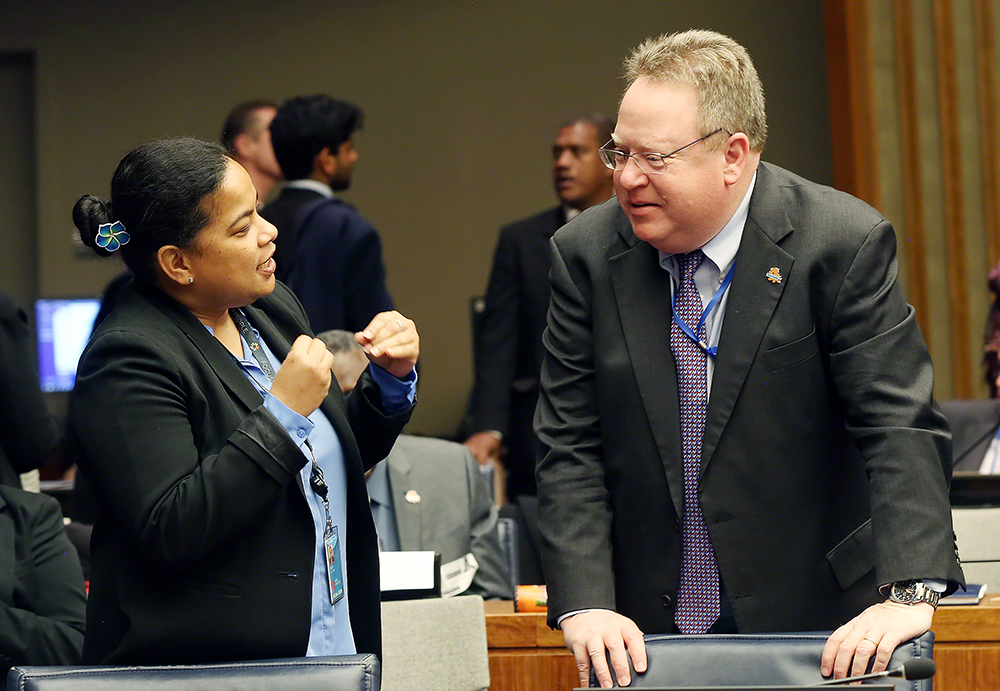
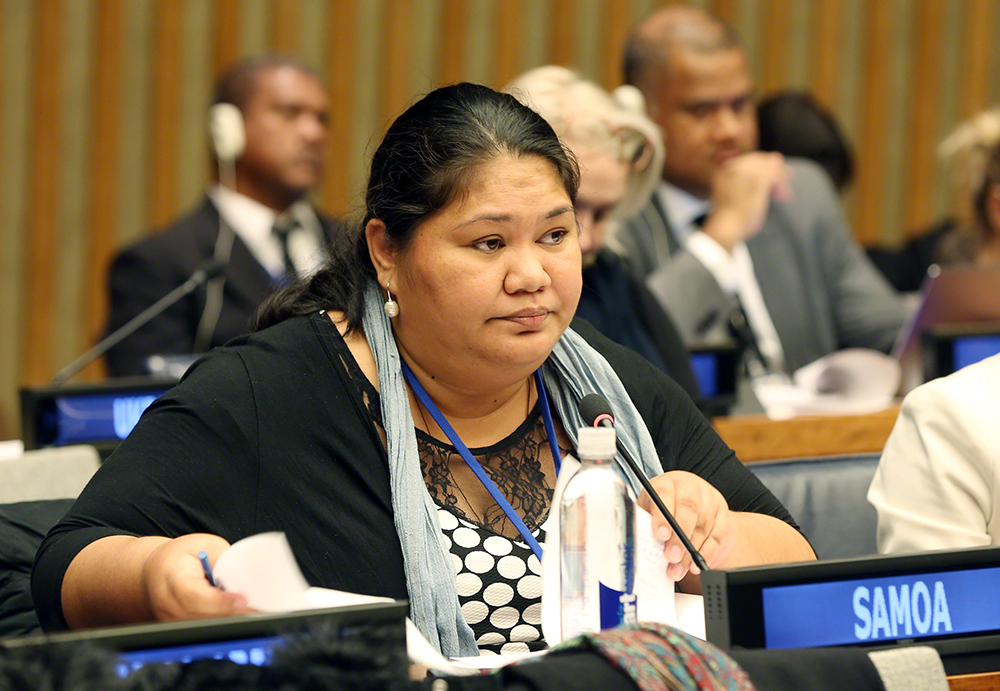
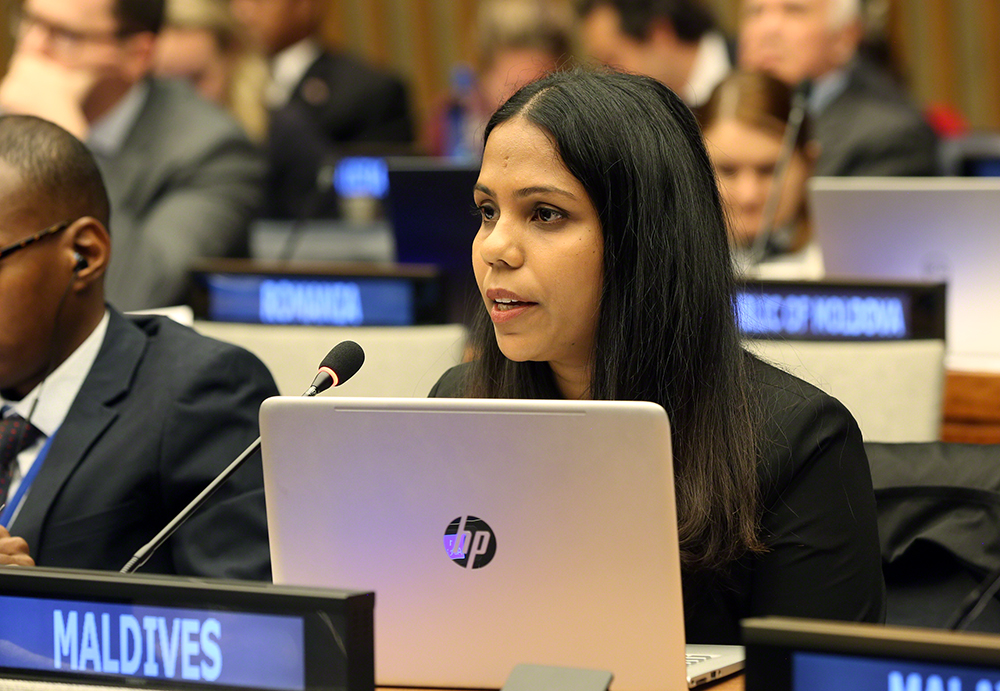
Highlights for Monday, 25 March 2019
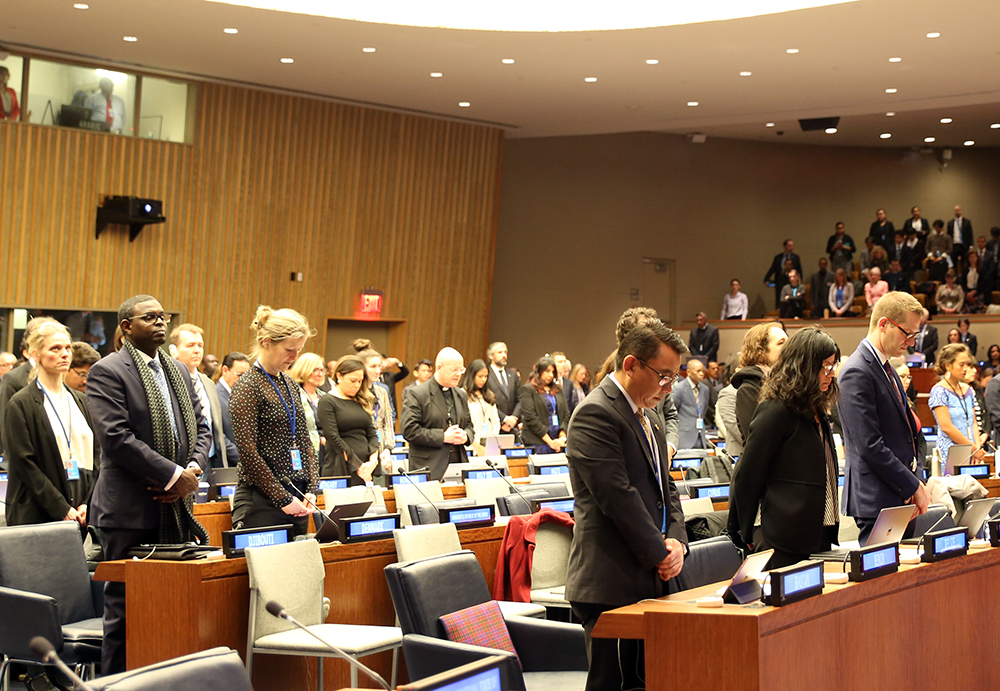
The second session of the Intergovernmental Conference (IGC) on an international legally binding instrument (ILBI) under the UN Convention on the Law of the Sea (UNCLOS) on the conservation and sustainable use of marine biodiversity of areas beyond national jurisdiction (BBNJ) opened on Monday, March 25, 2019.
Delegates first engaged in a general exchange of views, broadly related to the key features of an ILBI, including their priorities based on issues to be discussed as contained in the President’s Aid to Negotiations. They then began their deliberations on the President’s Aid, focusing their attention on benefit-sharing in relation to marine genetic resources.
During the lunch break, two side-events were held: “Towards an Effective High Seas Treaty: Building on and Strengthening Regional Ocean Governance” presented by Germany and the STRONG High Seas Project; and "No fish left behind: fisheries under BBNJ” presented by the Nippon Foundation.
In the corridors, many participants agreed that the President’s Aid to Negotiations is inclusive and helpful in driving the negotiations forward. Some expressed concern about gaps in the options laid out in the document, stressing that these will need to be covered during the following two weeks, if future treaty text is to be comprehensive.
For extensive details on the day’s negotiations and to hear what delegates said in the corridors, see our daily Earth Negotiations Bulletin.
+ Visit the web coverage for Monday, 25 March 2019
IISD Reporting Services, through its Earth Negotiations Bulletin (ENB) Meeting Coverage, has provided daily web coverage, daily reports, and a summary and analysis report from BBNJ IGC 2. The summary and analysis report is now available in HTML and PDF.
Photos by IISD/ENB | Francis Dejon
For photo reprint permissions, please follow instructions at our Attribution Regulations for Meeting Photo Usage Page.

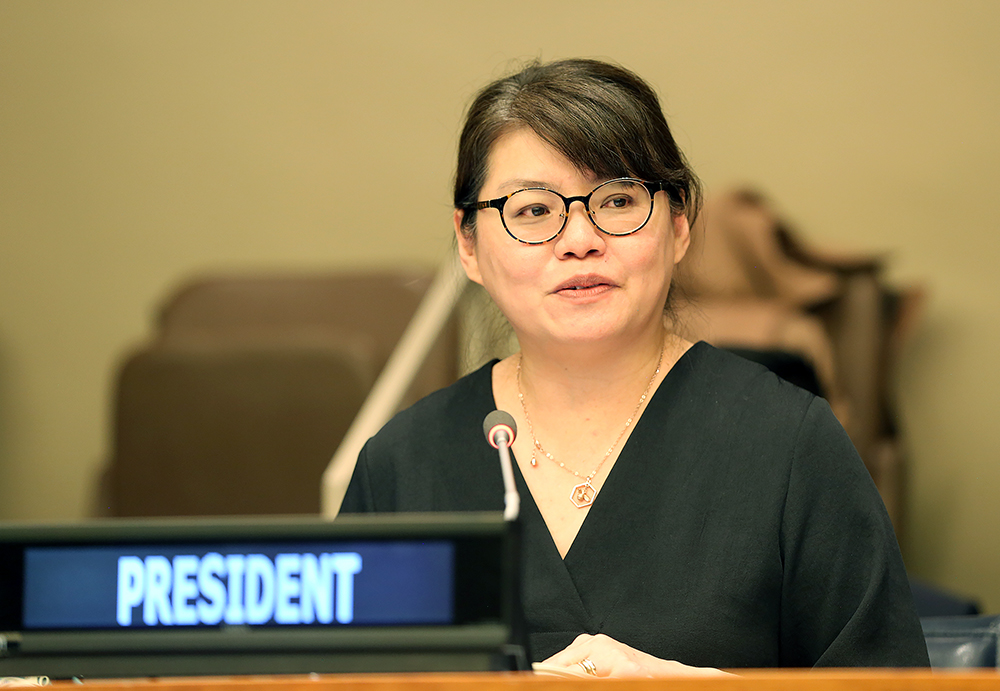
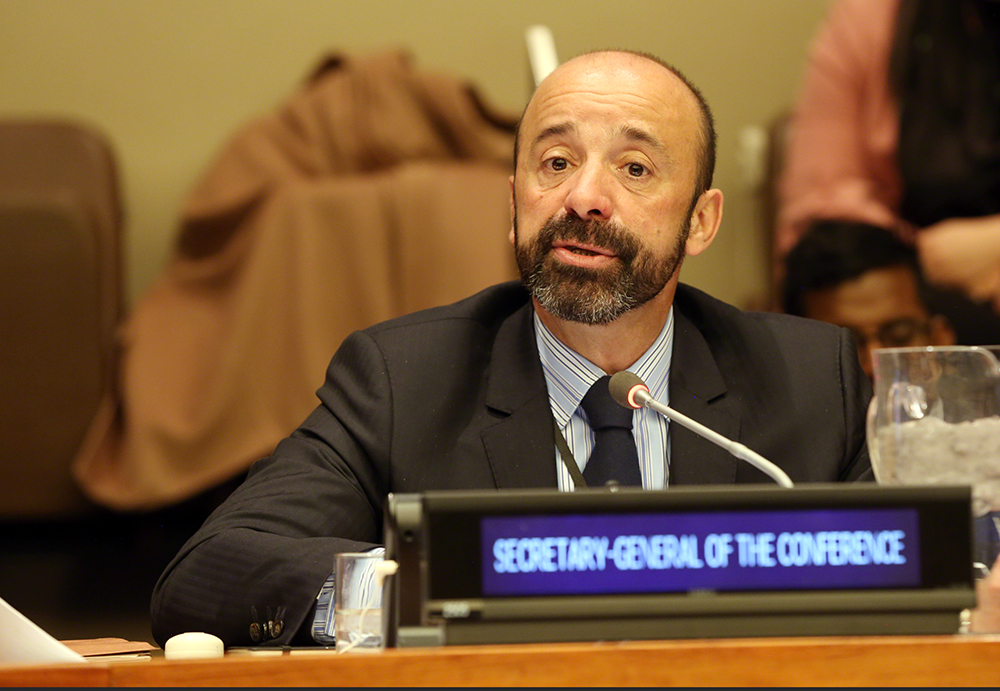
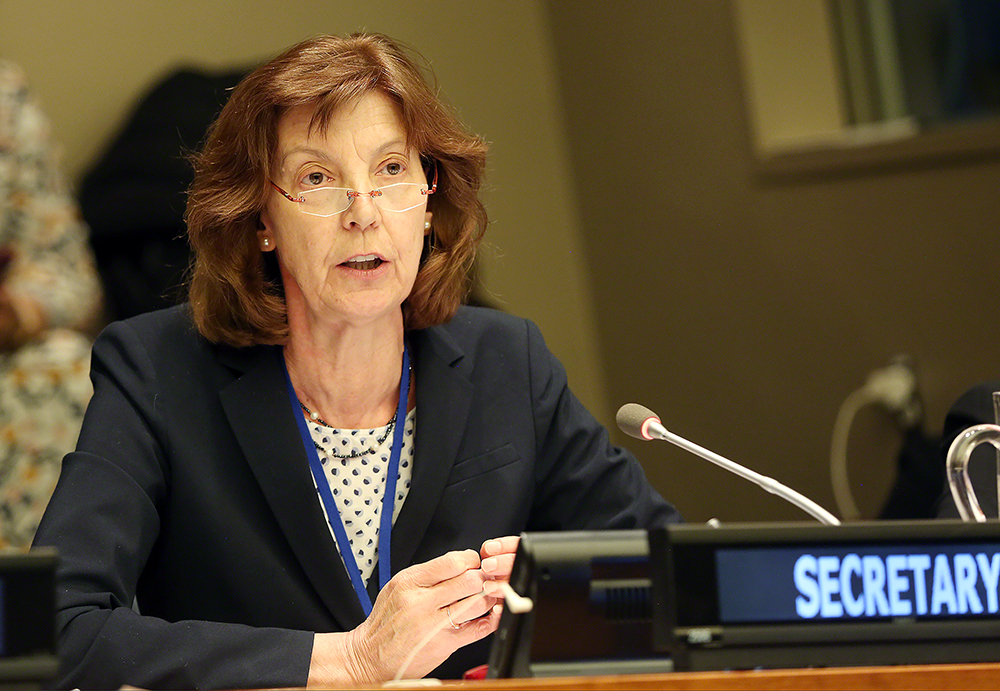
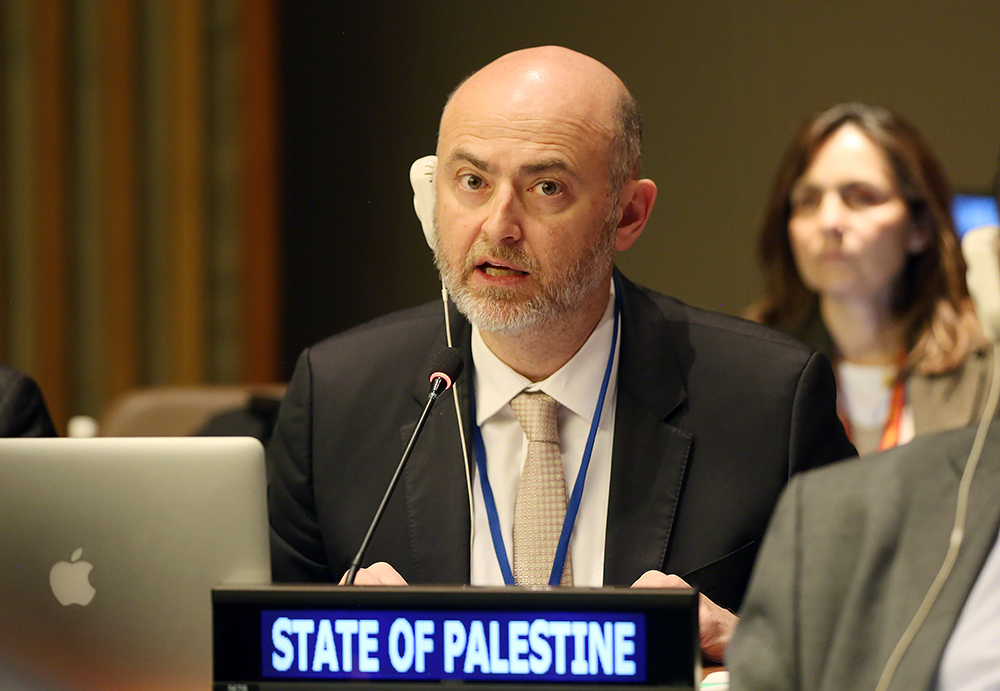
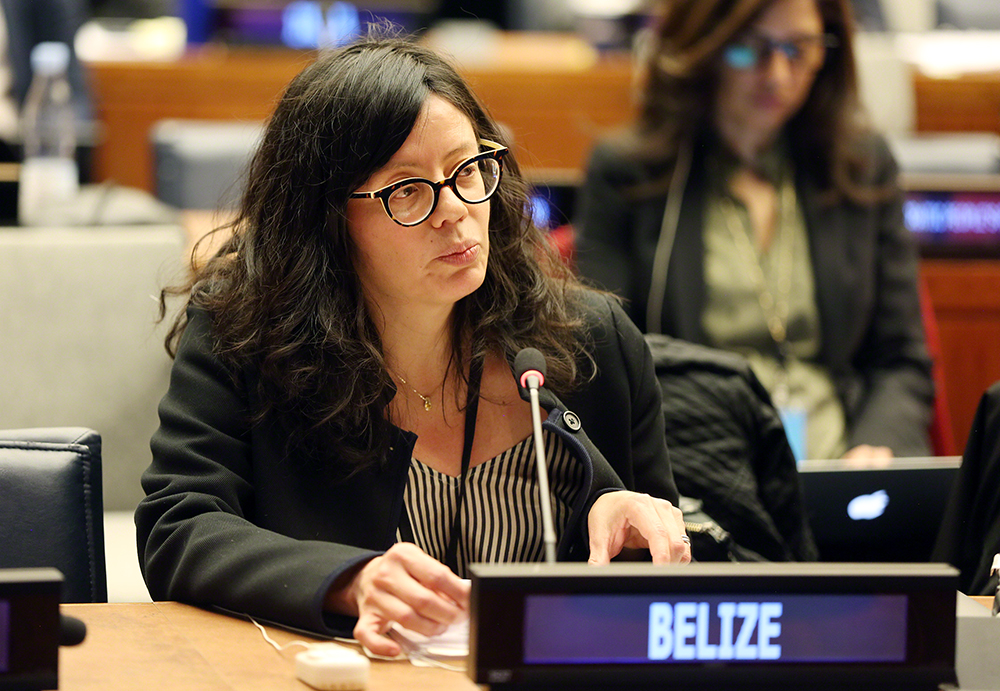
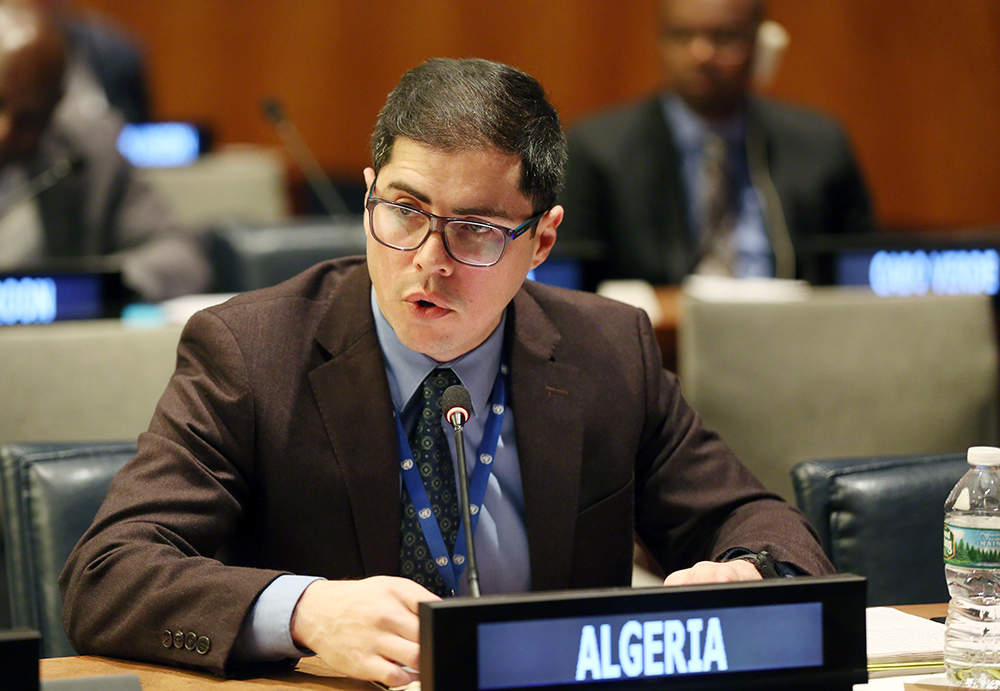

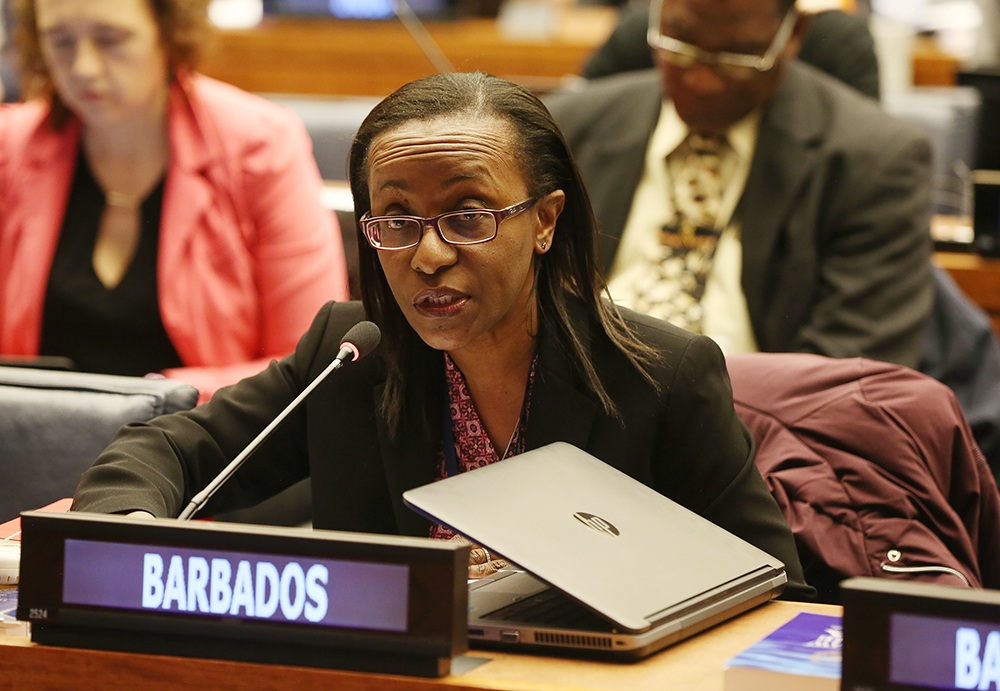
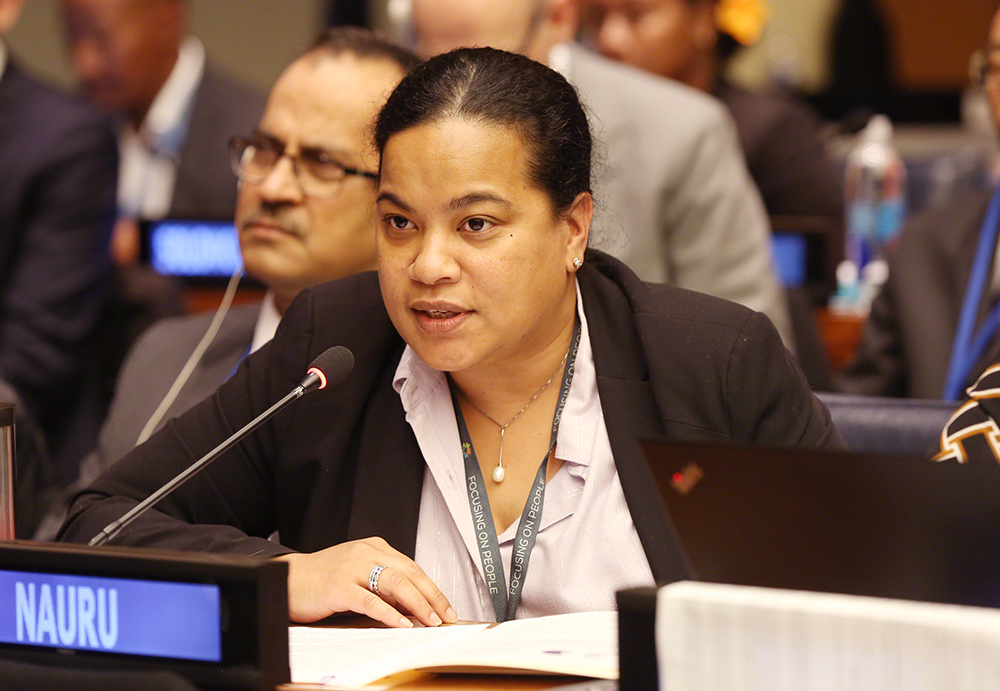
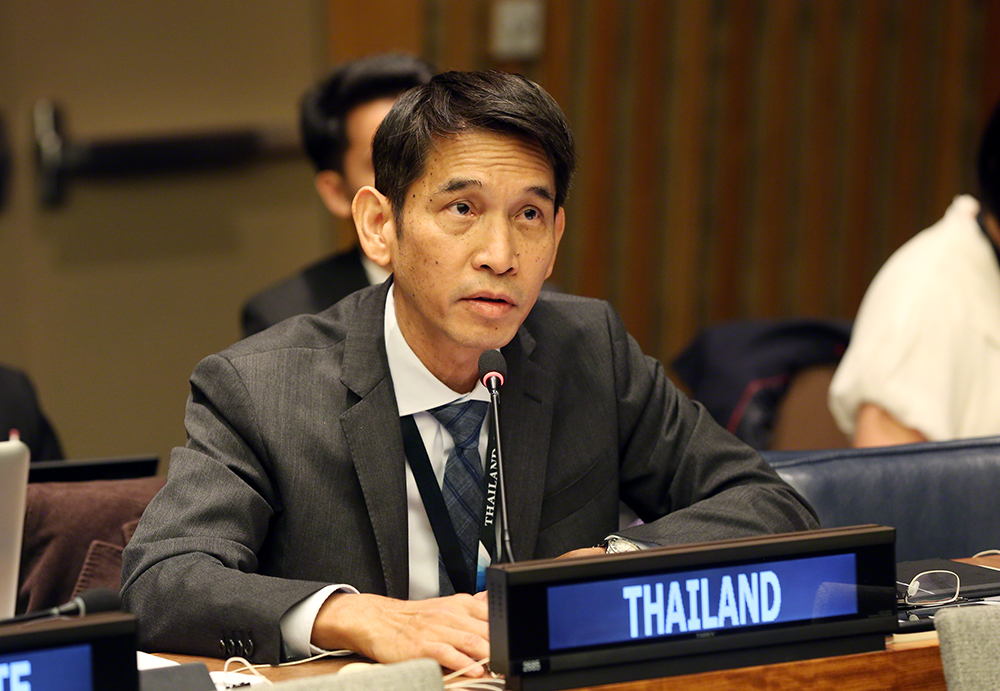
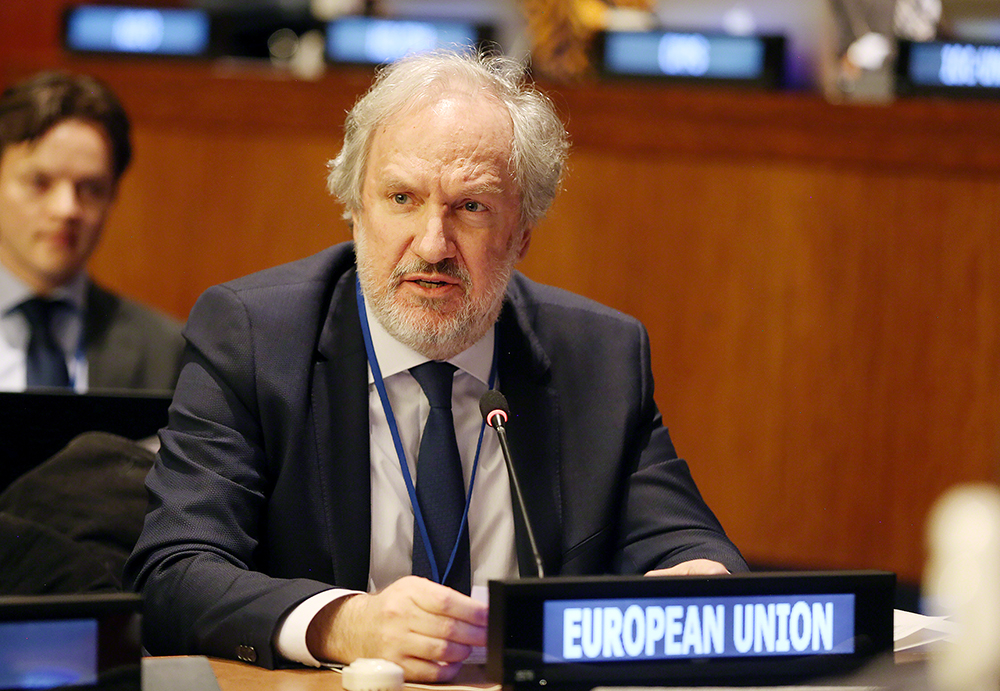
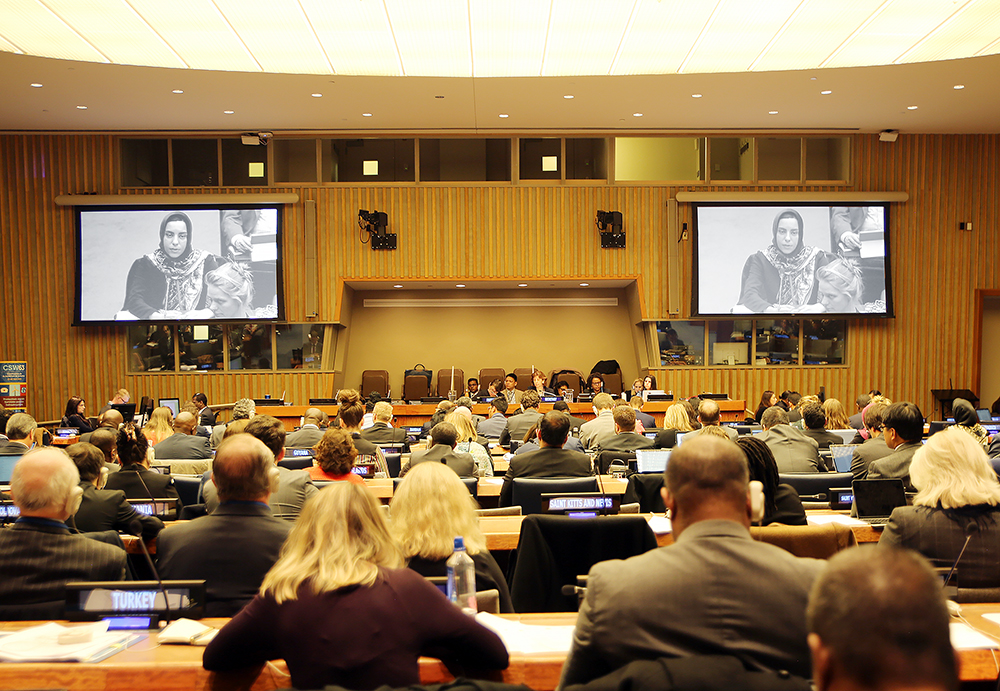
BBNJ IGC 2 Resources
- BBNJ IGC 2 Website and Documents
- BBNJ IGC 2 Provisional Agenda
- BBNJ IGC 2 Provisional Programme of Work
- President’s Aid to Negotiations
- BBNJ Website
IISD ENB/ENB+ Meeting Coverage
- 4th Meeting of the Open-Ended Committee of Permanent Representatives to UN Environment Programme (UNEP) and 4th Session of the UN Environment Assembly, 4-8 March and 11-15 March 2019, UNEP Headquarters, Nairobi, Kenya
- 1st Part of the 25th Annual Session of the International Seabed Authority (ISA), 25 February - 1 March 2019, Headquarters of the International Seabed Authority, Kingston, Jamaica
- 2018 UN Biodiversity Conference, 14-29 November 2018, Sharm El-Sheikh, Egypt
- BBNJ IGC 1, 4-17 September 2018, UN Headquarters, New York
- 2018 High-Level Political Forum (HLPF 2018), 9-18 July 2018, UN Headquarters, New York
- ENB Coverage of Oceans Meetings
IISD Resources
- OCEANS-L - A Mailing List for News and Announcements on Oceans Policy Issues
- SDG - A Mailing List for News on Sustainable Development Policy
- SDG Update Newsletter - A compilation of news, commentary and upcoming events published on the SDG Knowledge Hub
- SDG Knowledge Hub - An Online Resource Center for News and Commentary Regarding the Implementation of the United Nations’ 2030 Agenda for Sustainable Development, including all 17 Sustainable Development Goals (SDGs)
- Linkages Update - International Environment and Sustainable Development News
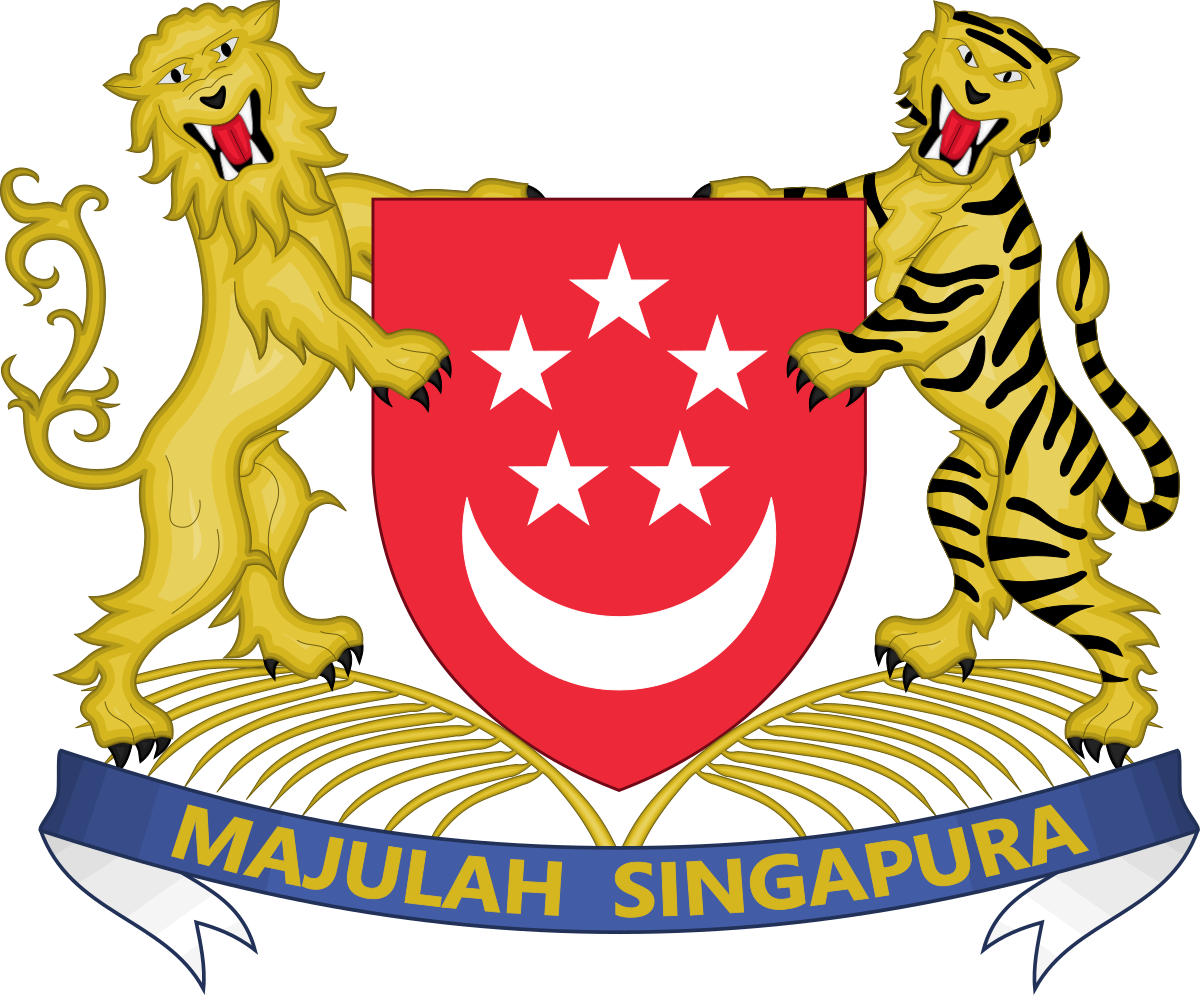
 Specific funding for IISD Reporting Services coverage of BBNJ IGC 2 has been provided by the Government of the Republic of Singapore and the European Union
Specific funding for IISD Reporting Services coverage of BBNJ IGC 2 has been provided by the Government of the Republic of Singapore and the European Union